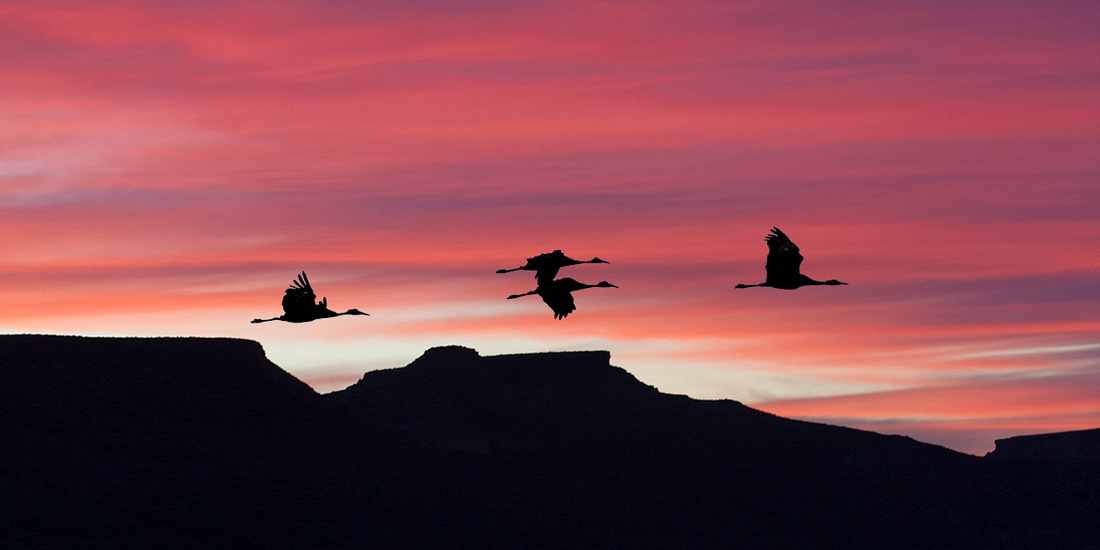Welcome to my blog. My goal for the blog is to provide a venue for sharing information, photos, and stories related to wildlife species behavior, biology, and life history. Additionally, I hope to provide information related to wildlife photography techniques and issues from time to time.
Enjoy.
South Florida - March 2017
We had the pleasure of visiting south Florida between March 13 and March 24, 2017. We enjoyed beautiful clear and relatively warm days with only minor precipitation. This was our 5th trip to Florida and certainly one of the best. We visited many of the same venues as on previous trips, but also explored a few new ones. We flew into Fort Lauderdale on the evening of March 13th. After we picked up our rental car, we drove across the state to Fort Meyers on the gulf coast. We visited several locations on the gulf side over the next five days.
After a short night, we were up early and headed for Corkscrew Swamp Preserve (375 Sanctuary Road, Naples , Florida). This Audubon site boasts a 2 mile-long boardwalk through the largest remaining old growth bald cypress stand in the U.S. This is a popular venue and an introduction to attempting boardwalk photography. Walkers induce vibration into the boardwalk and the images. A tripod on a narrow boardwalk is also a tripping hazard for the unwary, so I might have been better off with a monopod. They have at least two feeding stations which attract a number of species including painted bunting, northern cardinal, brown thrasher, ovenbird, and gray catbird. Like our previous trip to this location, very little water was present. However, these few gator holes were crowded with waders including roseate spoonbill, snowy egret, great egret, black-crowned night heron, wood stork, tricolored heron, white ibis, and little blue heron. A good sized alligator was actively feeding at one of the small holes and gave the crowd a few ah-ha moments when the gator emerged with a large crunchy turtle in his jaws. We observed a pair of barred owls perched together and had several swallow-tailed kites overhead. One of the owls gave us a nice flight show when he soared down from the nest tree and passed three feet over our heads in full light. That was the missed photo opportunity of the trip. We also picked up our first purple gallinule, one of my favorite southern species.
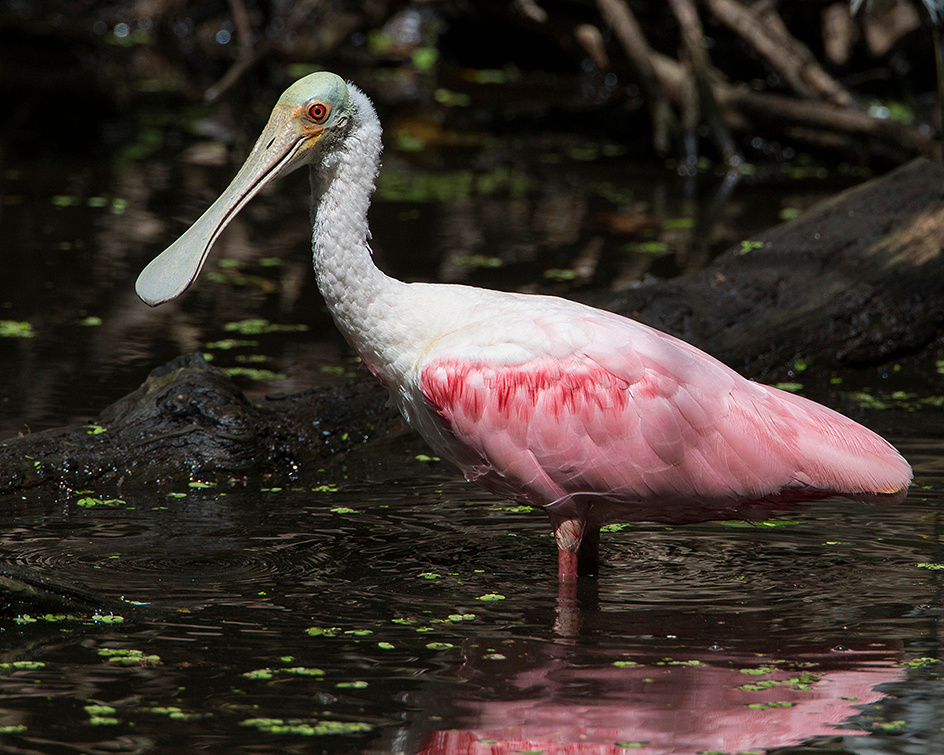

Roseate Spoonbill
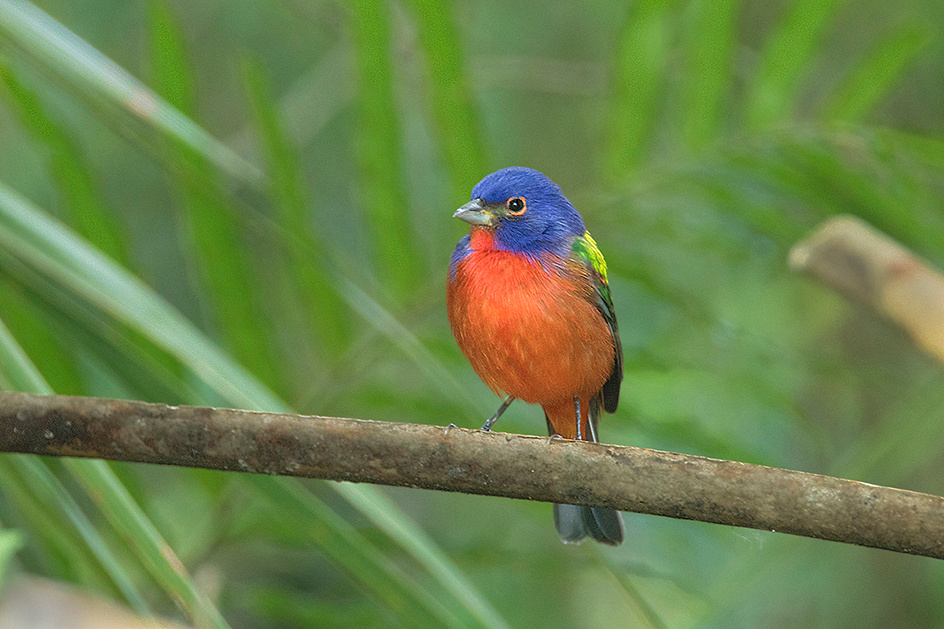

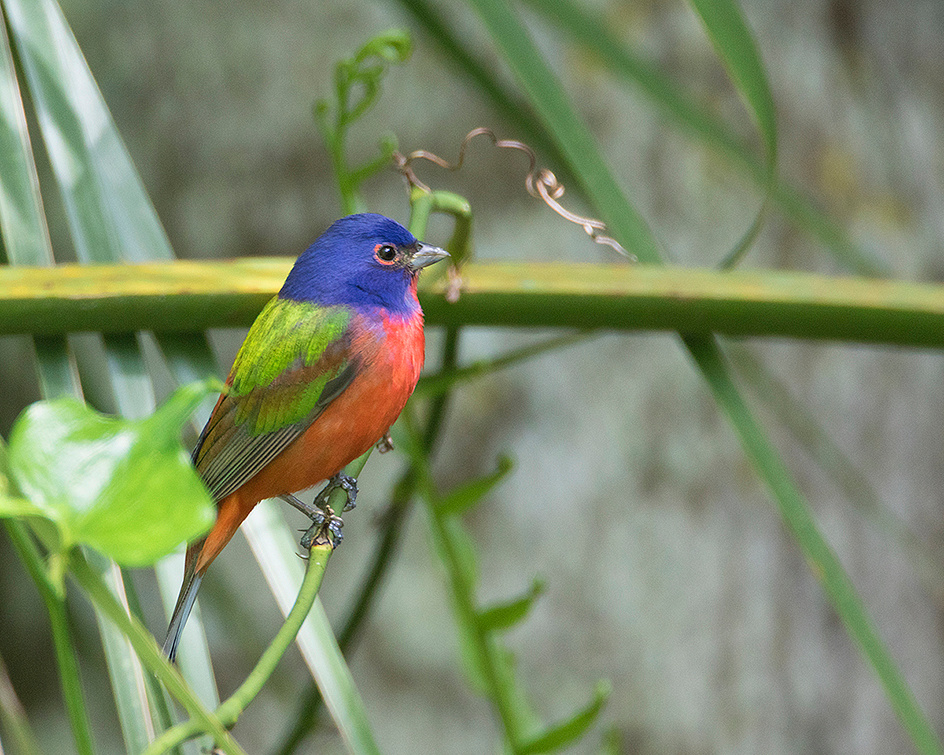
 Painted Bunting (Male)
Painted Bunting (Male)
Little Estero Lagoon was our next venue. This mangrove lined lagoon is located off Flamingo Road in Fort Meyers Beach. Fort Meyers Beach is a very popular venue for college-aged spring breakers. Fortunately, the breakers were largely still asleep in the early morning when we were concentrating on our photography. Even so, Fort Meyers Beach has a well documented traffic issue and after our morning shoot we crept back very slowly along the main road to the bridge. Little Estero Lagoon is a very popular venue for wildlife photographers and is frequently included in photo tours. On previous trips to this location in winter, we have had good luck photographing a wide variety of shorebirds, including piping plover, semi-palmated plover, willit, Wilson's plover, American avocet, black-bellied plover. Shorebirds were largely absent on this trip, so we concentrated on photographing cormorants, pelicans, ibis, herons, and egrets. Birds in south Florida are amazingly tame and full frame head shots on most species are possible at this location. I had my best opportunity on northern cardinal at this location. I recently purchased a Canon 7D2 camera and was able to use its improved autofocus to capture a few action and flight images. This location works as either a morning or evening photo venue. While the number and diversity of species was less than on previous trips, it is still a favorite photo location.
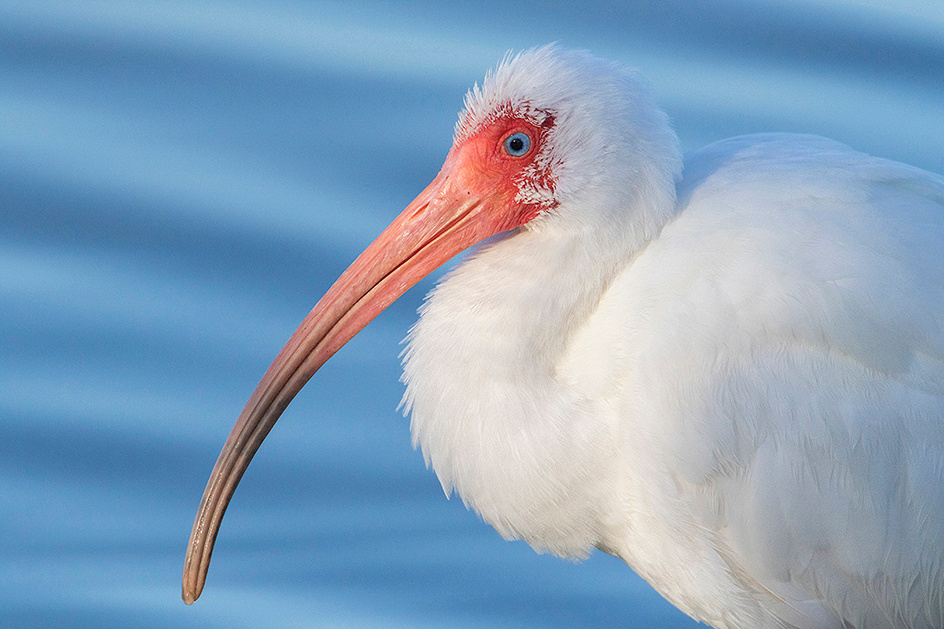


 White Ibis
White Ibis
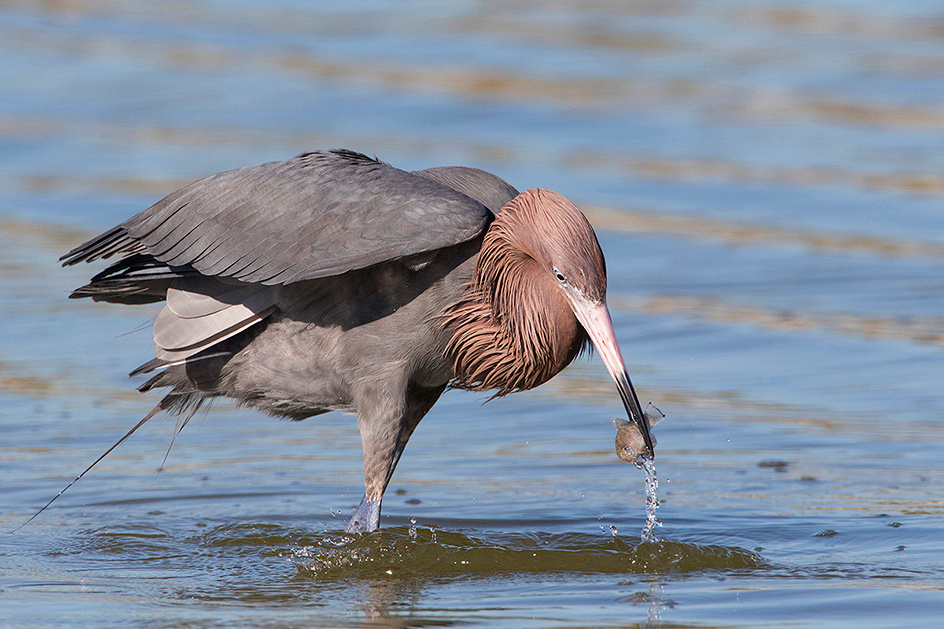

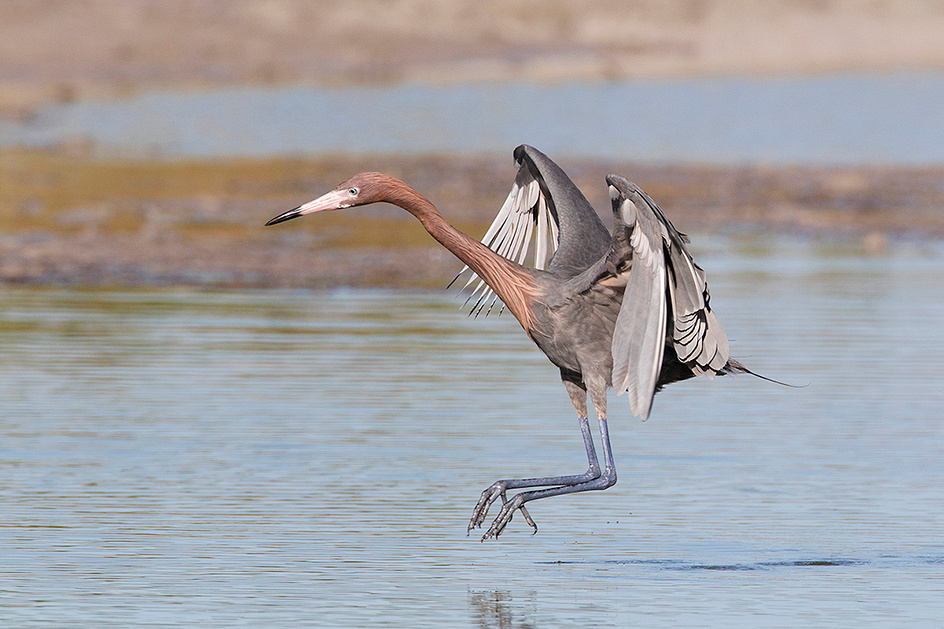
 Reddish Egret
Reddish Egret
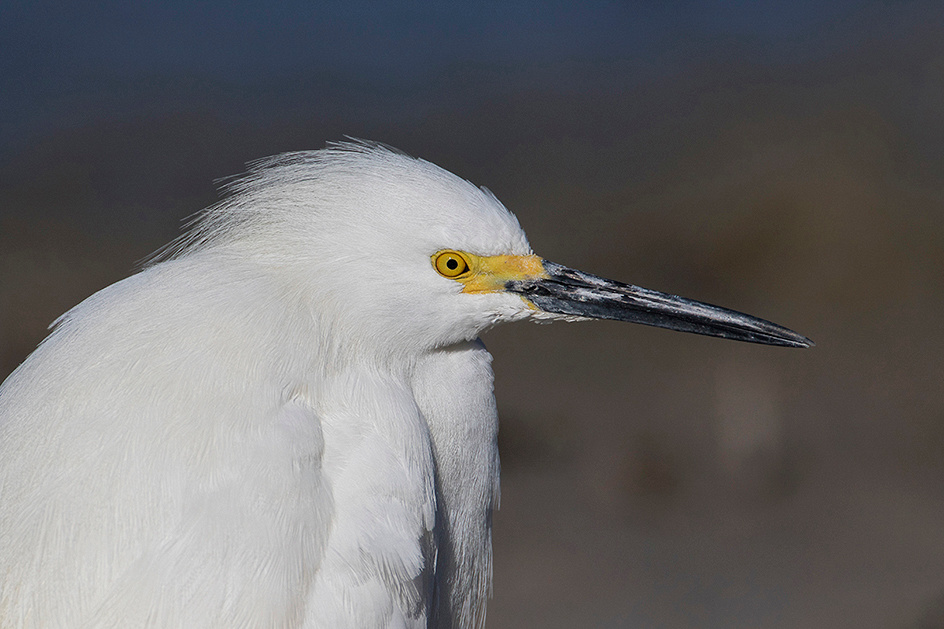
 Snowy Egret
Snowy Egret

 Mottled Duck
Mottled Duck

 Northern Cardinal
Northern Cardinal
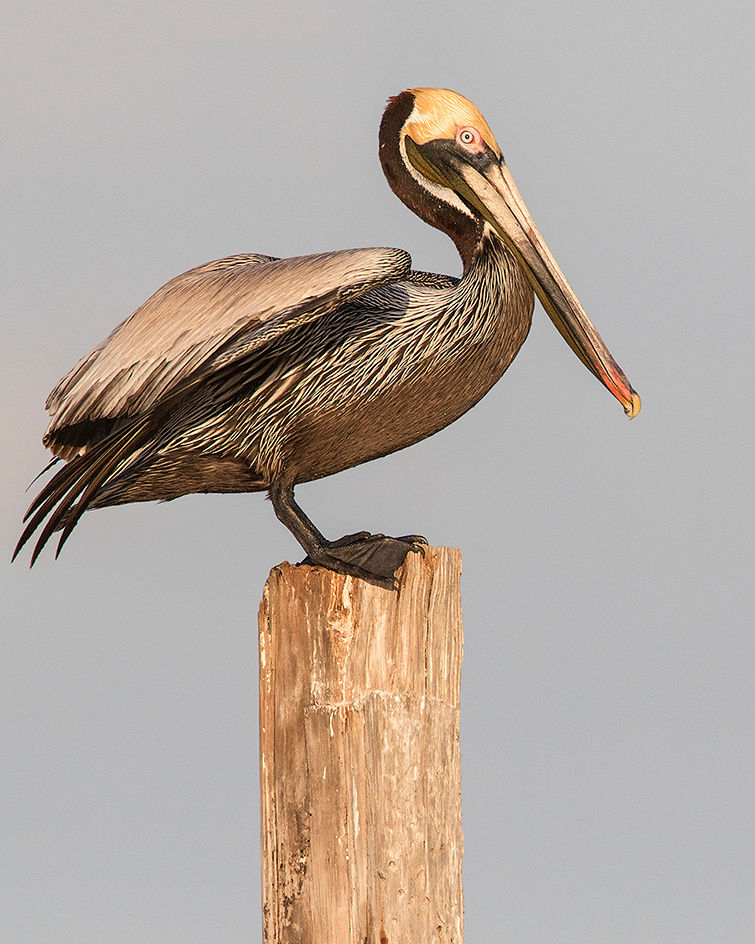

Brown Pelican
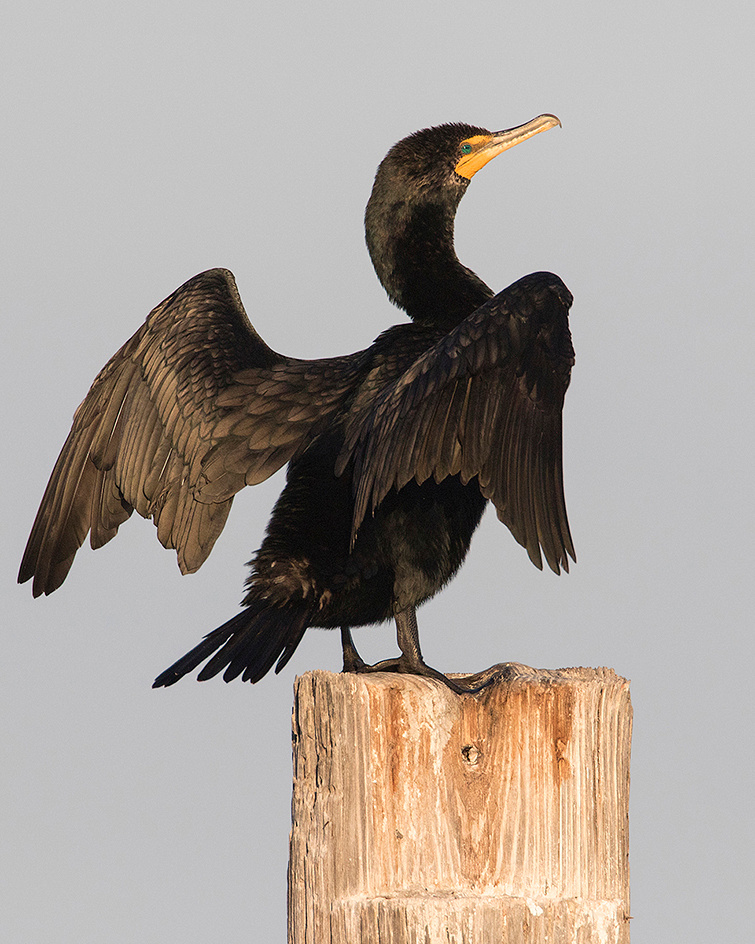

Double-Creasted Cormorant
After Little Estero Lagoon we headed to a new venue east of Naples. Shady Hollow Rookery (also called Corkscrew Marsh Ecosystem Watershed or CREW) has over 10 miles of excellent trails through a cypress stand, freshwater marsh and around a large lake. We were able to photograph a number of waders in the small pockets of water under a fairly closed canopy. This lighting produces some interesting images with the birds in the light against a very dark background.


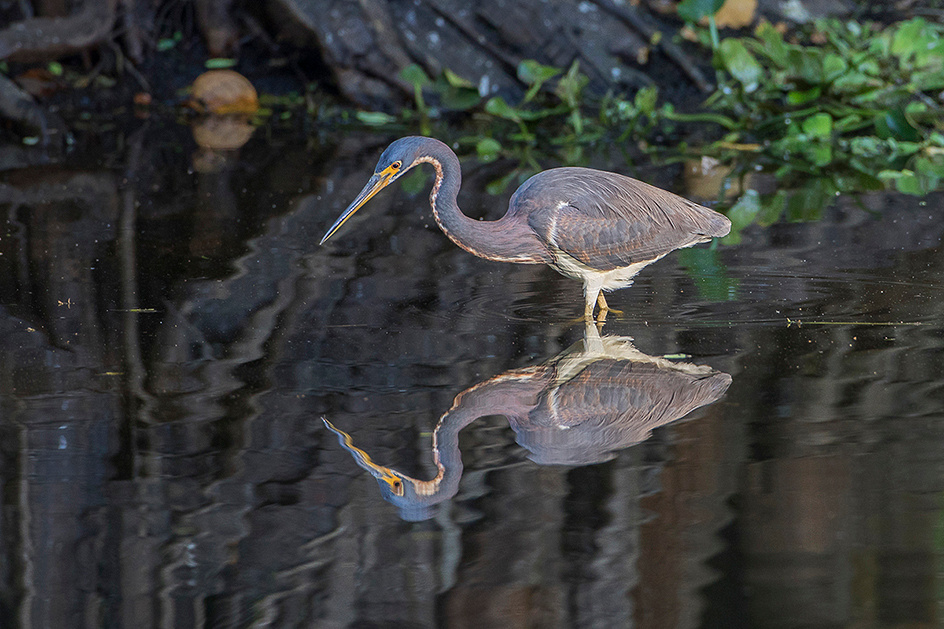

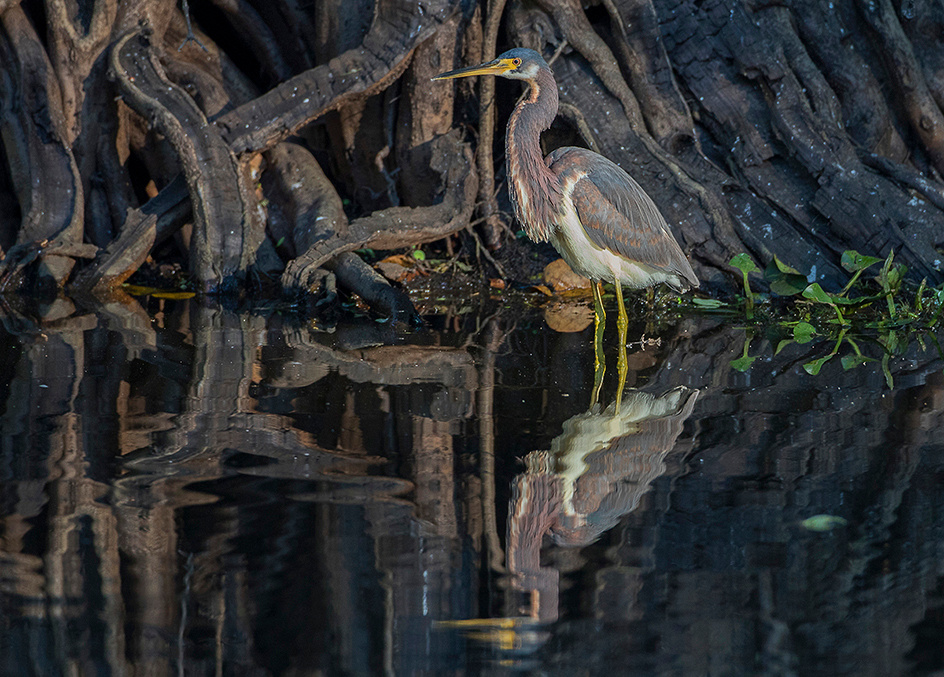
 Tricolored Heron
Tricolored Heron


Little Blue Heron
At the end of Shady Hollow Road we found a pair of swallow-tailed kites actively involved in courtship, including nest construction, prey exchange and copulation. These were life birds for me and I attempted several hundred flight shots. Apparently, giving your mate a lizard makes her receptive? Who knew?




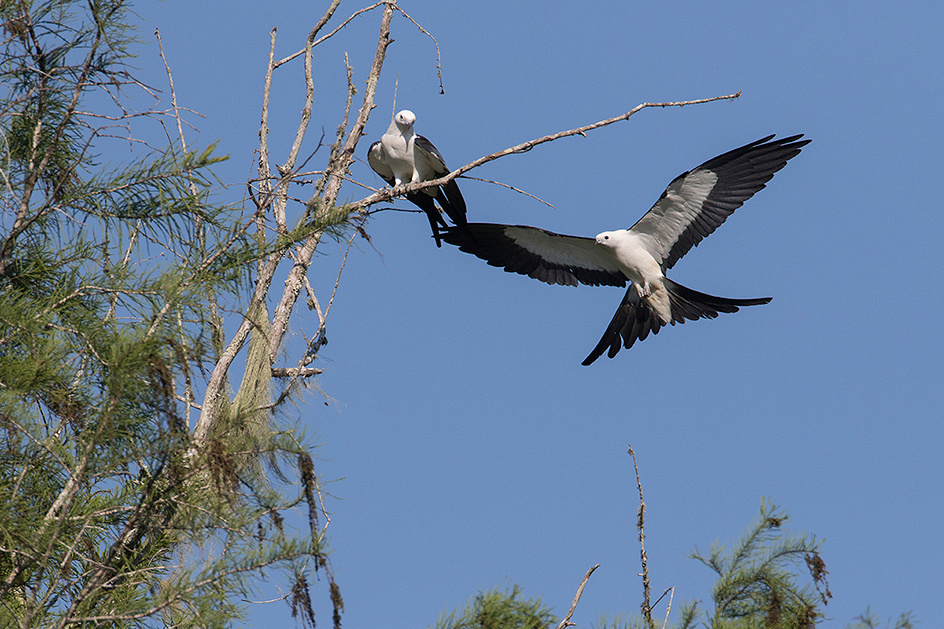



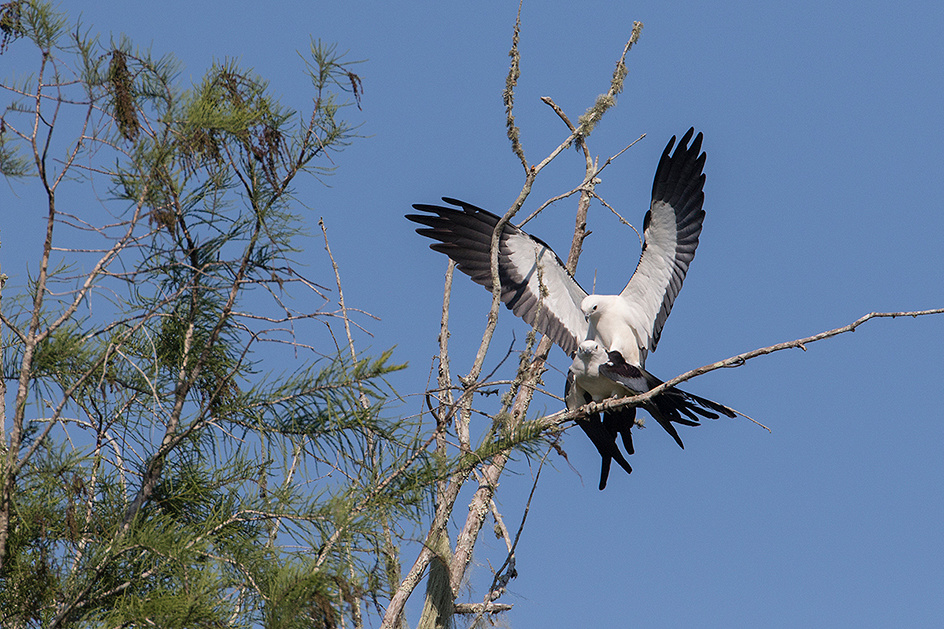

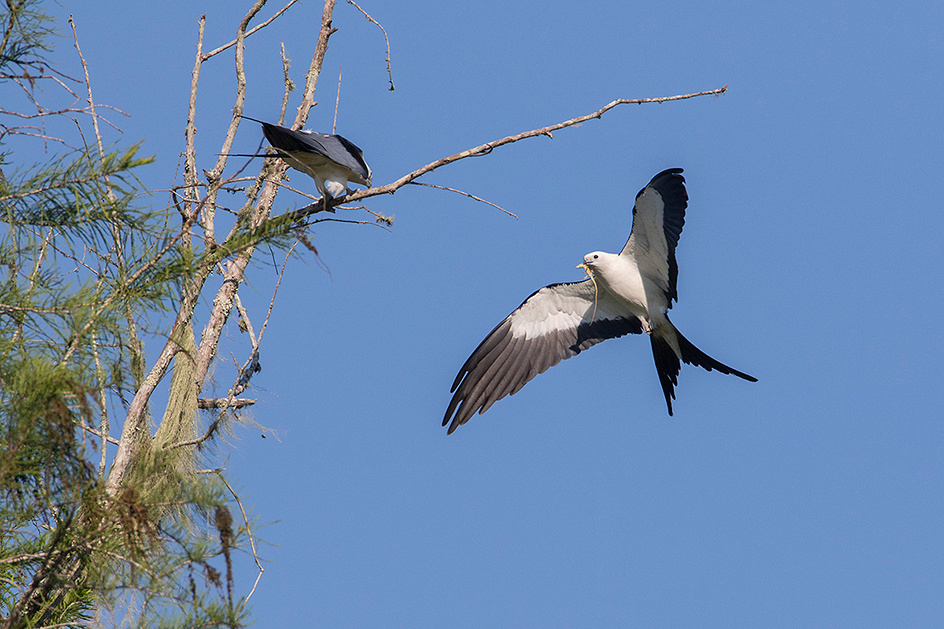

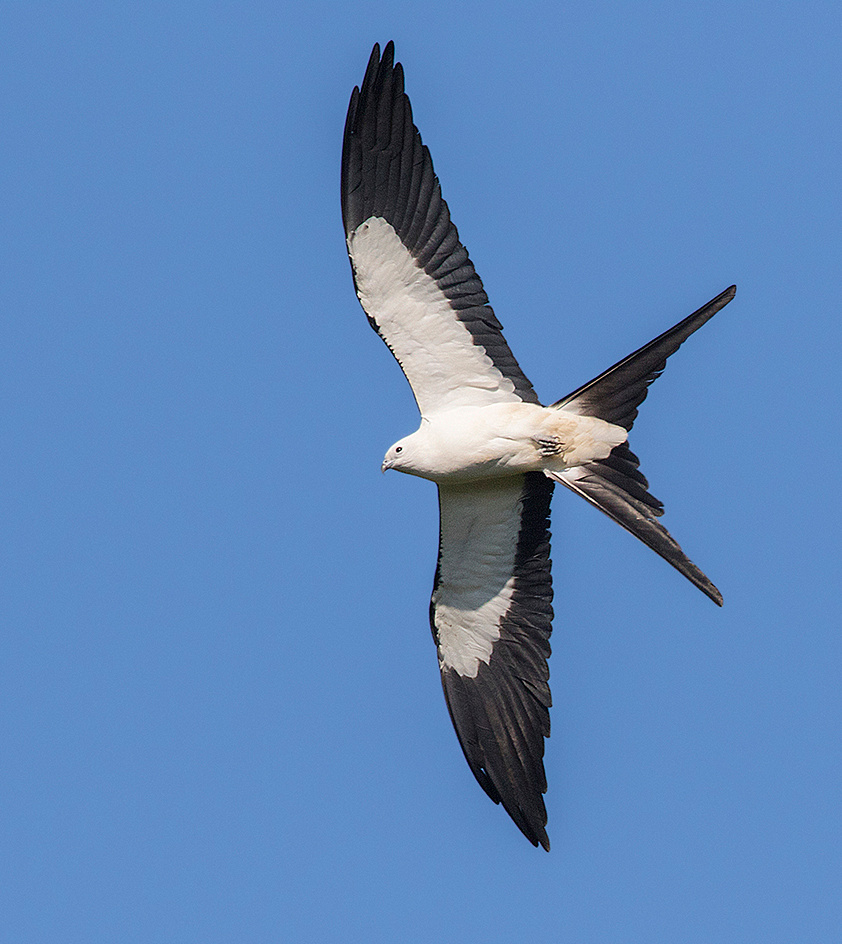

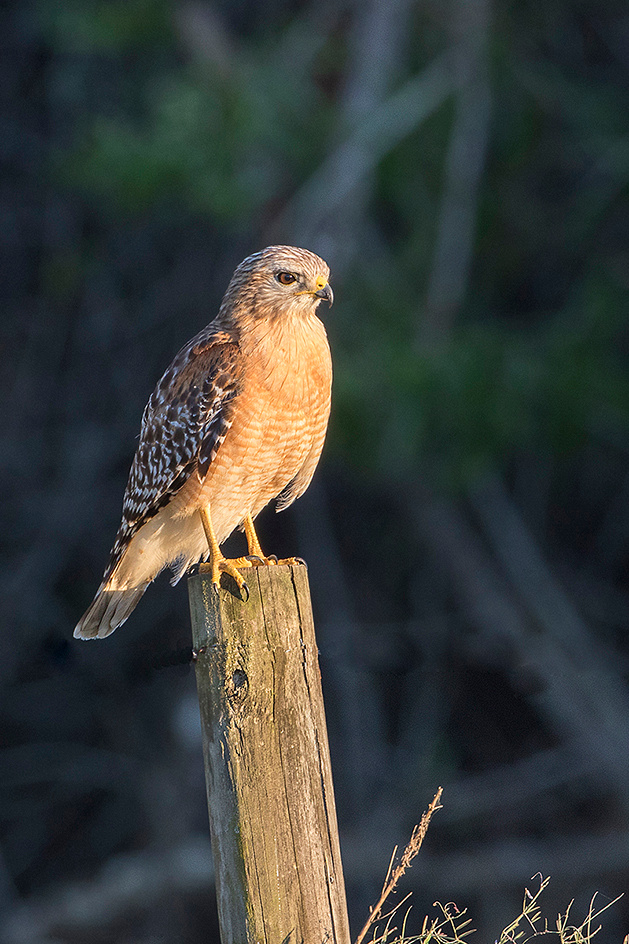

Red-Shouldered Hawk
The next morning we visited Ding Darling NWR (1 Wildlife Drive) on Sanibel Island. This refuge boasts a four-mile long auto tour route through the largest undeveloped mangrove ecosystem in the U.S. In addition to the auto tour route, several well maintained trails bisect the 6,400 acre refuge. Biking and fishing were quite popular activities, but large numbers of wildlife photographers were also present at every break in the mangroves. The very first pond upon entry was covered in birds actively feeding. Species included most of the waders and a pair of very active foraging osprey.
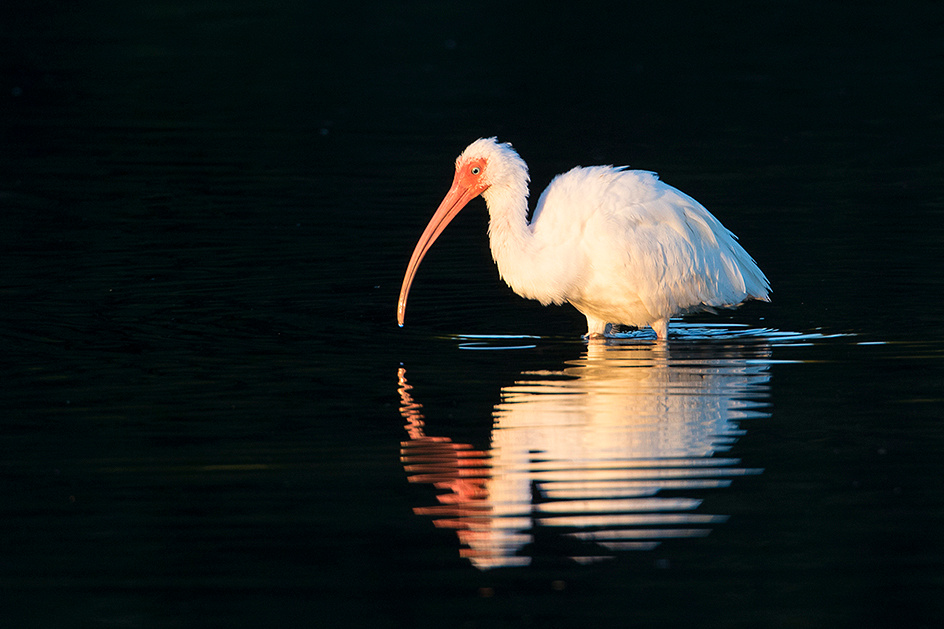

White Ibis
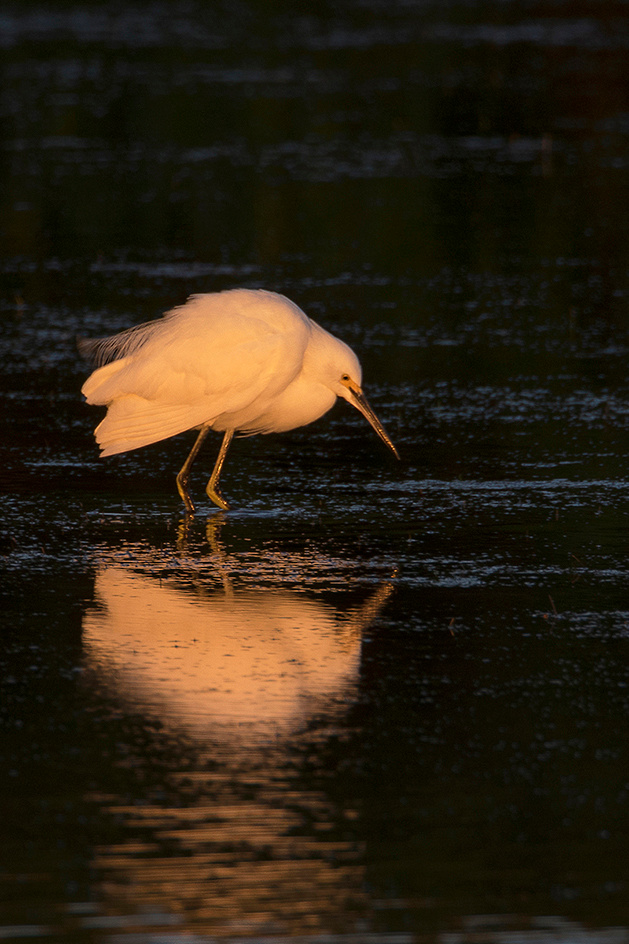

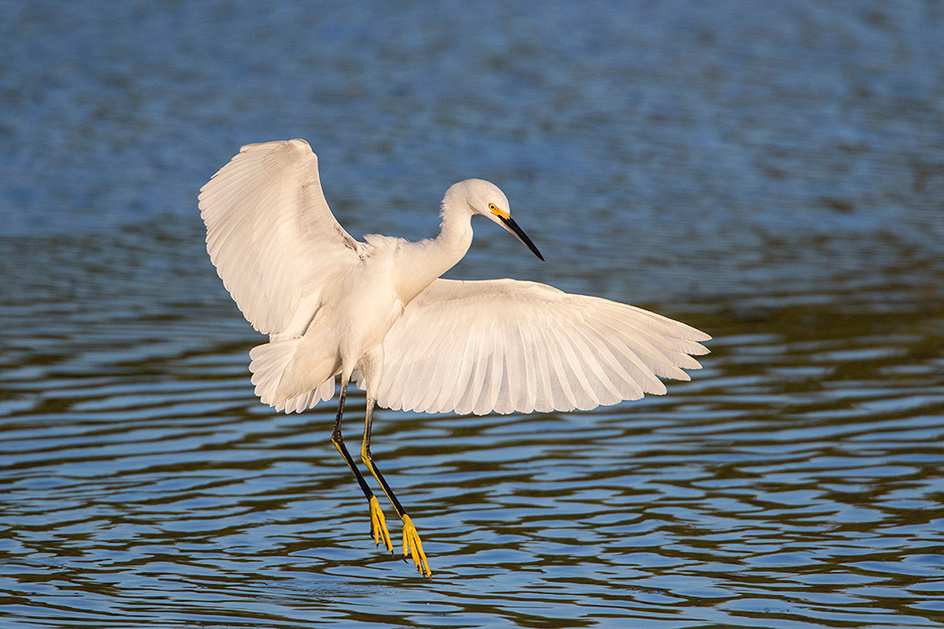

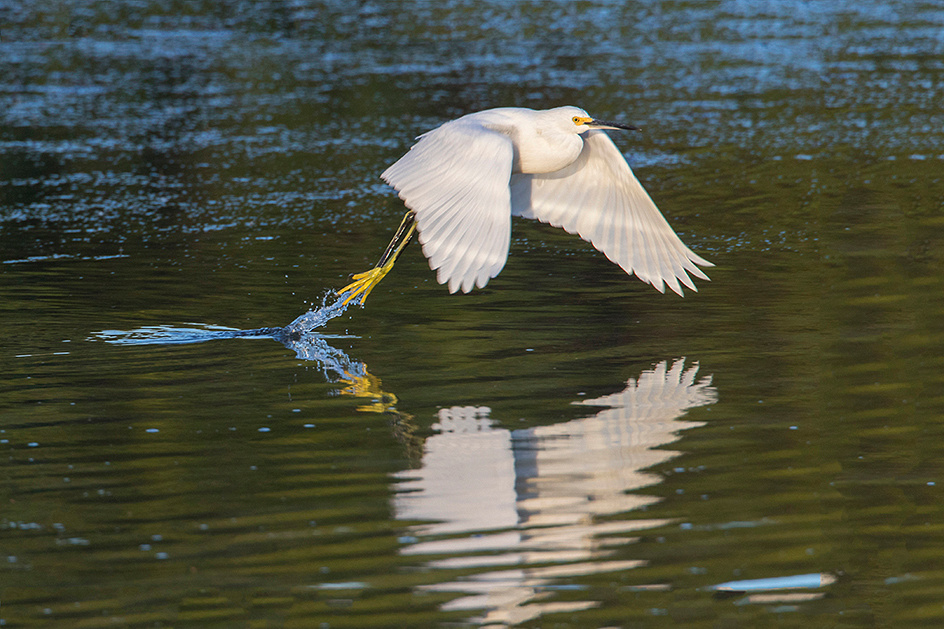
 Snowy Egret
Snowy Egret
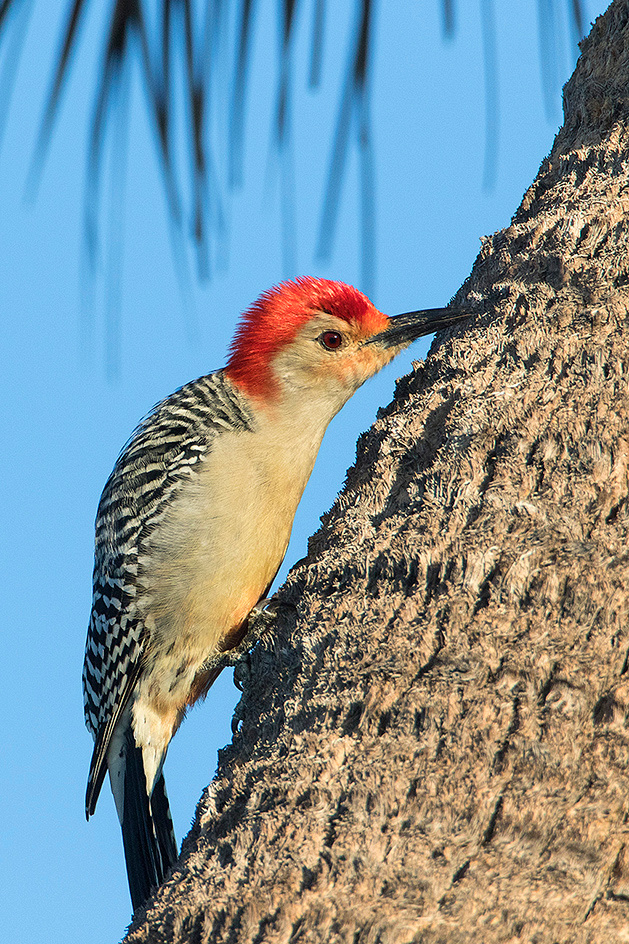



Red-Bellied Woodpecker
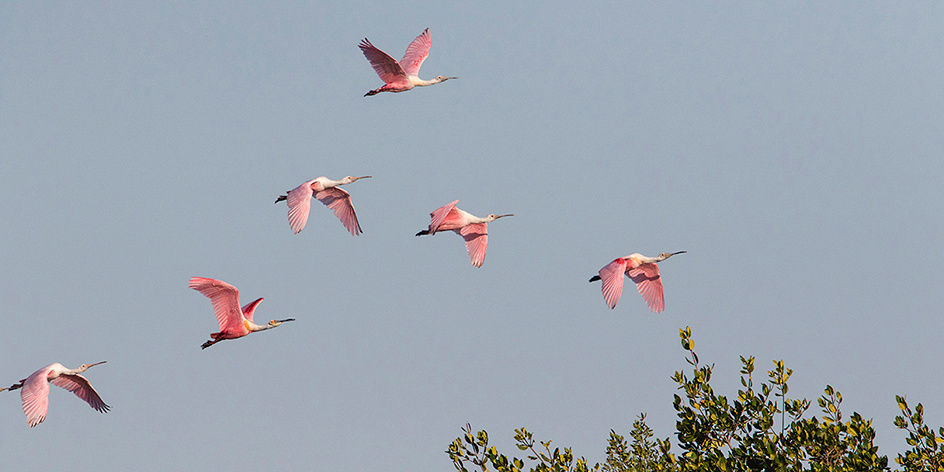

Roseate Spoonbill
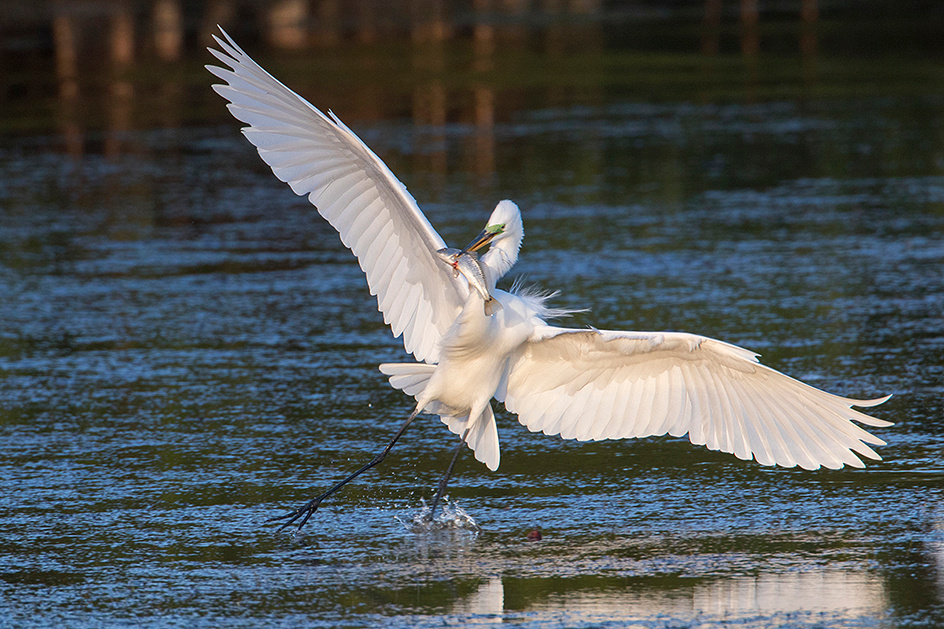

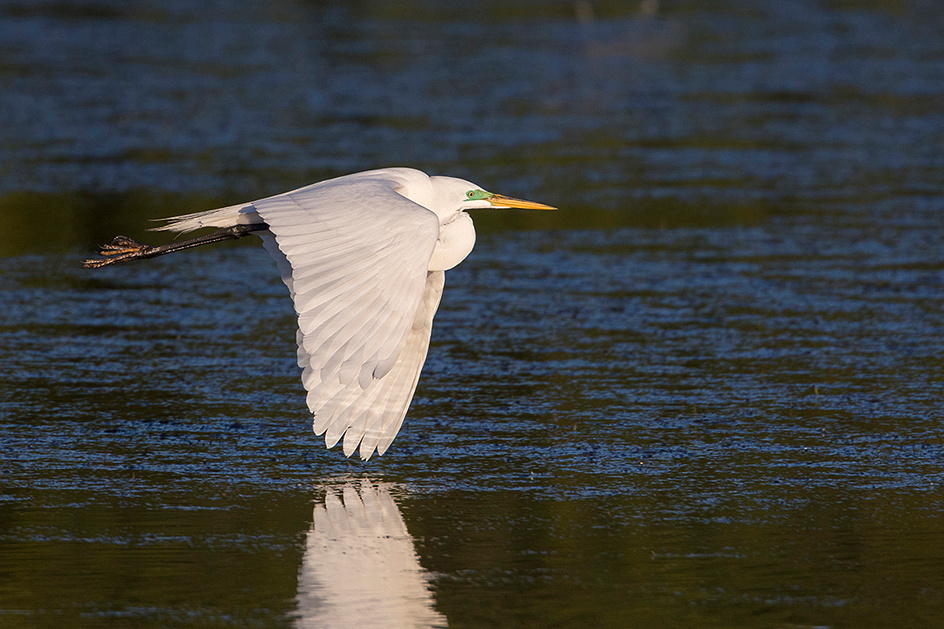

Great Egret
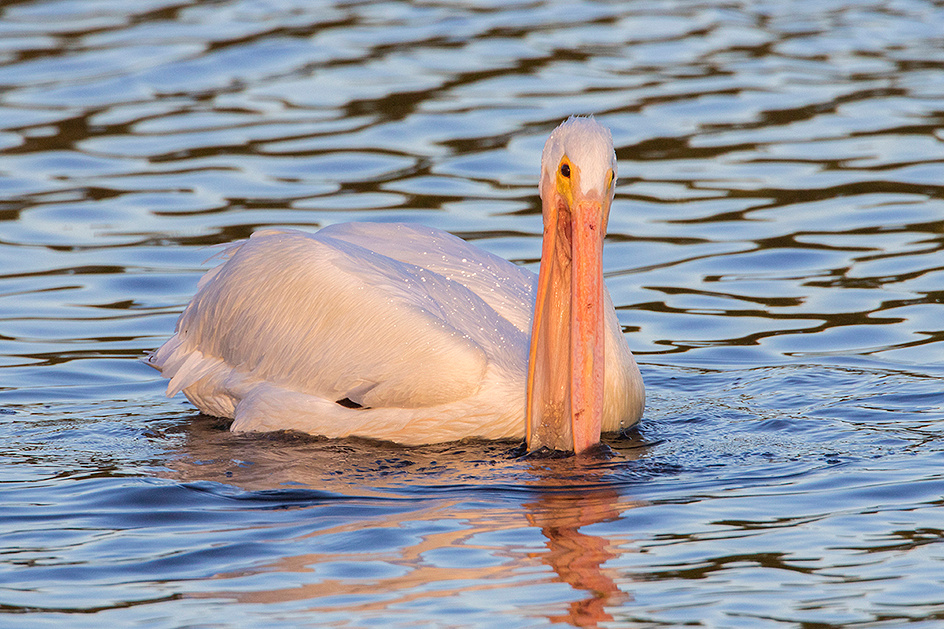
 American White Pelican
American White Pelican
We stopped at Bunchee Beach on the way back from Sanibel Island. Reports are that this area can be quite good for gulls, terns, shorebirds, and waders. Other than a few laughing gulls, it was almost bird free at the time of our visit.
After a very productive morning at Ding Darling we were ready to go back the next morning but, Ding Darling auto tour route is closed Fridays so we decided to visit the Bailey Tract of Ding Darling NWR. This separate parcel off Tarpon Bay Road contains a network of sloughs and ponds with some open grasslands and dense mangroves. I was able to photograph a few species including northern cardinal, anhinga, blue-winged teal, tricolored heron and common ground dove. Relatively few species were observed and they were spooky as compared to other Florida locations.
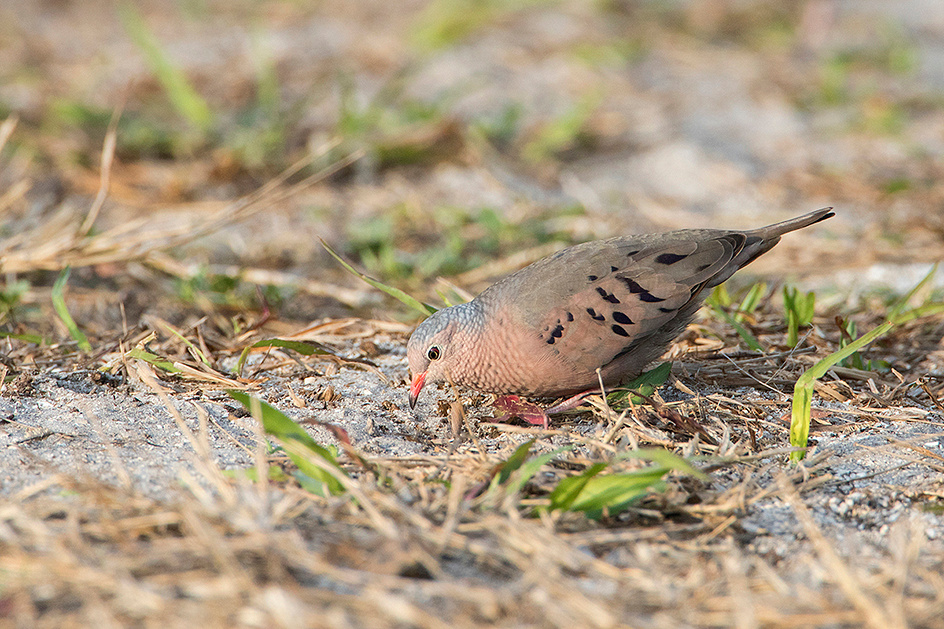
 Common Ground Dove
Common Ground Dove
That afternoon we decided to explore a new photo location a few blocks from our lodging in Fort Meyers called Six-Mile Cypress Slough Preserve. This 3,400 acre preserve has a 1.2 mile long boardwalk through a cypress swamp with some portions bordering a large freshwater lake. I was specifically attempting to capture images of pileated woodpeckers. I have had difficulty acquiring decent photographs of the species elsewhere. We did find several of these crow-sized woodpeckers, but decent images were hard to come by.
Several small ponds with nice afternoon light did allow some interesting images including our first image of the trip of a limpkin. A boardwalk favorite was a small band of feral pigs foraging directly adjacent to the boardwalk near dark.
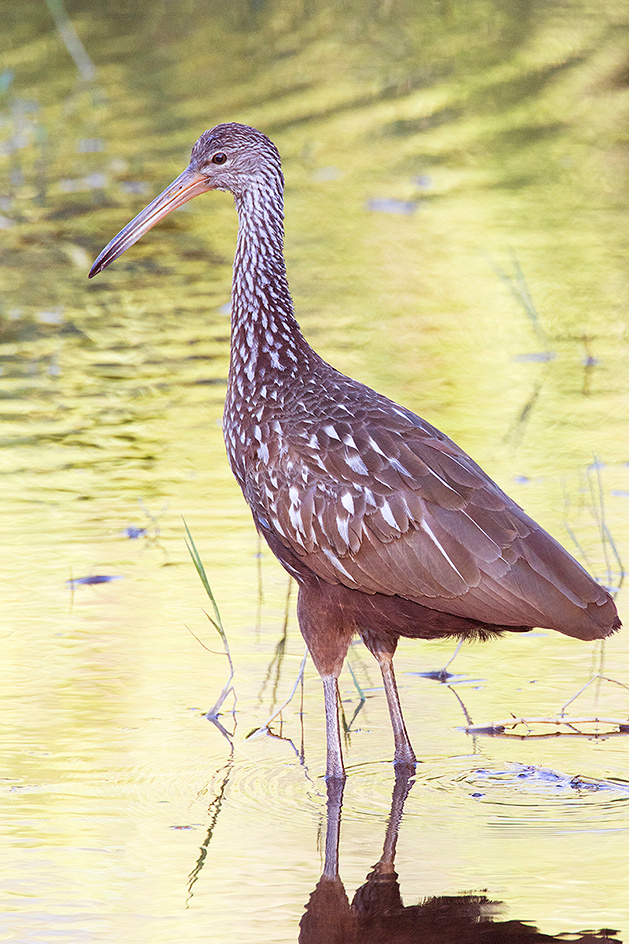

Limpkin


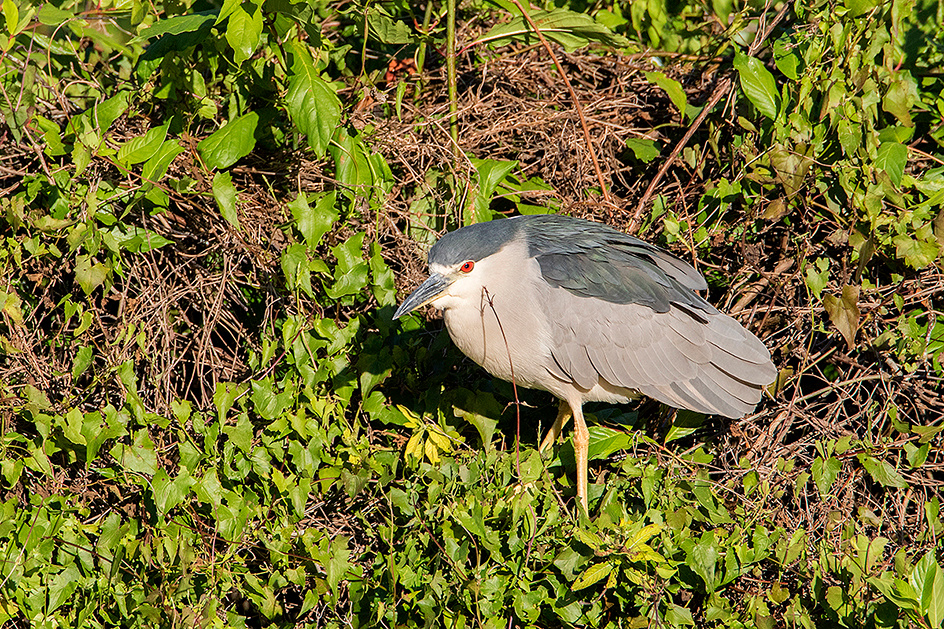
 Immature and Adult Black-Crowned Night Heron
Immature and Adult Black-Crowned Night Heron
Our last morning on the Gulf we once again headed back to Ding Darling NWR. We concentrated on photographing osprey on a nest platform. The nest had good morning light and 3 half-grown chicks.
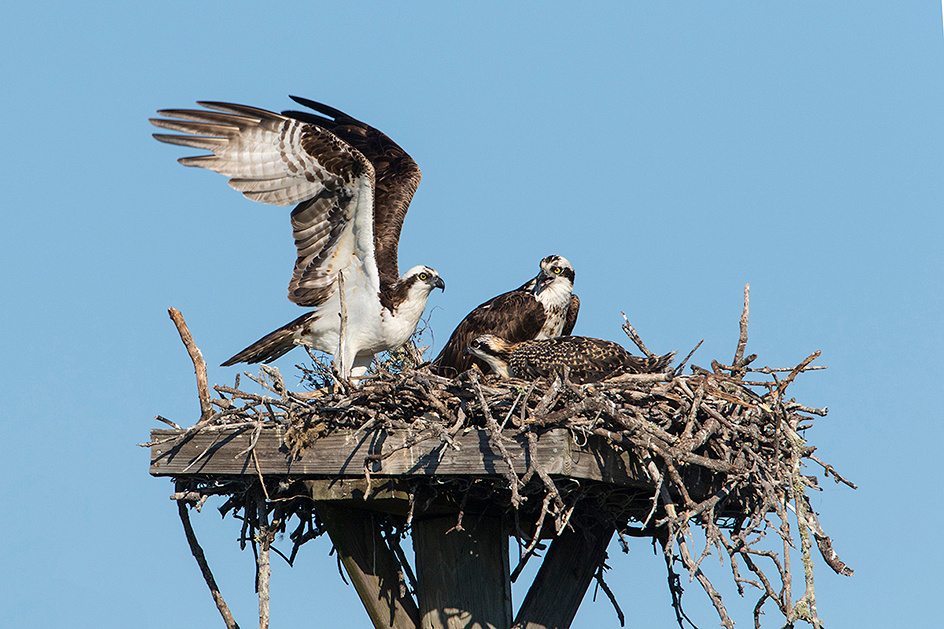

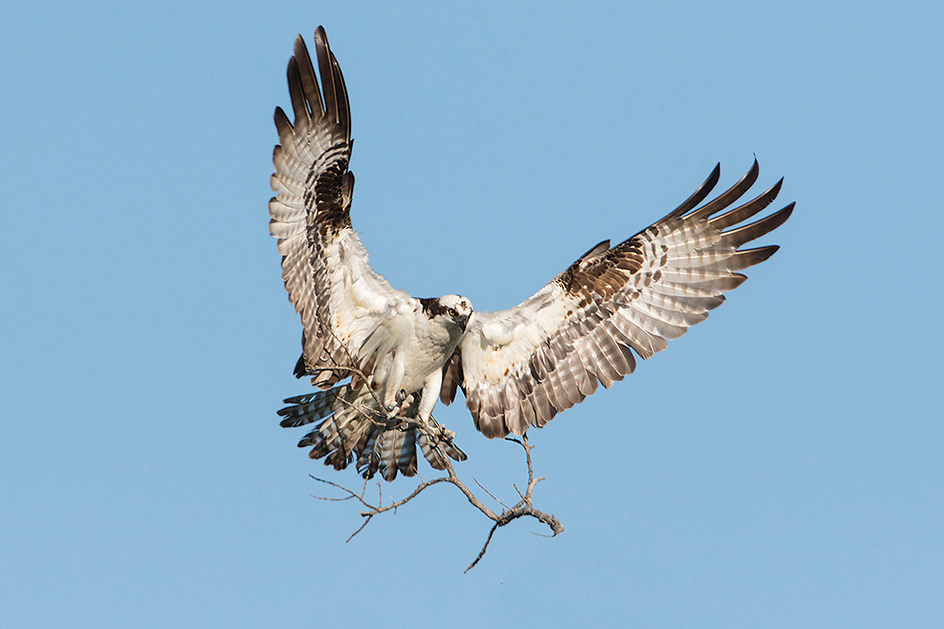

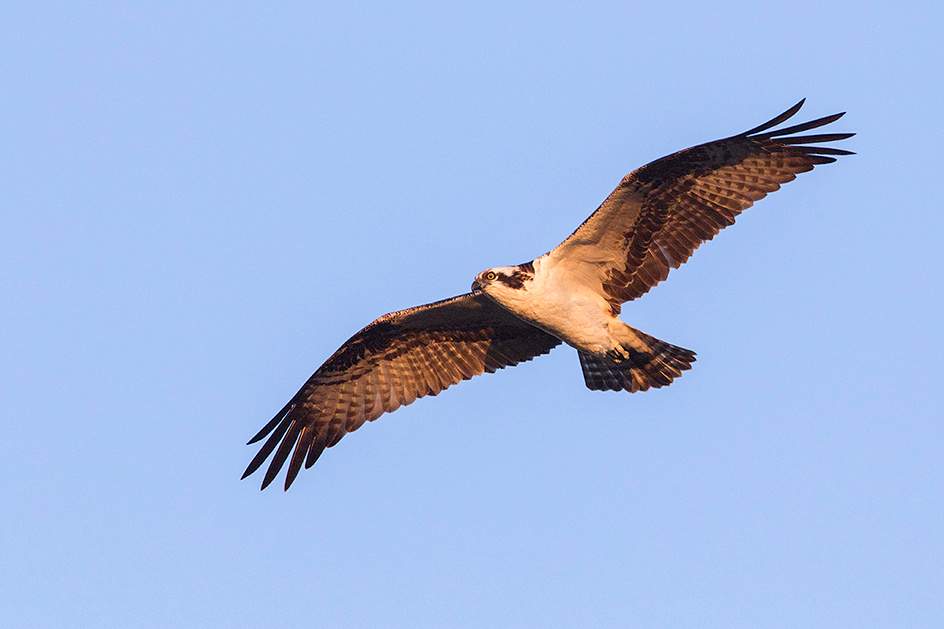



Osprey Nestling
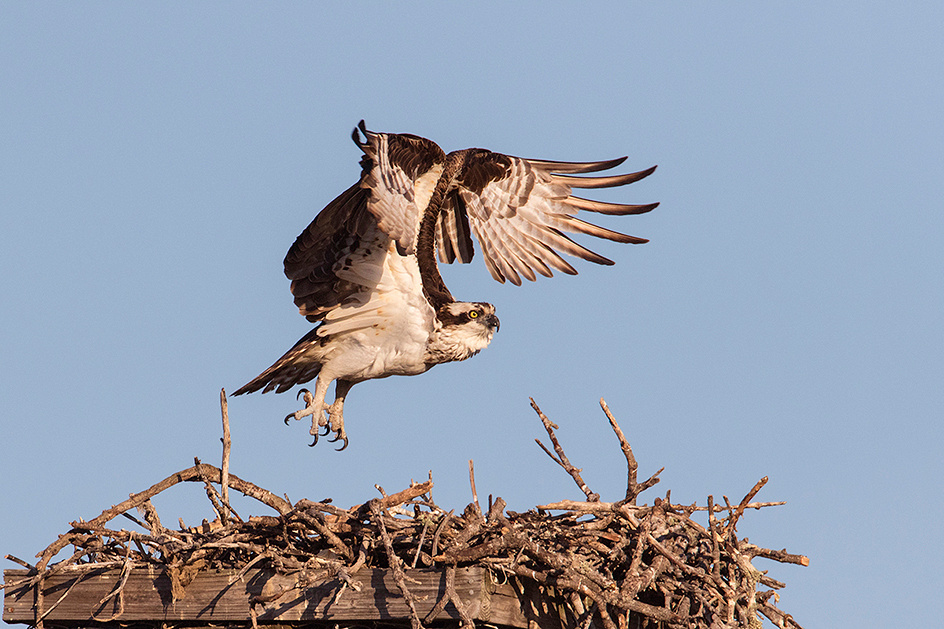

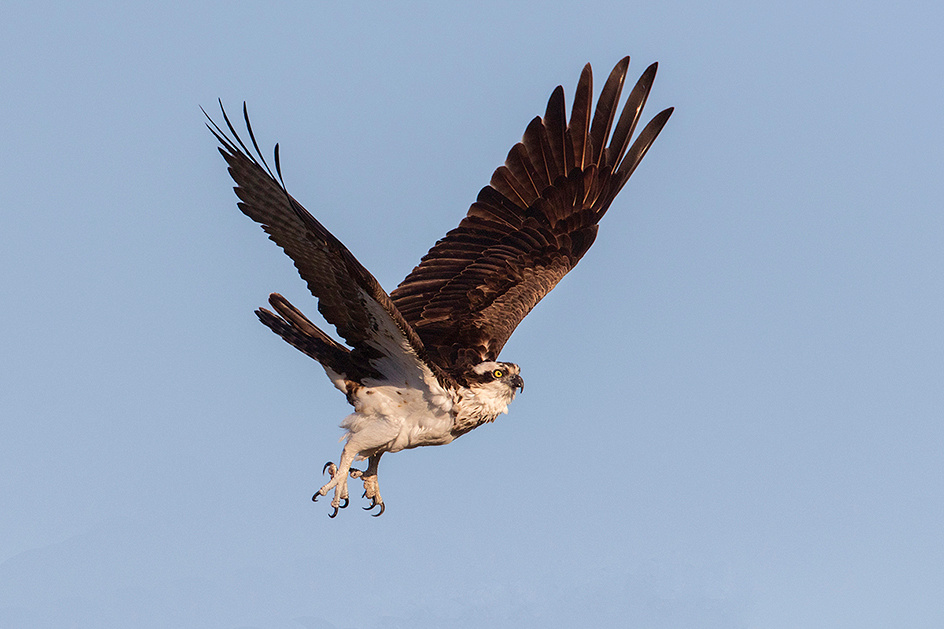

After our morning shoot at Ding Darling we headed back across Florida to Pompano Beach, near Fort Lauderdale. We spent the next seven days at a studio condo on the beach. Photography was concentrated on primarily three locations, with visits to two or all three on most days. The first location was Green Cay Wetlands and Nature Center (12800 Hagan Ranch Road, Boyton Beach). This is a remarkable wetlands enhancement with several south Florida habitats included. We had not even gotten out of the car when a friendly native asked if we had seen the owl? She escorted us over the boardwalk to a well shaded palm tree trunk where an Eastern Screech Owl was roosting. Photo were difficult and he rarely opened his eyes, but we managed at least a few images of this life bird shooting at high ISO and a wide open aperture.
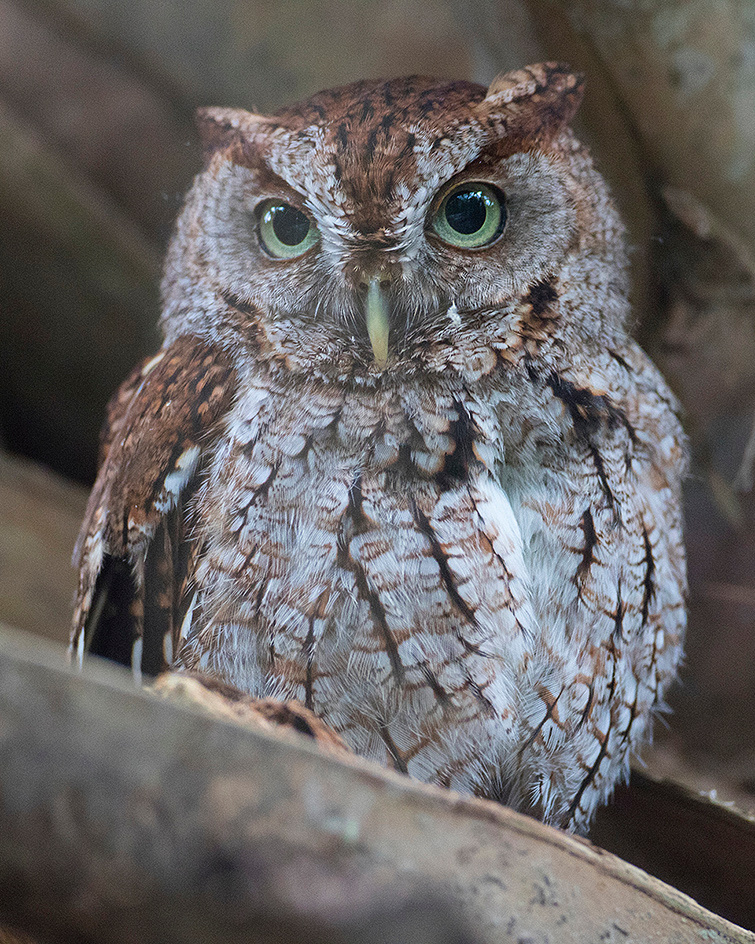

Some nesting was observed and we had an opportunity to follow several foraging anhinga.
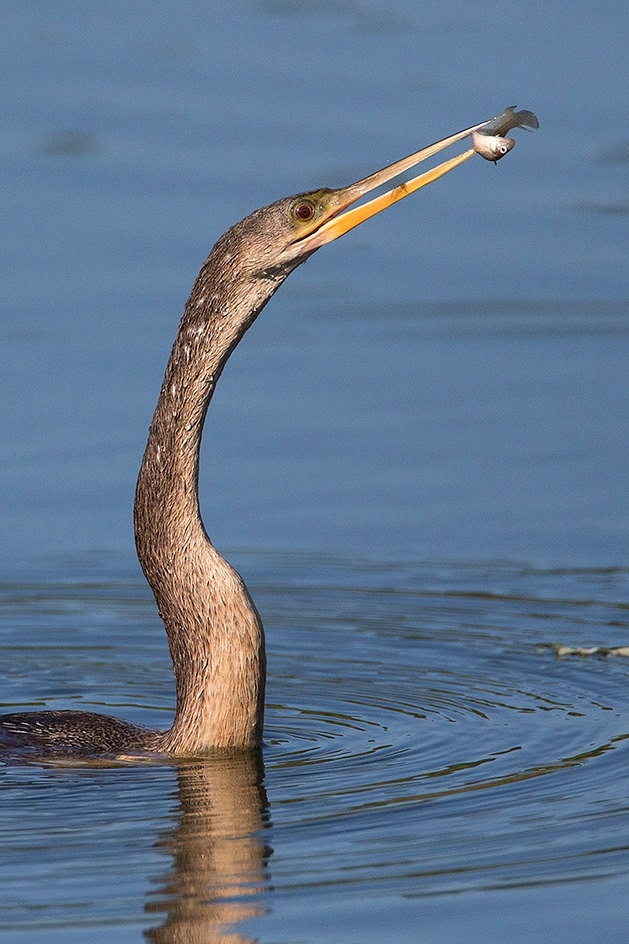

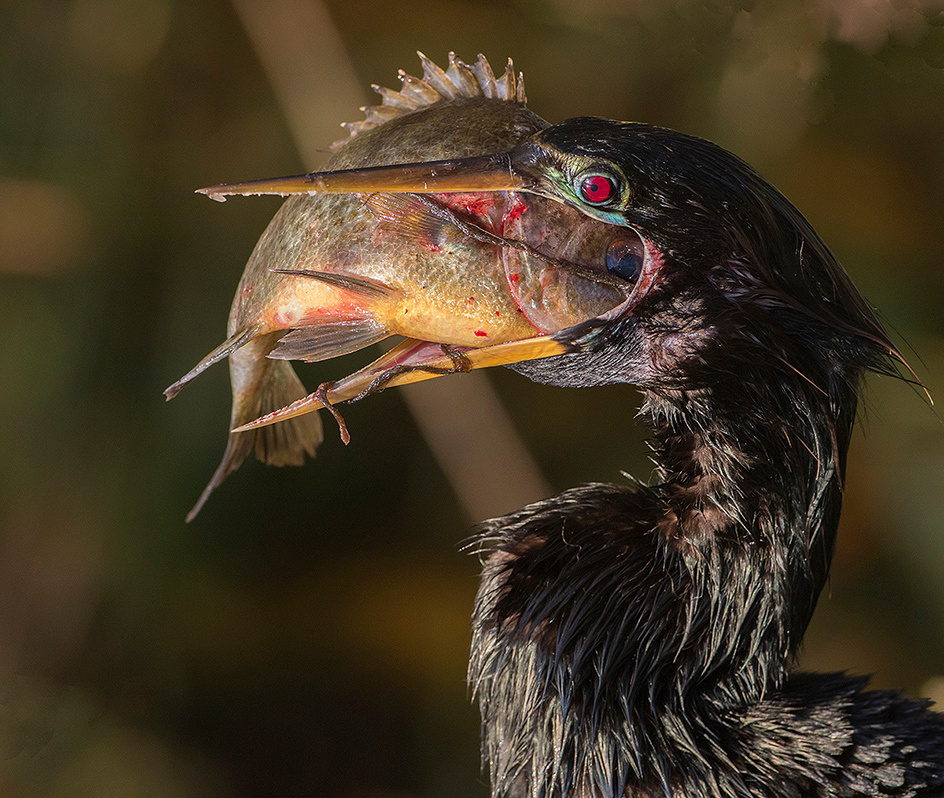
 These remarkable predators capture fish underwater and can swallow fish that appear far larger in diameter than their narrow necks would allow.
These remarkable predators capture fish underwater and can swallow fish that appear far larger in diameter than their narrow necks would allow.
Green Cay also appeared to have a fair number of least bitterns. These are quite small and lurk in dense emergent vegetation. I was unable to coax one out of the dense vegetation for an open image.
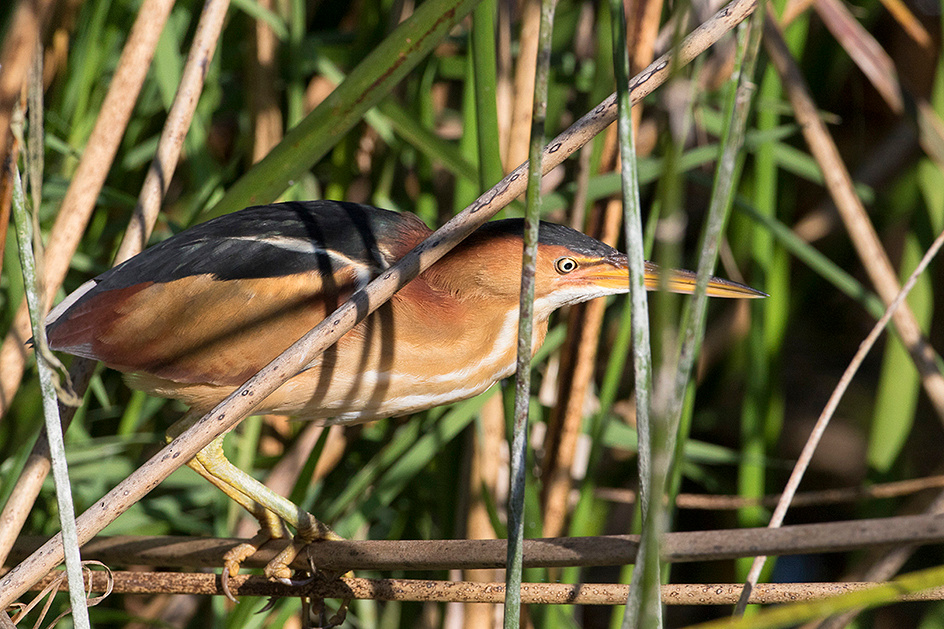
 Male Least Bittern
Male Least Bittern
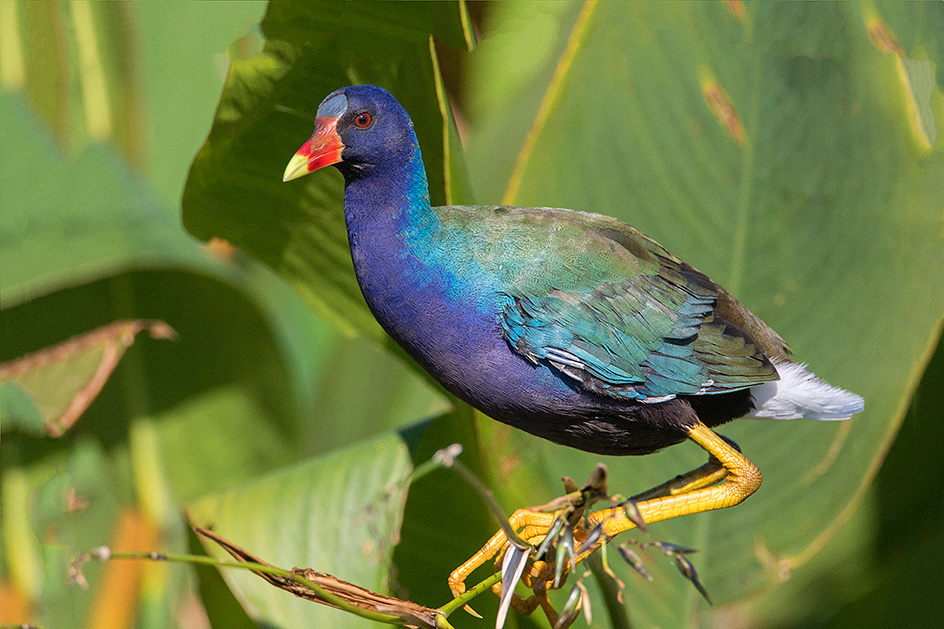


 Purple Gallinule
Purple Gallinule
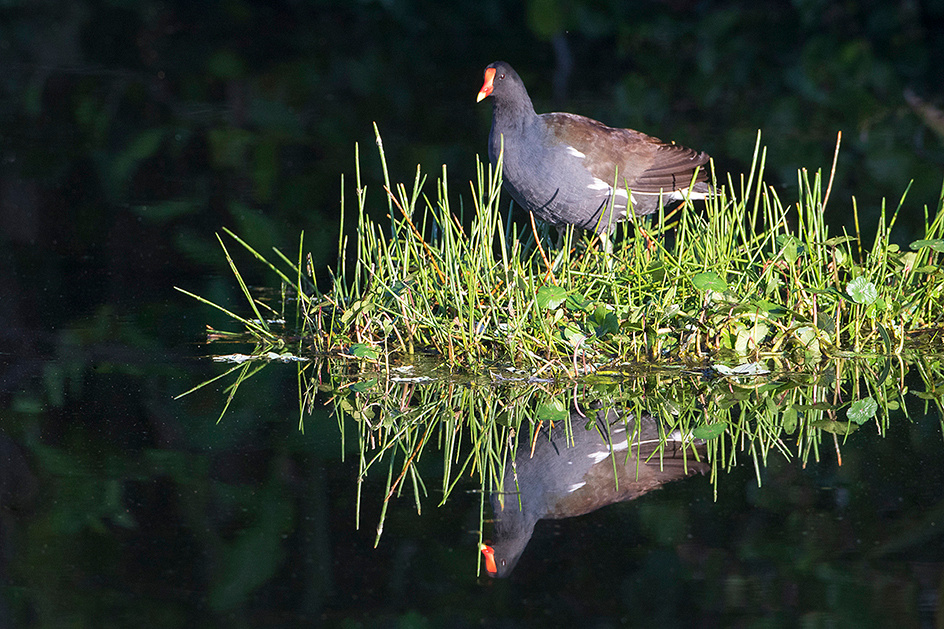
 Common Gallinule
Common Gallinule
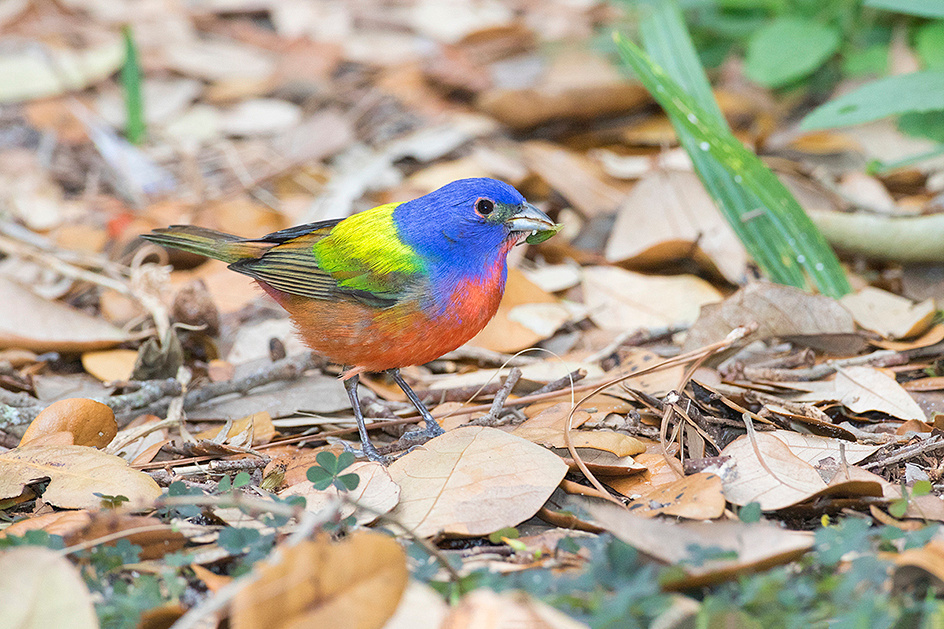
 Painted Bunting
Painted Bunting
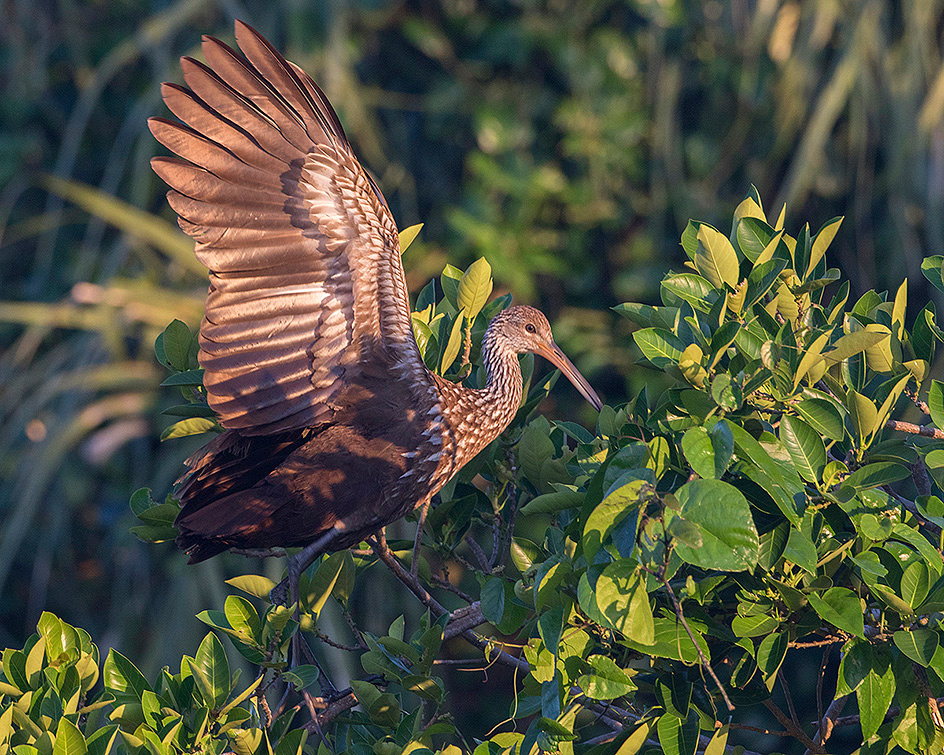
 Limpkin
Limpkin

 Green Heron
Green Heron
We also visited Arthur R. Marshall Loxahatchee NWR (10216 Lee Road, Boyton Beach). At this location we were most interested in photographing barred owl, pileated woodpecker, and snail kite. No luck on the kite, but we found a barred owl in difficult light on nearly every visit.
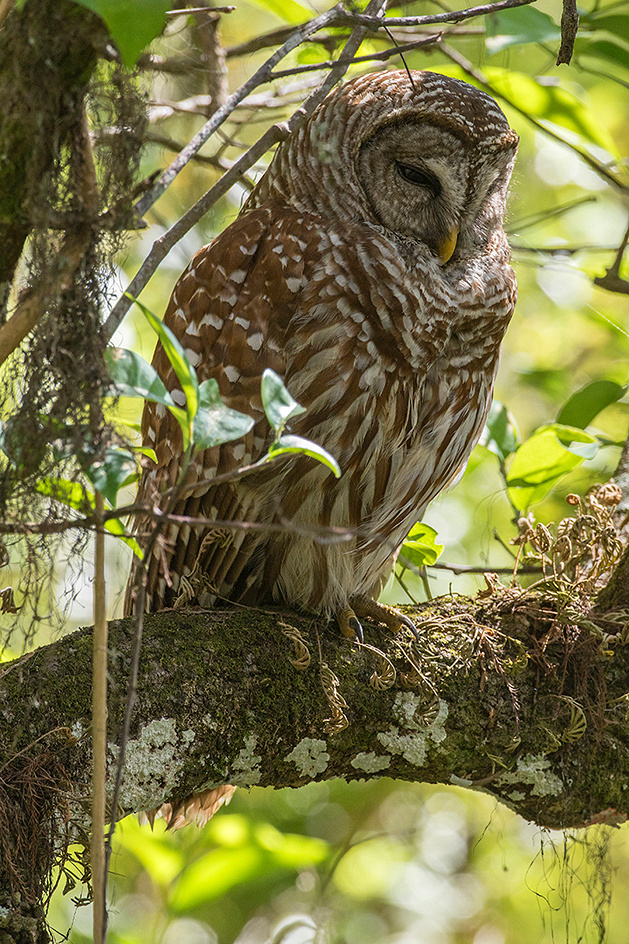

We finally got an eye level image of a pileated woodpecker in decent light. He was to close to get his entire body in the frame.


This 144,000 acre wildlife refuge is relatively uncrowded and includes north everglades type habitats. The short 1/2 mile long boardwalk through a cypress stand is where I found the owl and woodpecker, but the refuge also has an extensive trail network around the many ponds.
Our last photo location of the trip was Wakodahatchee Wetlands (13026 Jog Road, Delray Beach) which was the most productive. This site is extremely popular and has limited parking. The wetland is accessed via a .75 mile-long boardwalk through a series of pond apple trees. These trees make ideal nesting areas as they surrounded by waters patrolled by very large alligators. Gators prevent nest predation by mammalian carnivores. Large numbers of species were packed into the small stands of pond apple including anhinga, cattle egret, great egret, tricolored heron, black-crowned night heron, double-creasted cormorant, and wood stork.






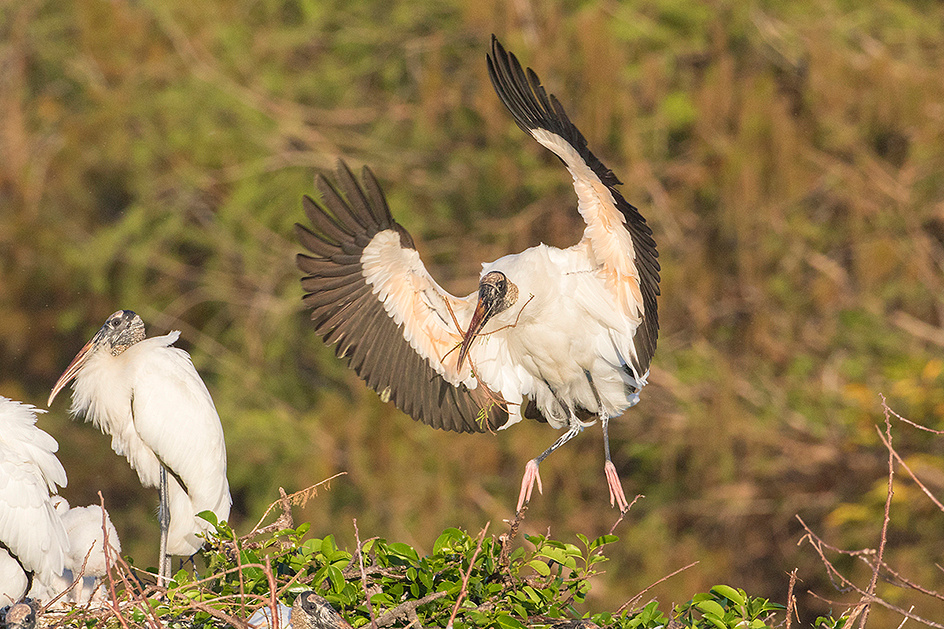

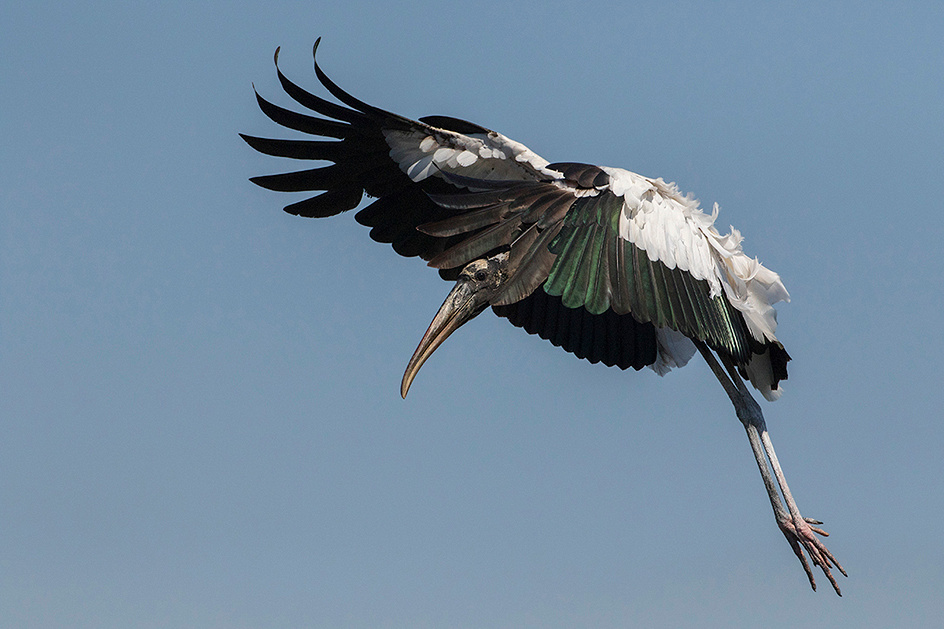
 Wood Stork
Wood Stork
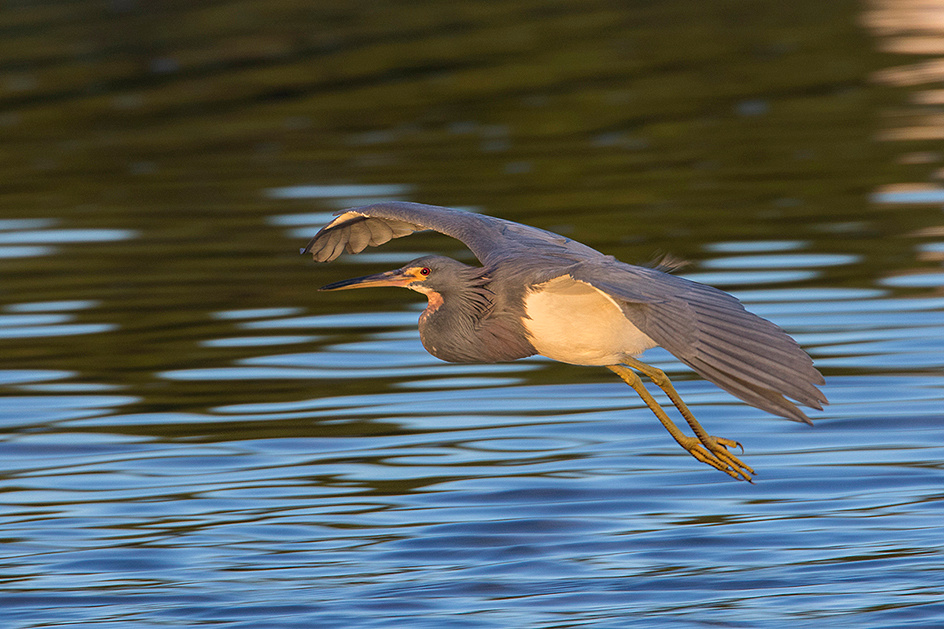

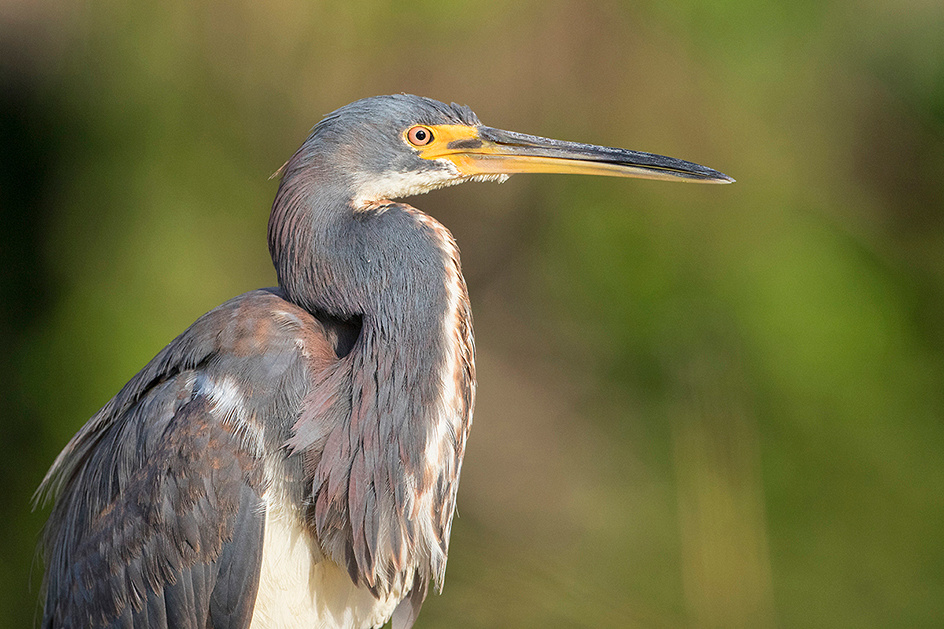

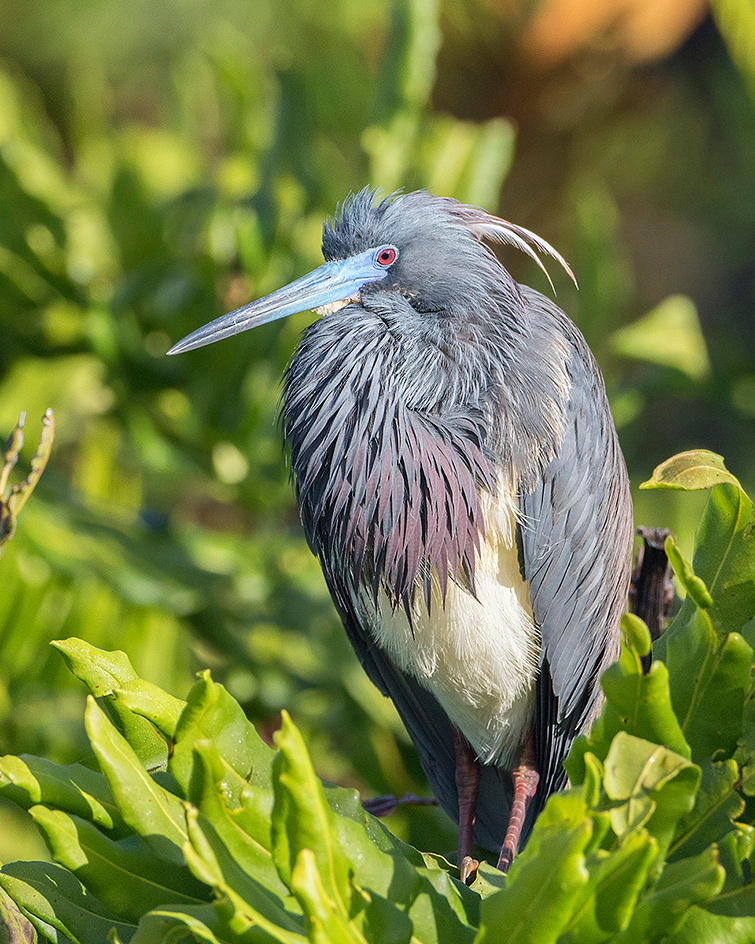

Tricolored Heron
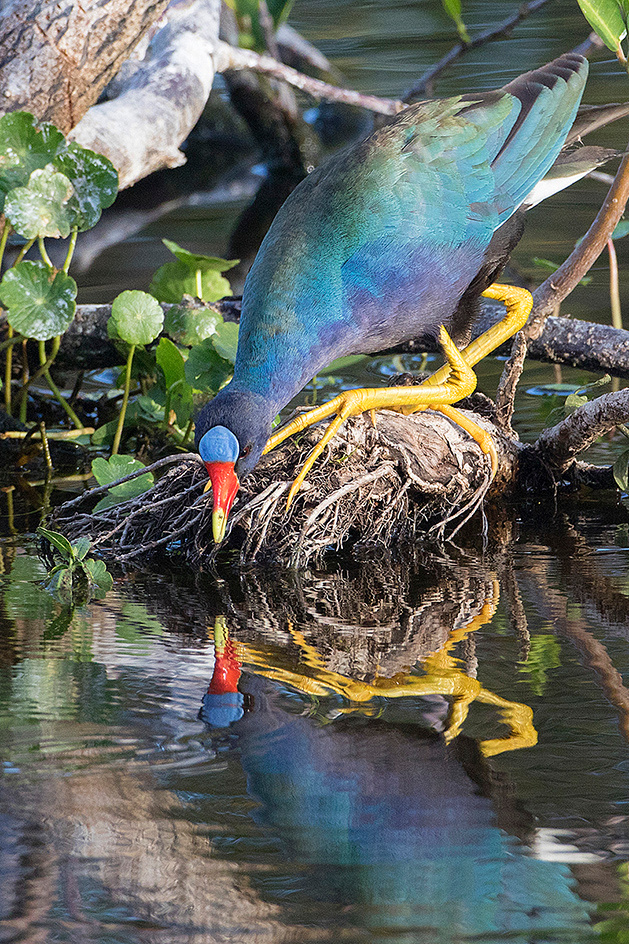


 Purple Gallinule
Purple Gallinule

 Gray-Headed Swamp Hen (non-native species)
Gray-Headed Swamp Hen (non-native species)
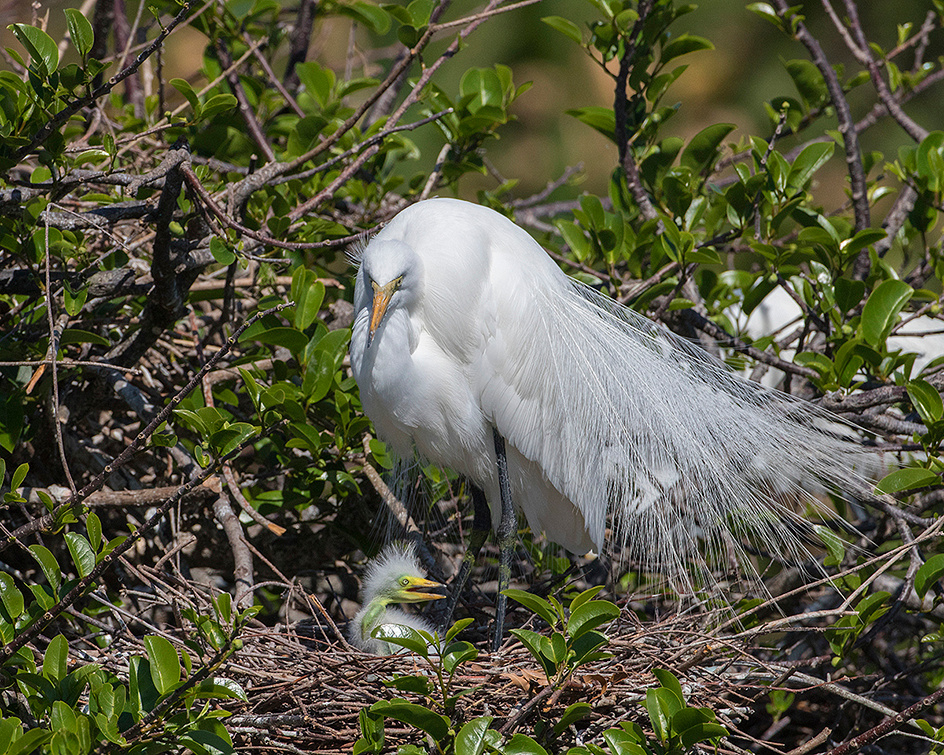

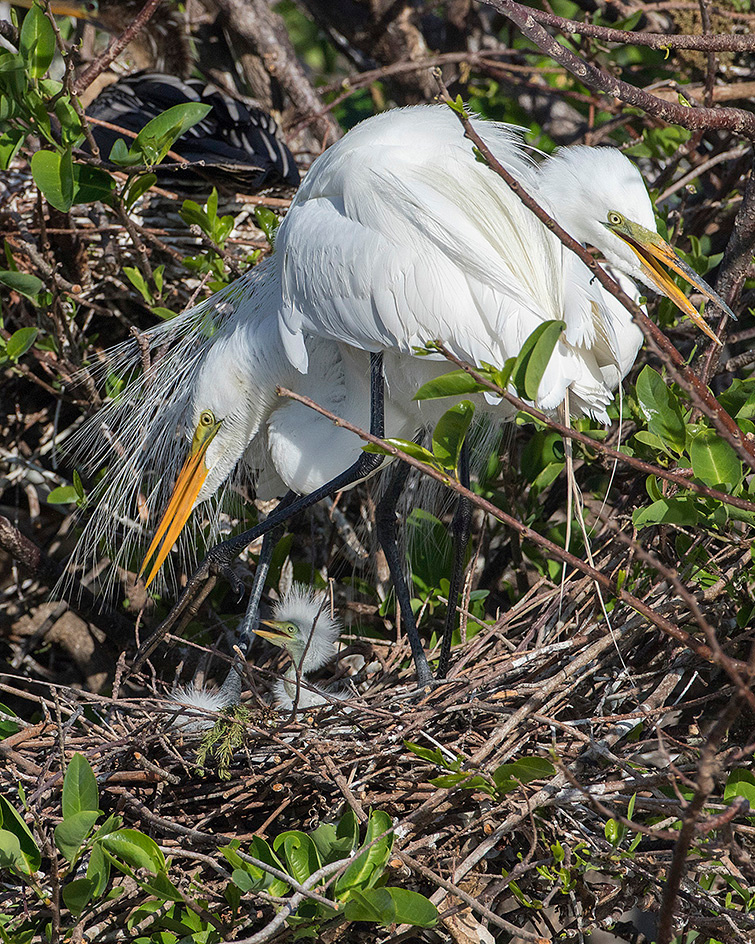

Nesting Great Egret
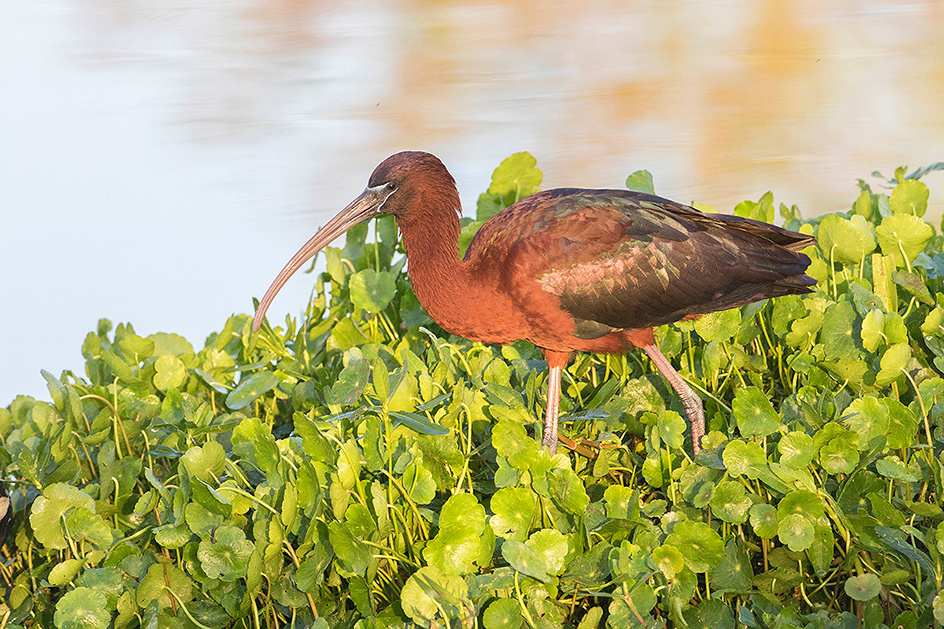

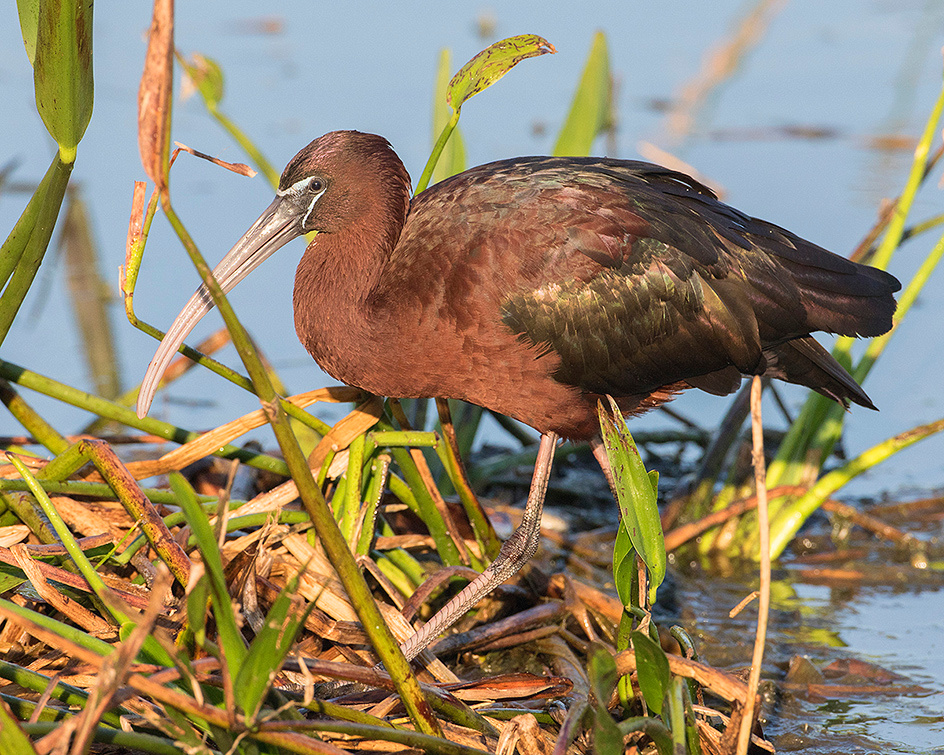
 Glossy Ibis
Glossy Ibis
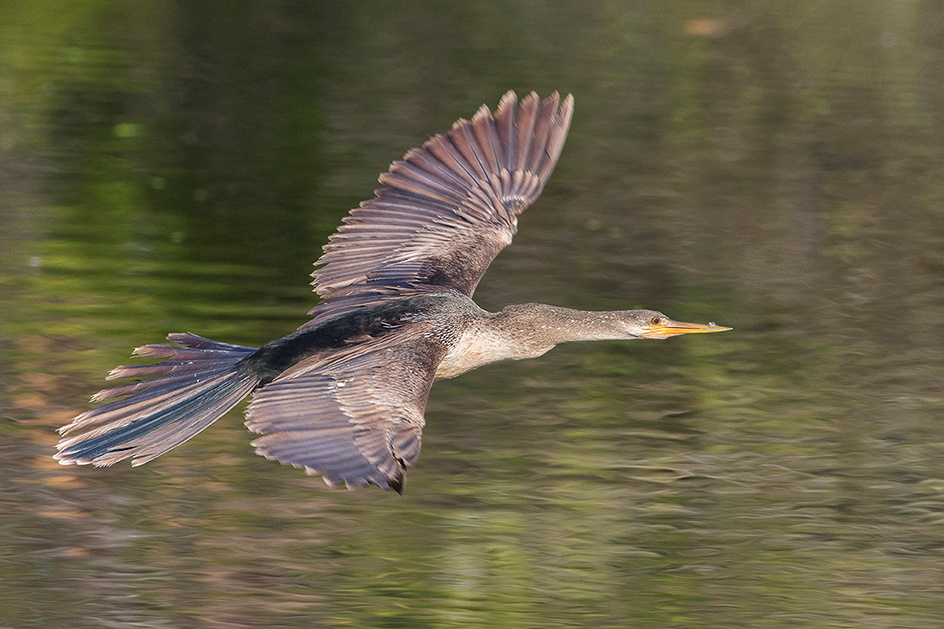
 Anhinga
Anhinga
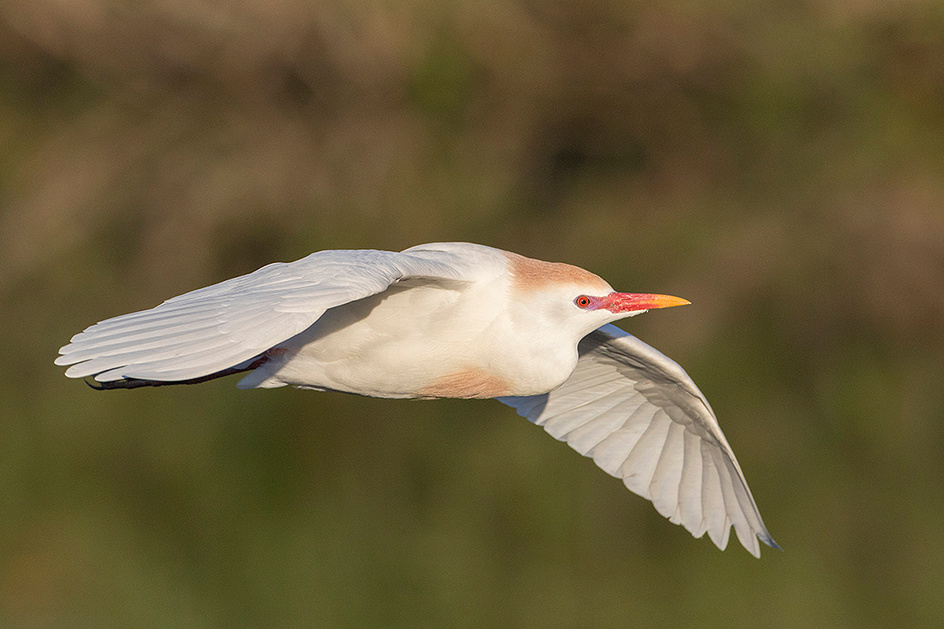


 Cattle Egret in Breeding Plumage
Cattle Egret in Breeding Plumage
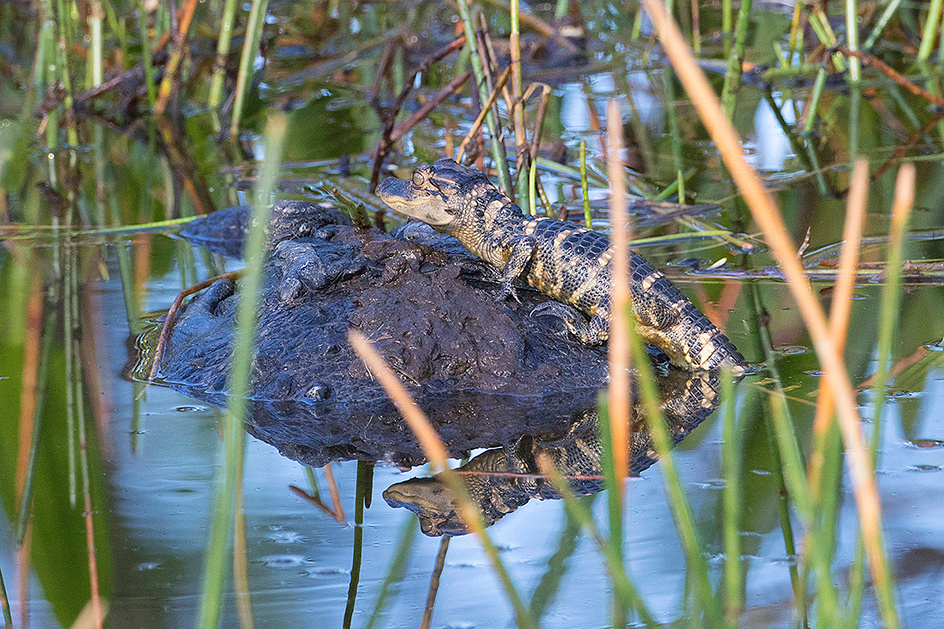

Unfortunate that I was unable to get a clean shot of the recent hatchling basking on his mothers head.
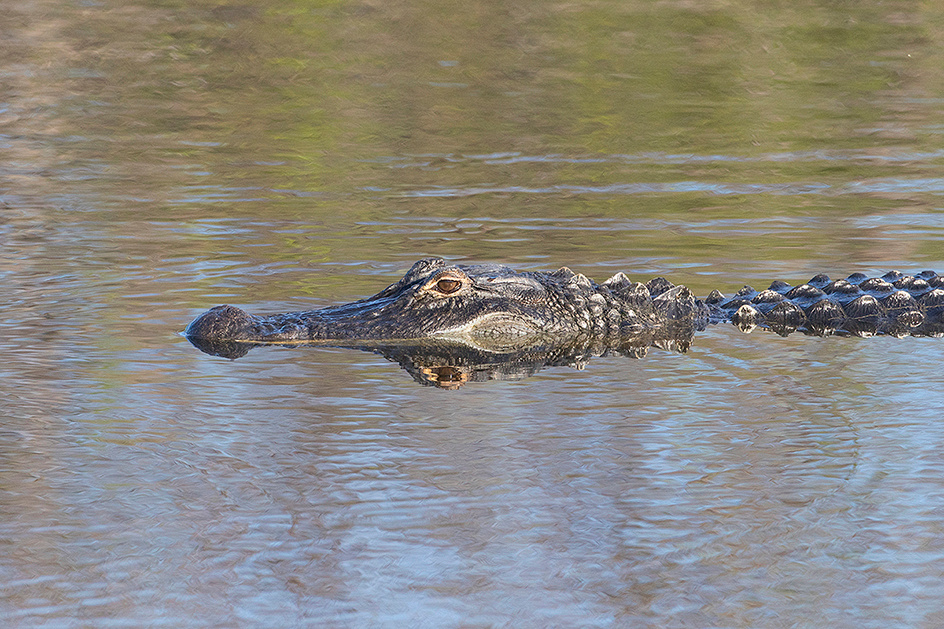
 Alligator
Alligator
We primarily shot in the mornings and spent the remainder of the day enjoying the warm weather at beach and pool. We found an excellent seafood restaurant and finally a decent Mexican food restaurant in Florida. Roads and signage are excellent compared to California. Florida has a well earned reputation as an East Coast retirement mecca. Many drivers are older and defensive driving is a must.
Our visit was to early to pick up the songbird migration and possibly to late to capture the bulk of the shorebird activity. However, it was great to escape the cold, rainy weather patterns of Northern California for a few days.
November Mule Deer2
Becky and I took our annual November road trip through selected mule deer winter ranges last week. Our goal was to photograph mule deer bucks in the rut. We normally make this trip during Thanksgiving week, but went a week early to avoid predicted snowfall. We may have been slightly early based on discussion with Malheur refuge staff. They indicated that they had seen little rutting activity until last week when they had their first cold weather of the season.
We toured several winter range locations in Northeastern California and Eastern Oregon including, Big Valley, Devil's Garden, Warner Mountains, Timber Mountain, Lava Beds NP, Tulelake NWR, Lower Klamath NWR, Hart Mountain Antelope Refuge and Malheur NWR over several days.
We observed well over 300 mule deer and two herds of antelope which each contained over 100 individuals. One of the highlights of the trip for me was the opportunity to photograph full frame sage grouse. I finally added a few images of this iconic western species to my files. These grouse blend very well with their sagebrush environment and were extremely difficult to see if they were not in motion.
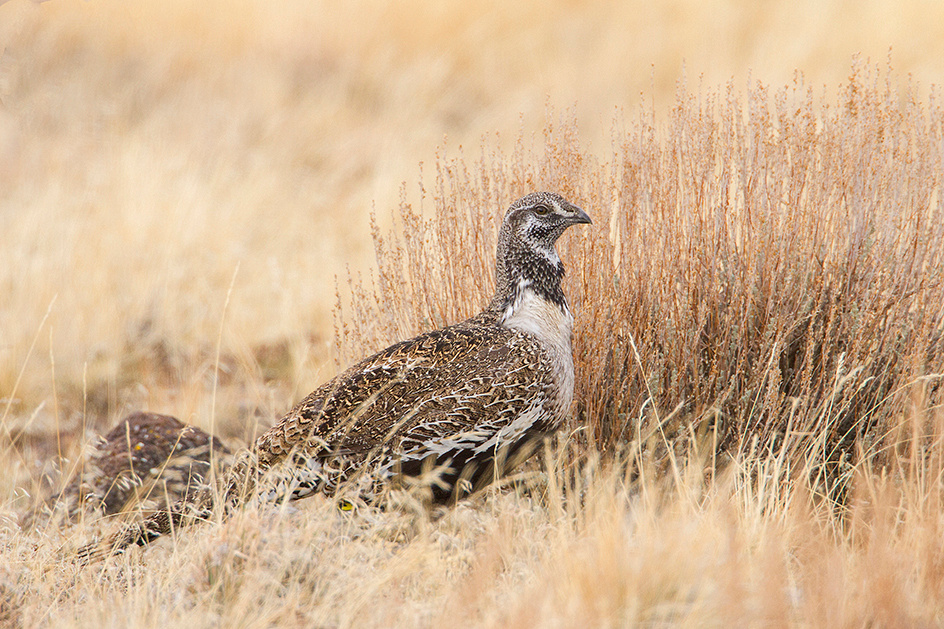

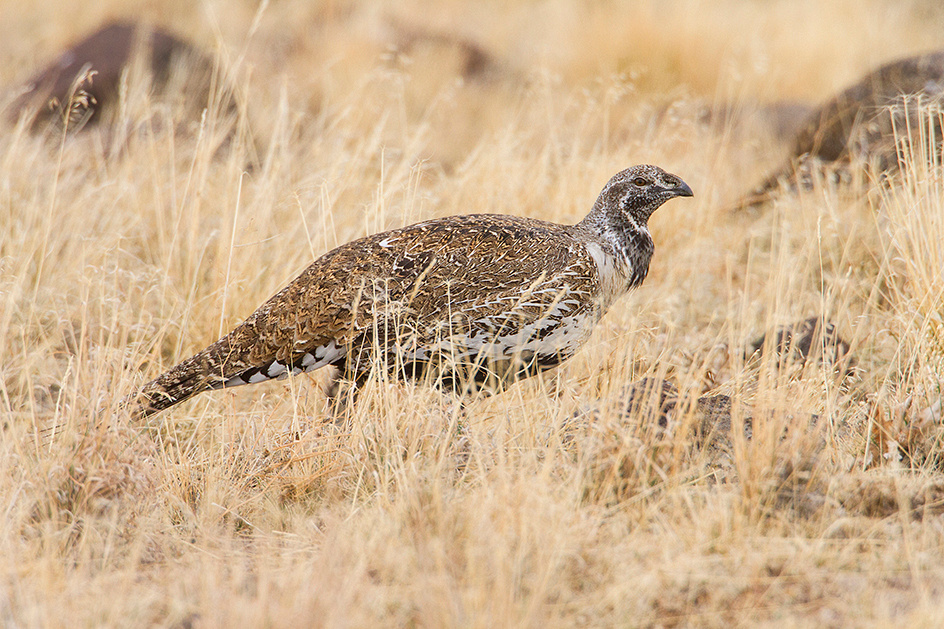

Several raptor species have begun their winter migration and were beginning to concentrate on Lower Klamath NWR. Red-tailed hawks were present in large numbers. The hawk below had spotted a mouse and was just about to drop.


As this red-tailed hawk demonstrates, timing can be important in wildlife photography. Mere seconds can be the difference between a good image and a crappy one.
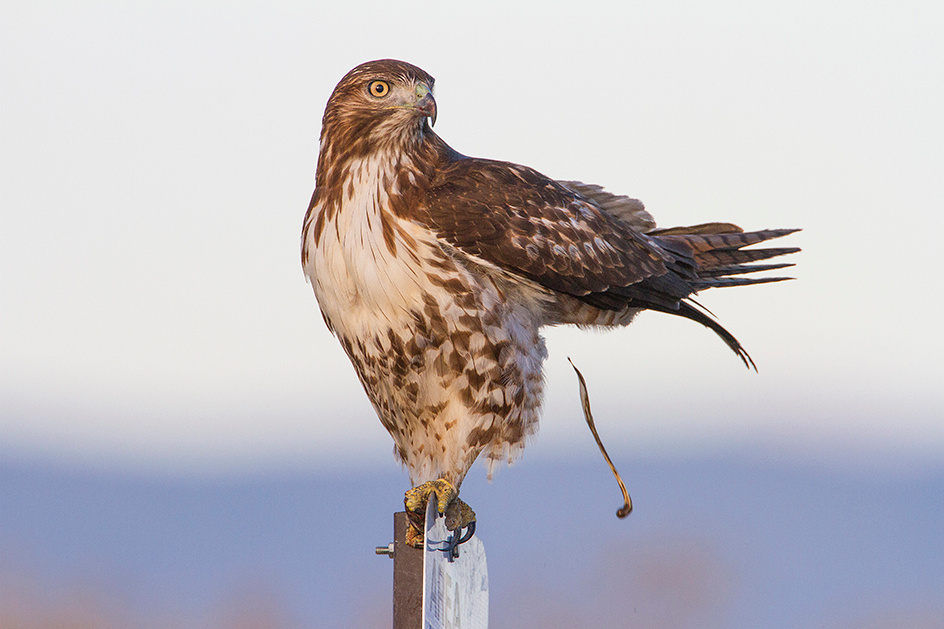

Many of the immature hawks were quite tame, allowing full frame head shots at near minimum focus distance.


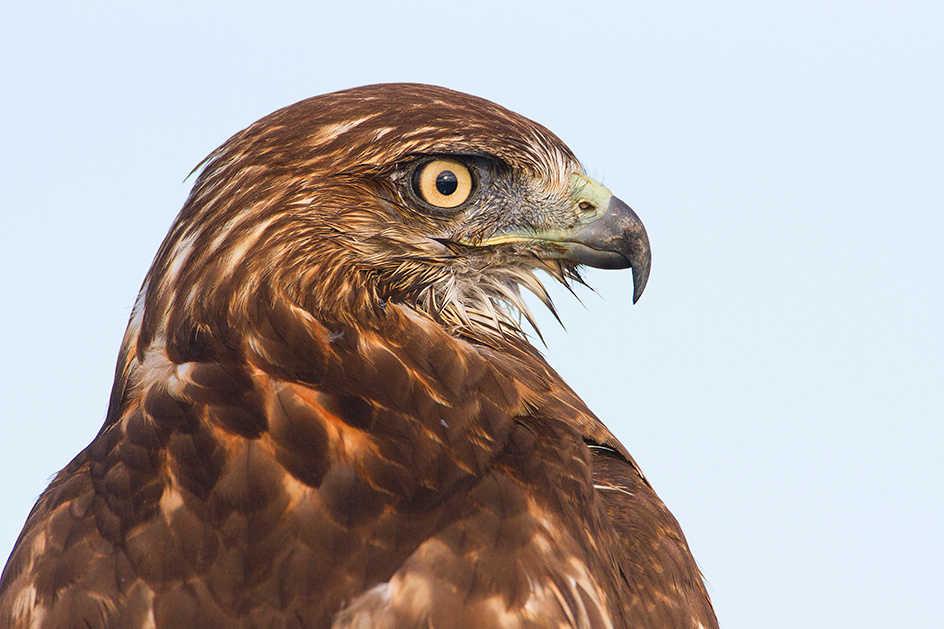
 The Klamath basin supports about 900 wintering bald eagles. Although, few birds were observed daily, but relatively few were present in early November. I was fortunate to catch this adult on a nest in some nice early morning light.
The Klamath basin supports about 900 wintering bald eagles. Although, few birds were observed daily, but relatively few were present in early November. I was fortunate to catch this adult on a nest in some nice early morning light.
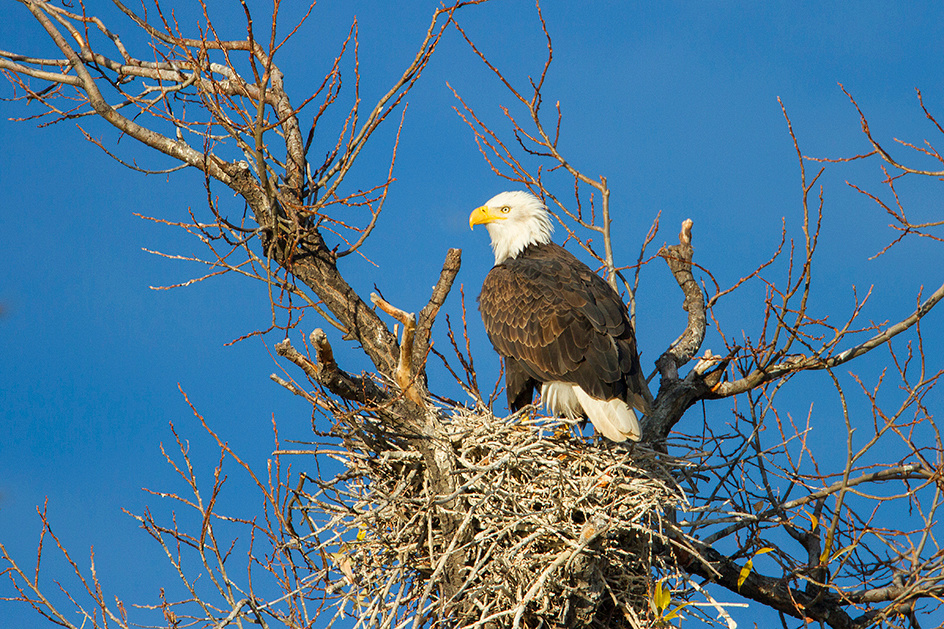
 A few merlin, ferruginous hawks, rough-legged hawks, prairie falcons and golden eagles were observed. The immature golden eagle below was photographed in some really nice warm light, but on a very unattractive perch.
A few merlin, ferruginous hawks, rough-legged hawks, prairie falcons and golden eagles were observed. The immature golden eagle below was photographed in some really nice warm light, but on a very unattractive perch.
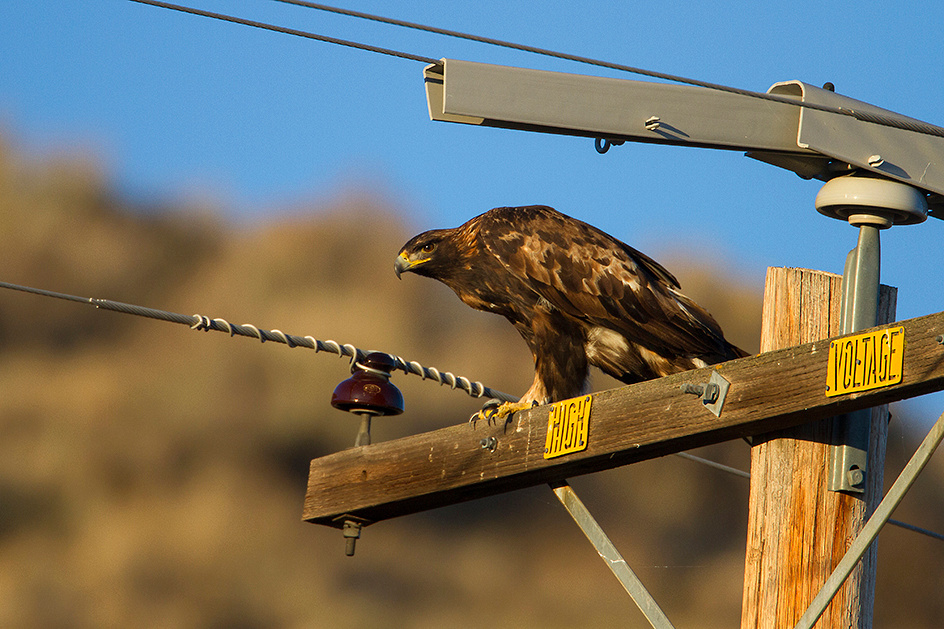

I have also had difficulty capturing decent images of American kestrel on natural perches, as they are small and difficult to approach. They also seem to prefer manmade perches. The male kestrel below chose a juniper perch and allowed a somewhat close approach.
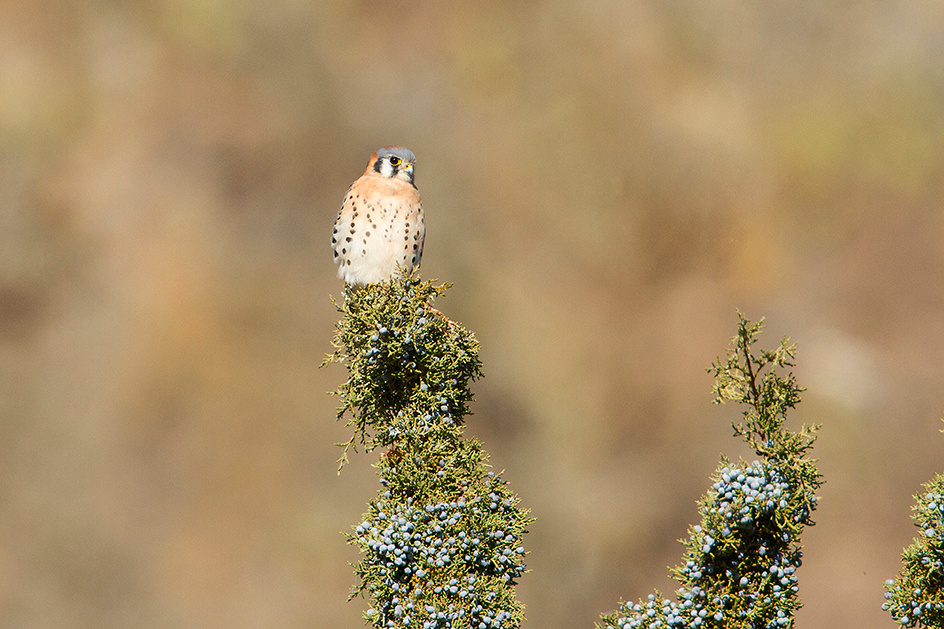
 Several great blue herons were present along the shoreline of Tulelake sump. They offered some opportunities for flight shots. I like the image below as they rarely provide a topside view while in flight.
Several great blue herons were present along the shoreline of Tulelake sump. They offered some opportunities for flight shots. I like the image below as they rarely provide a topside view while in flight.

 Good numbers of Bonaparte's gulls were also present foraging at Tulelake sump. Winter plumage is not as striking as their breeding plumage, but it was nice to capture a few representative images.
Good numbers of Bonaparte's gulls were also present foraging at Tulelake sump. Winter plumage is not as striking as their breeding plumage, but it was nice to capture a few representative images.
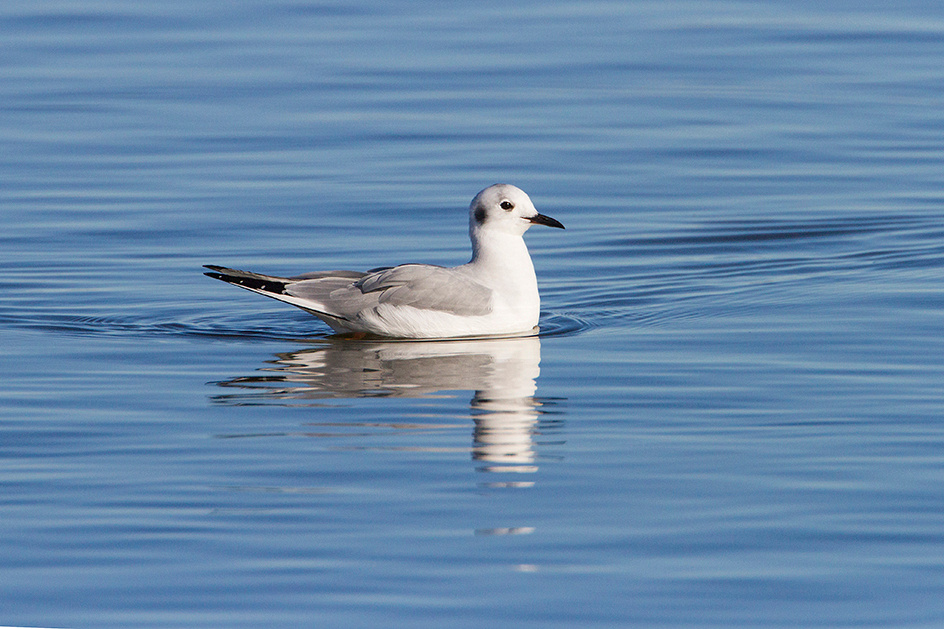
 We observed mule deer in almost every location we toured. Tulelake NWR and Malheur NWR offered the best photo opportunities. The buck below was actively courting a relatively uncooperative doe.
We observed mule deer in almost every location we toured. Tulelake NWR and Malheur NWR offered the best photo opportunities. The buck below was actively courting a relatively uncooperative doe.
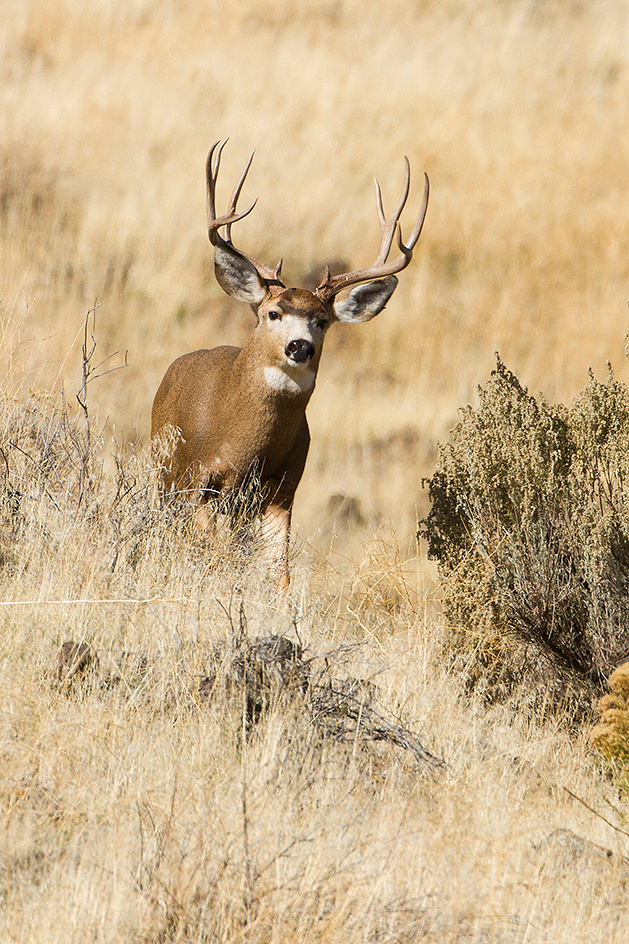

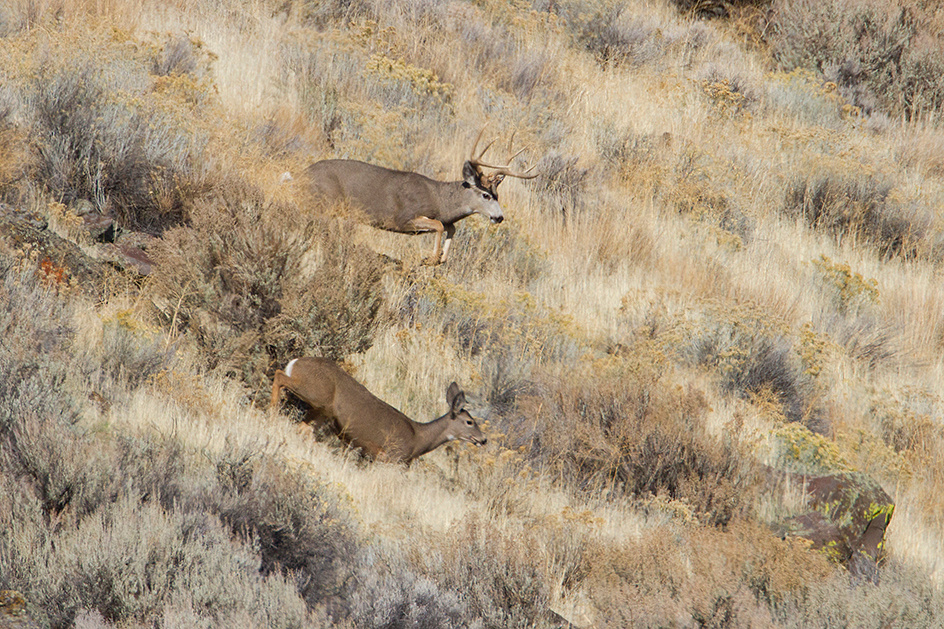
 The largest buck of the trip was also photographed at Tulelake NWR.
The largest buck of the trip was also photographed at Tulelake NWR.
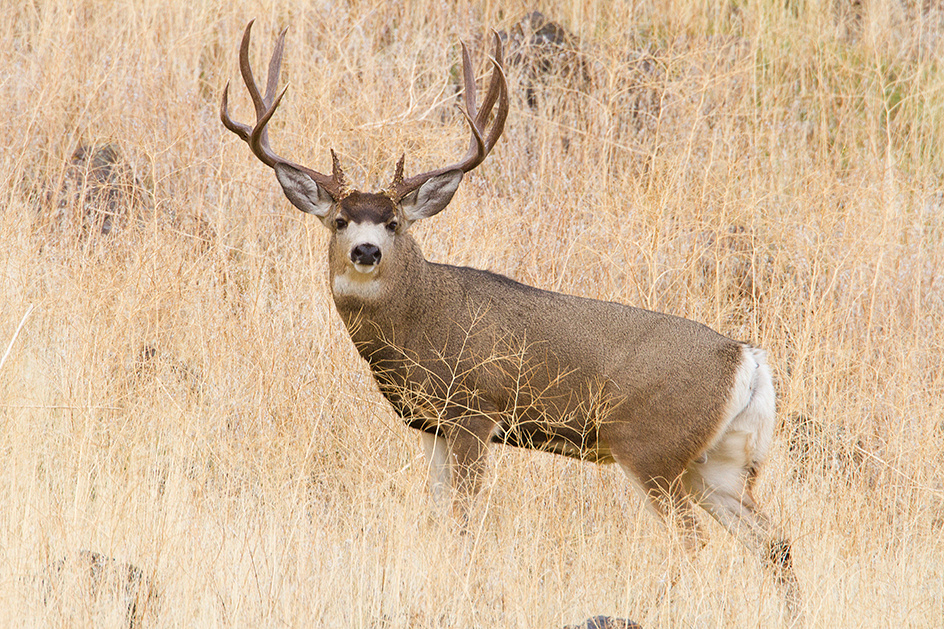

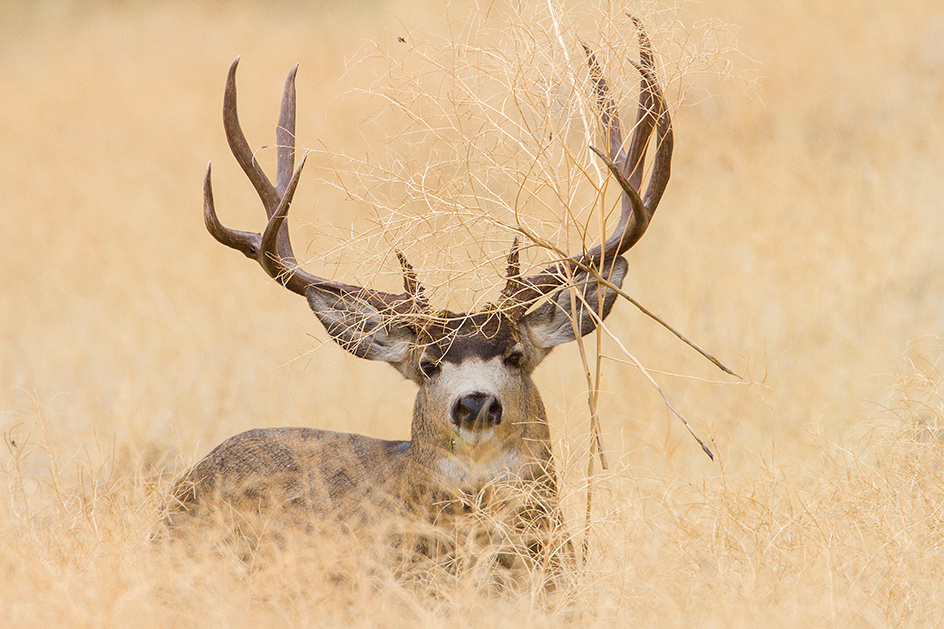
 Smaller bucks were also present at Tulelake NWR, but showed little rutting activity.
Smaller bucks were also present at Tulelake NWR, but showed little rutting activity.
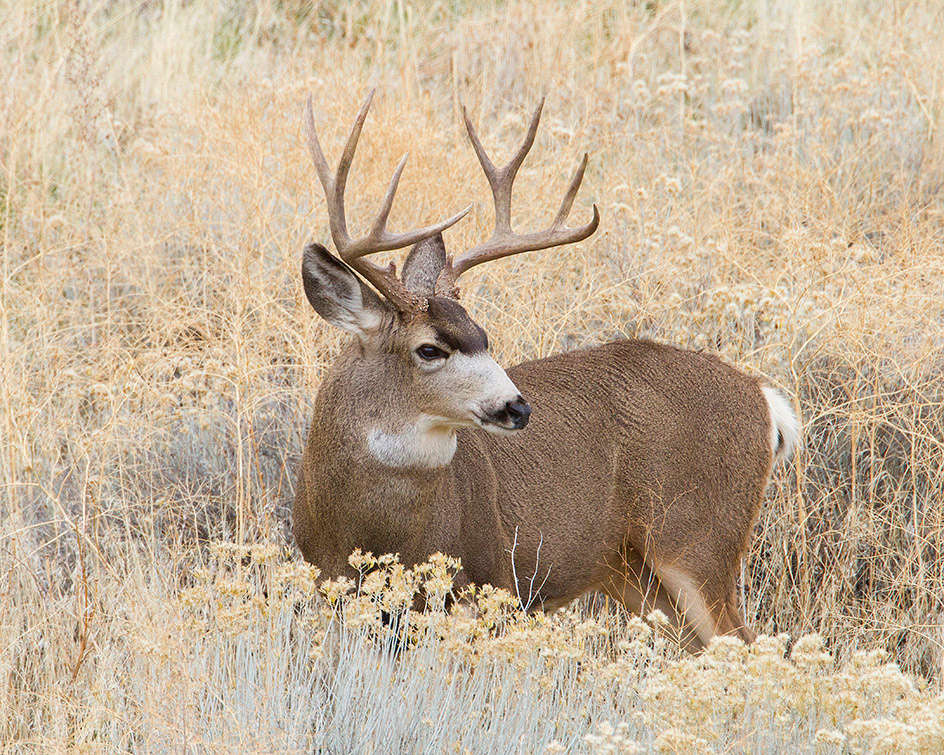

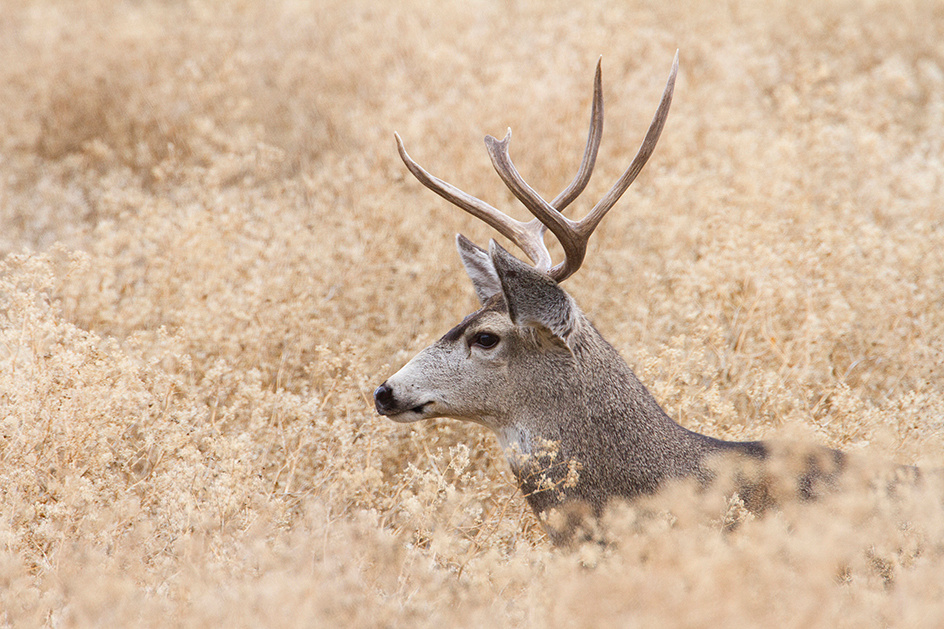
 A mature mule deer buck had gathered a small harem in one of the adjacent alfalfa fields. I was losing the light, but managed a few representative images of this big-bodied buck.
A mature mule deer buck had gathered a small harem in one of the adjacent alfalfa fields. I was losing the light, but managed a few representative images of this big-bodied buck.
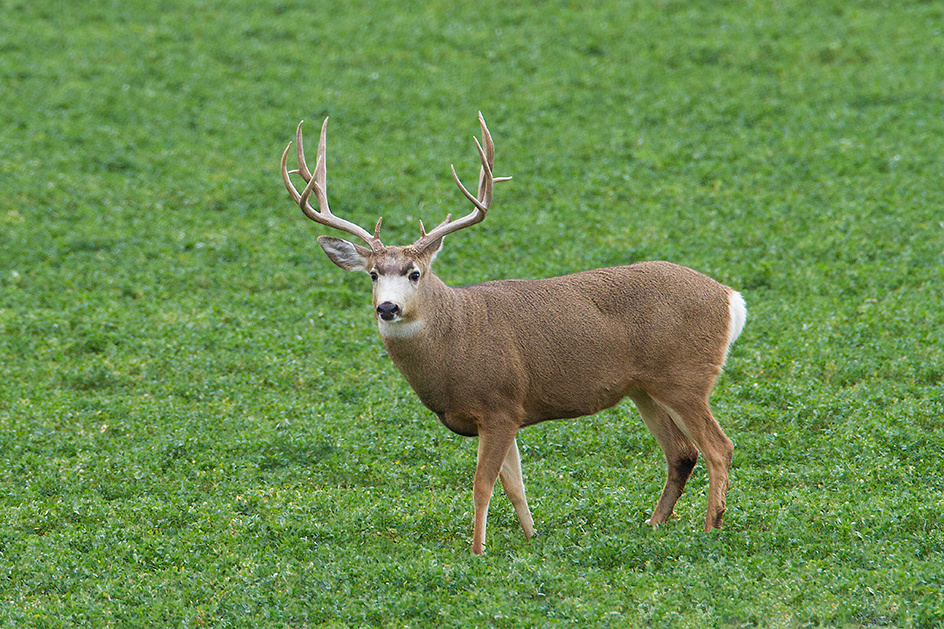

Malheur NWR also provided some photo opportunities on mature bucks including the non-typical buck pictured below.




I found the buck pictured below in some wonderful warm evening light which provided the best photo of the trip.
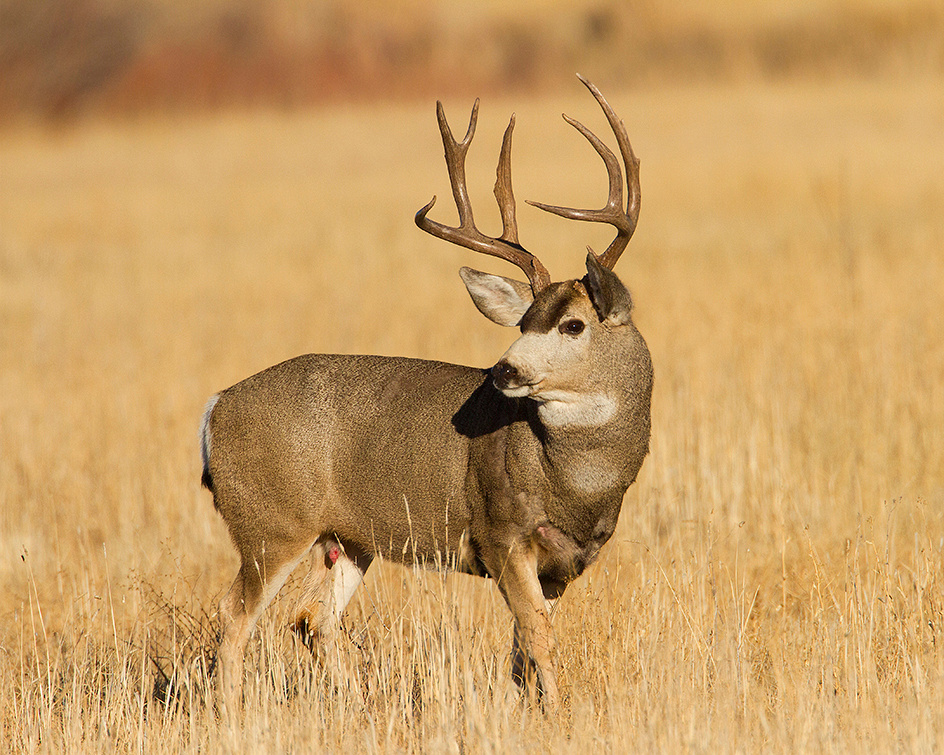

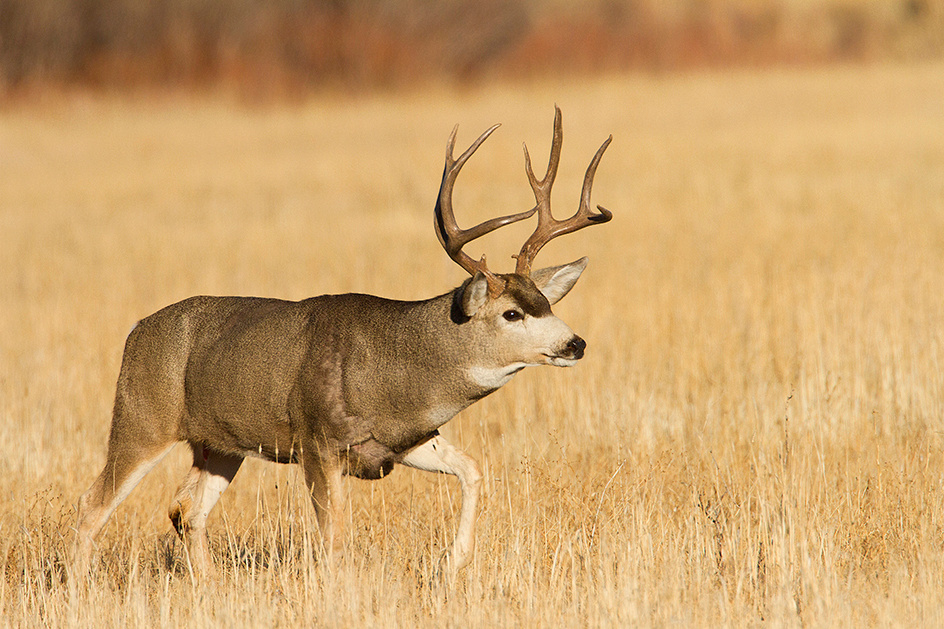
 Smaller bucks were present, but again did not appear to be exhibiting rutting behavior.
Smaller bucks were present, but again did not appear to be exhibiting rutting behavior.


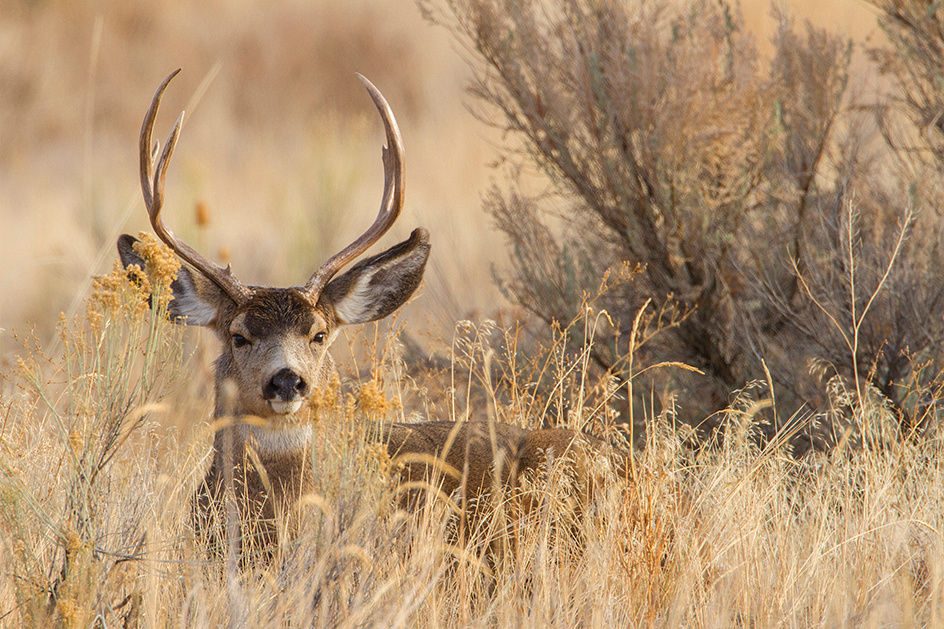
 The buck pictured below was still in velvet.
The buck pictured below was still in velvet.
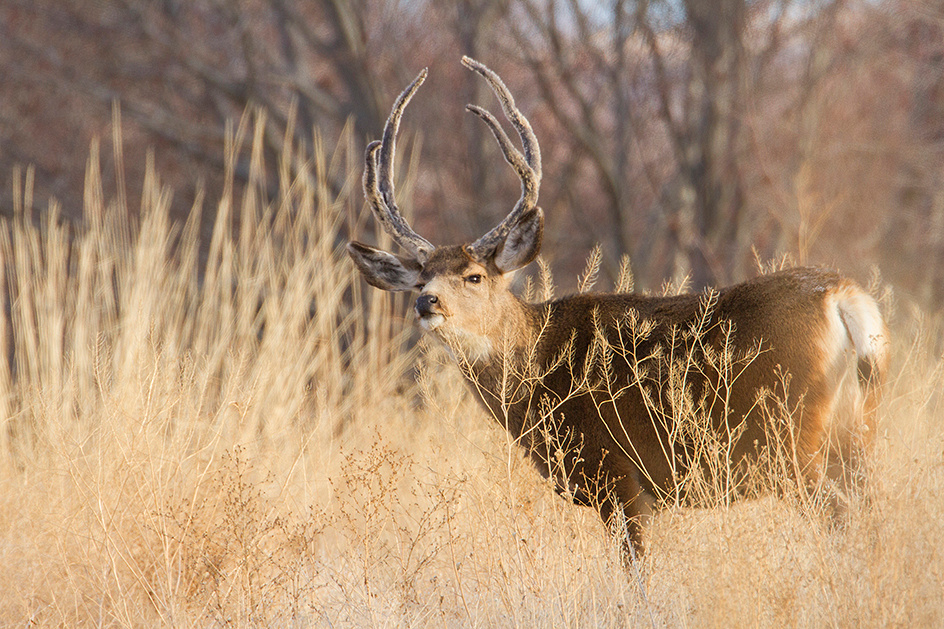




 We also saw several coyotes each day. They were either extremely wild, running at 300 yards, or quite tame.
We also saw several coyotes each day. They were either extremely wild, running at 300 yards, or quite tame.


We had several consecutive days of decent photography weather, which is not all that common in November. An enjoyable trip. If you plan to go, be aware that Malheur NWR HQ has not reopened following the occupation by domestic terrorists. At this point USF&WS has restricted access to the HQ for far longer than the terrorists.
Yellowstone and Grand Teton - September 2016
We recently returned from five days in Yellowstone National Park and two additional days in Grand Teton National Park. We timed our visit to correspond with the height of the elk rut and the peak of the fall colors. The late September period also overlaps the pronghorn and moose rut periods. Both parks were crowded, but nothing like the crowds of this summer where two hour waits to enter the park at West Yellowstone were reported.
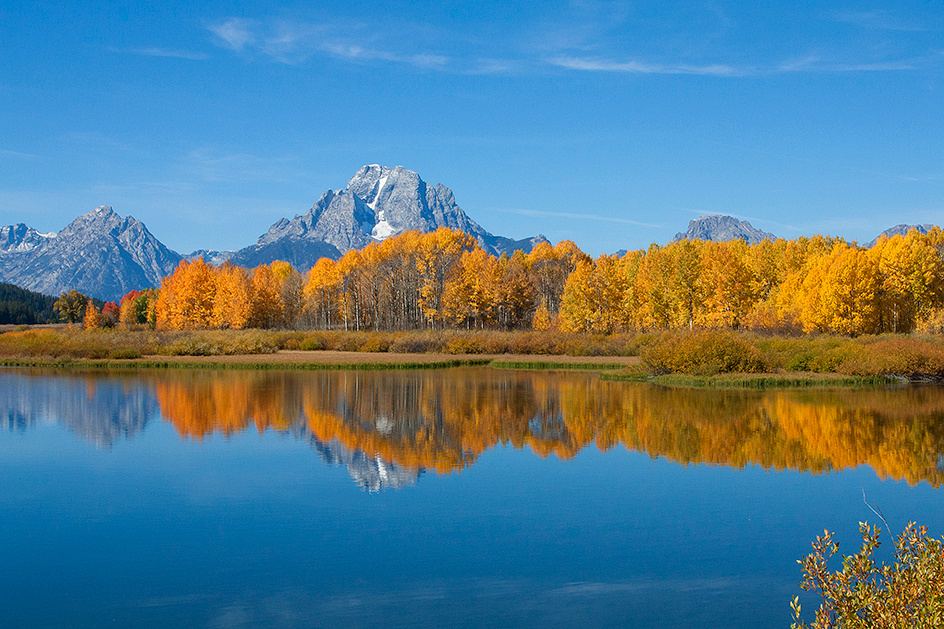
 We were able to capture some decent landscape images at some of the iconic locations at Grand Teton National Park, including Oxbow Bend. Not much snow left on the Tetons, but we had a windless morning which allowed decent reflections.
We were able to capture some decent landscape images at some of the iconic locations at Grand Teton National Park, including Oxbow Bend. Not much snow left on the Tetons, but we had a windless morning which allowed decent reflections.

 Mormon Barn is another popular photo subject in Grand Teton National Park. We had some residual ground fog apparent in the image, but otherwise I was pleased with my images from this location.
Mormon Barn is another popular photo subject in Grand Teton National Park. We had some residual ground fog apparent in the image, but otherwise I was pleased with my images from this location.
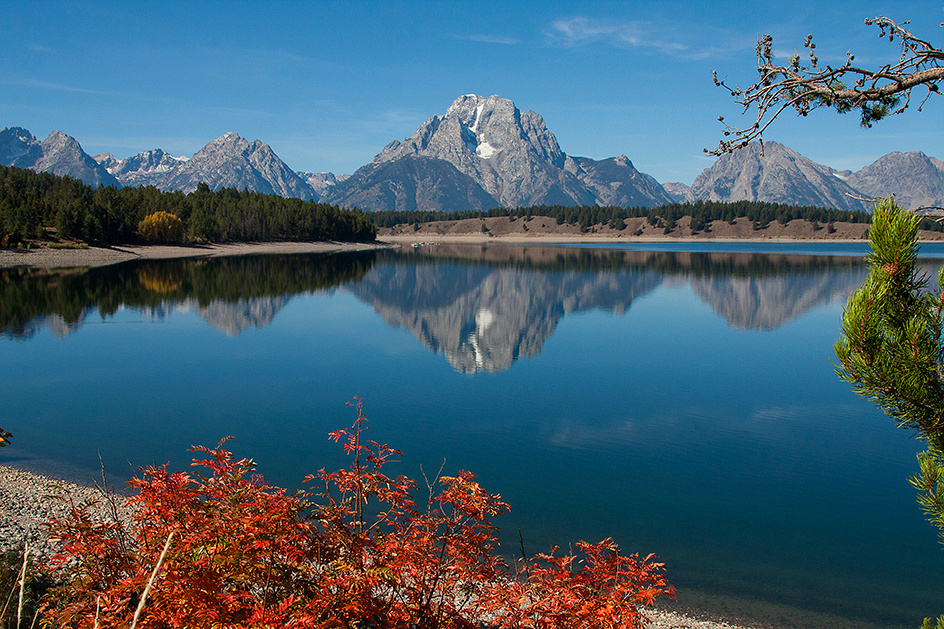
 Another popular photo location in Grand Teton National Park is Lake Jackson where reflection shots of the distant Tetons are possible on a calm morning.
Another popular photo location in Grand Teton National Park is Lake Jackson where reflection shots of the distant Tetons are possible on a calm morning.


A fall drive through the park provides opportunities for scenic landscape images at every turn. The image above was captured near Moose Junction. We were able to view pronghorn, moose, coyotes, and a few elk in the Grand Teton National Park, but few decent wildlife photo opportunities occurred.
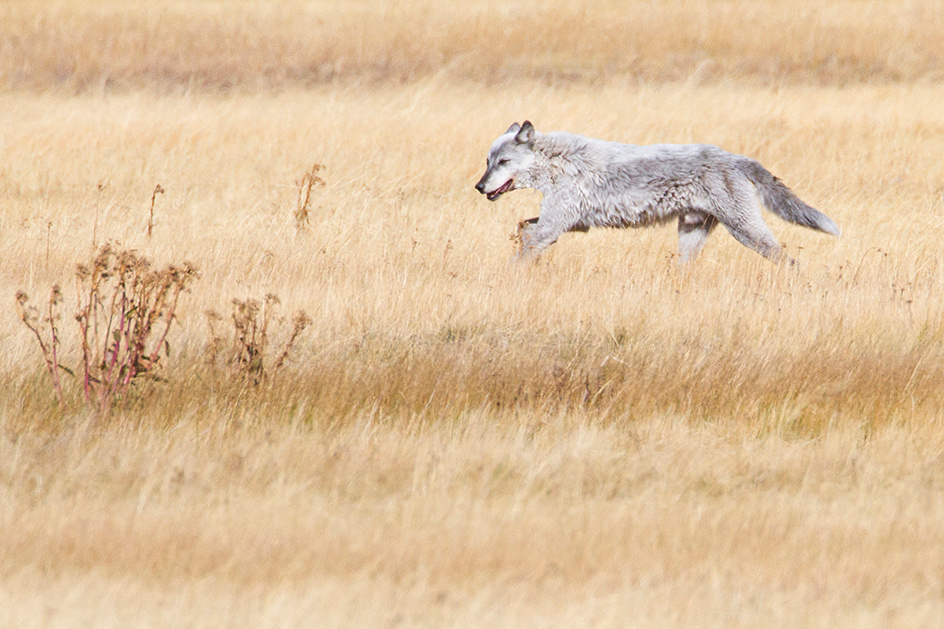
 During our trip to Yellowstone in late May, we were able to observe several very distant wolf hunts. Within 90 minutes of entering the park on this trip we watched an adult male wolf chase a cow and calf elk the length of Gibbon Meadows in mid day light at about 125 yards distance. Unfortunately, the wolf was wearing an ugly radio collar which I removed in Photoshop.
During our trip to Yellowstone in late May, we were able to observe several very distant wolf hunts. Within 90 minutes of entering the park on this trip we watched an adult male wolf chase a cow and calf elk the length of Gibbon Meadows in mid day light at about 125 yards distance. Unfortunately, the wolf was wearing an ugly radio collar which I removed in Photoshop.
Wolf hunts are very exciting and I can understand why many visitors spend their entire vacation behind spotting scopes attempting to observe hunting behaviors. On the first day of our recent trip, a cow bison was killed in Lamar Valley by a speeding SUV. The rangers drug the carcass off the road about 150 yards. Large crowds of photographers and wolf watchers lined the road from dawn till dark every day. We drove by everyday, but during the five days we were in the park, no one reported any wolves or bears on the carcass during daylight hours.
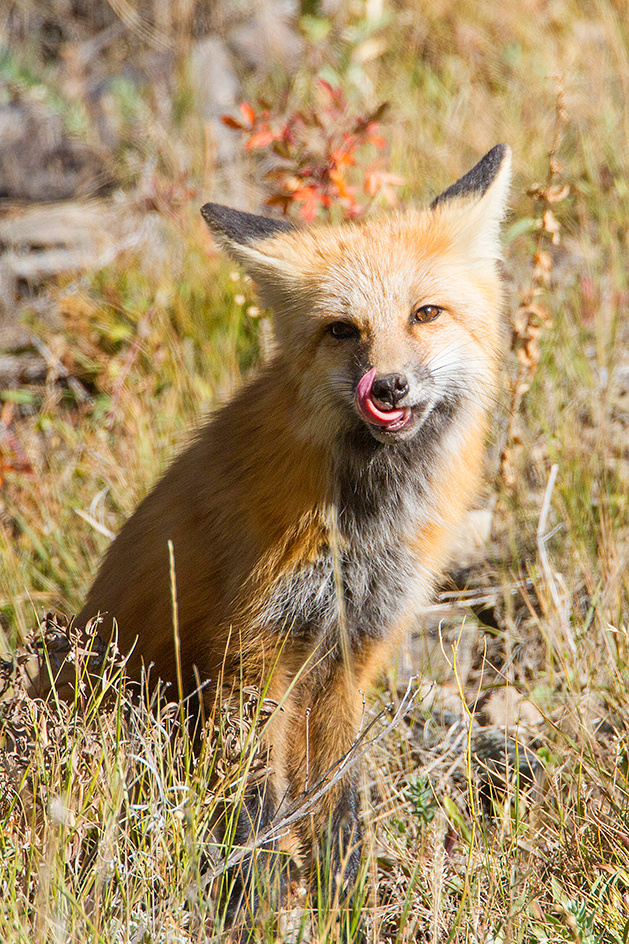



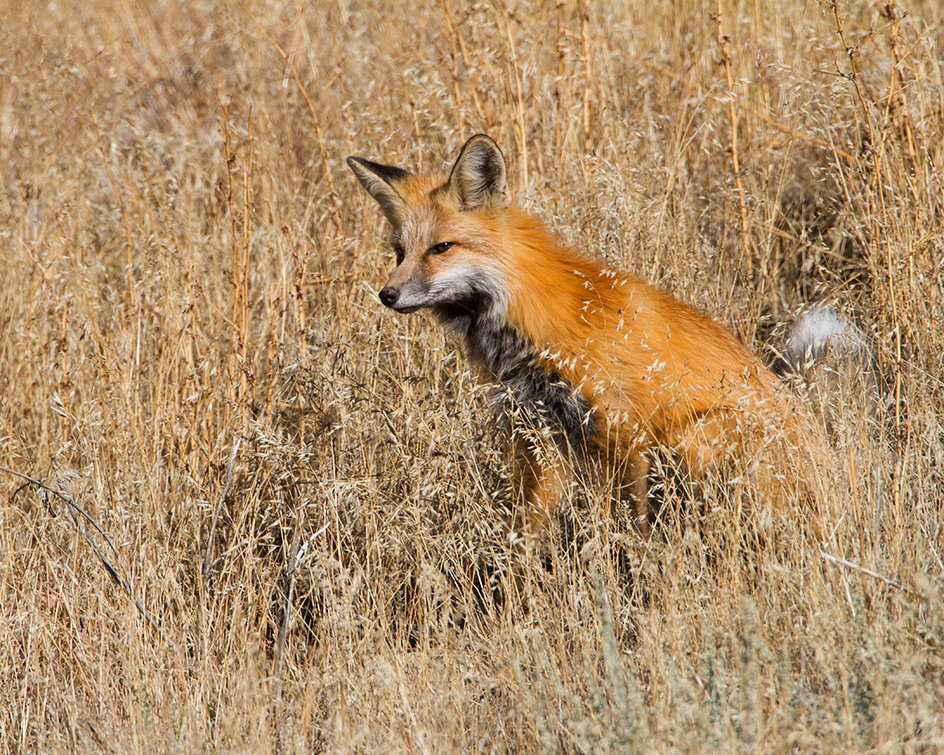

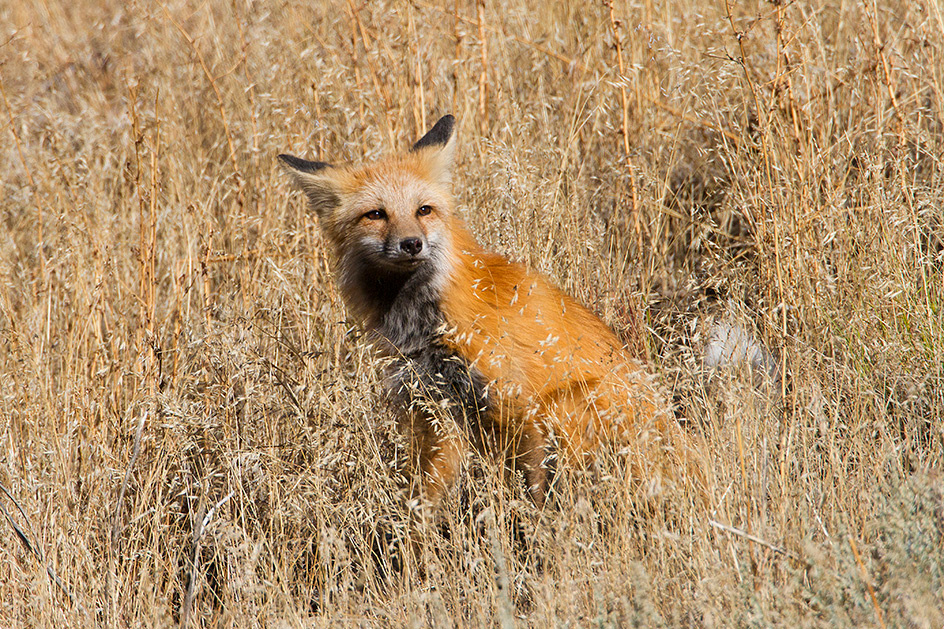
 On our last morning in Yellowstone we happened upon a red fox asleep in tall grass with only the tips of his ears visible. After a very lengthy wait, I finally gave up on getting any images. As I was putting the camera and tripod back in the vehicle, he decided to wake up and gave me some nice poses at near minimum focus distance. These little guys are quite photogenic and very tame in Yellowstone. One of my favorite wildlife photo subjects.
On our last morning in Yellowstone we happened upon a red fox asleep in tall grass with only the tips of his ears visible. After a very lengthy wait, I finally gave up on getting any images. As I was putting the camera and tripod back in the vehicle, he decided to wake up and gave me some nice poses at near minimum focus distance. These little guys are quite photogenic and very tame in Yellowstone. One of my favorite wildlife photo subjects.
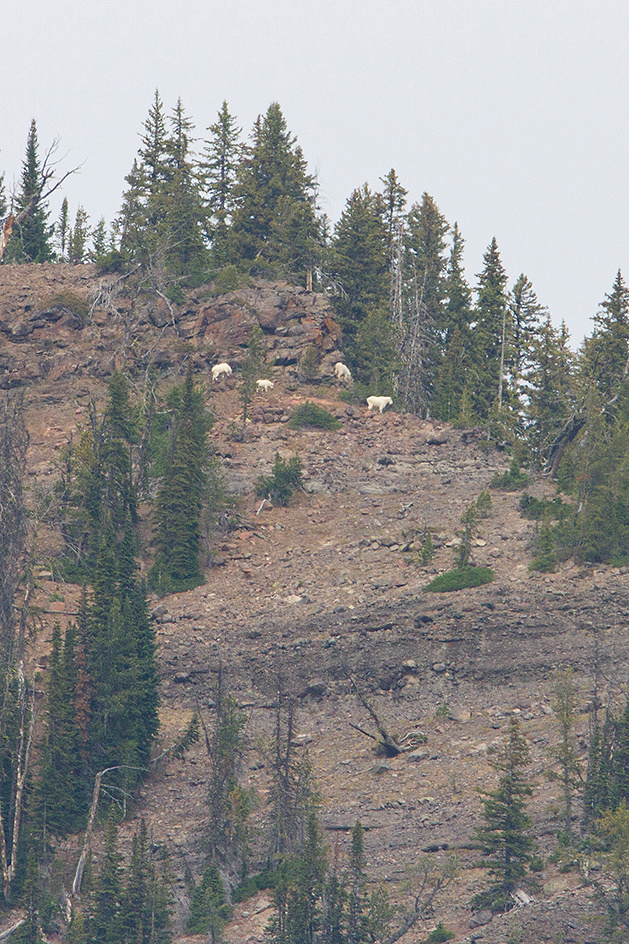

The documentation shot above was our first sighting of mountain goats in Yellowstone. This image was taken from about 3/4 of a mile away near Pebble Creek campground. Not a great image, but so cool to finally see these introduced animals in the park.
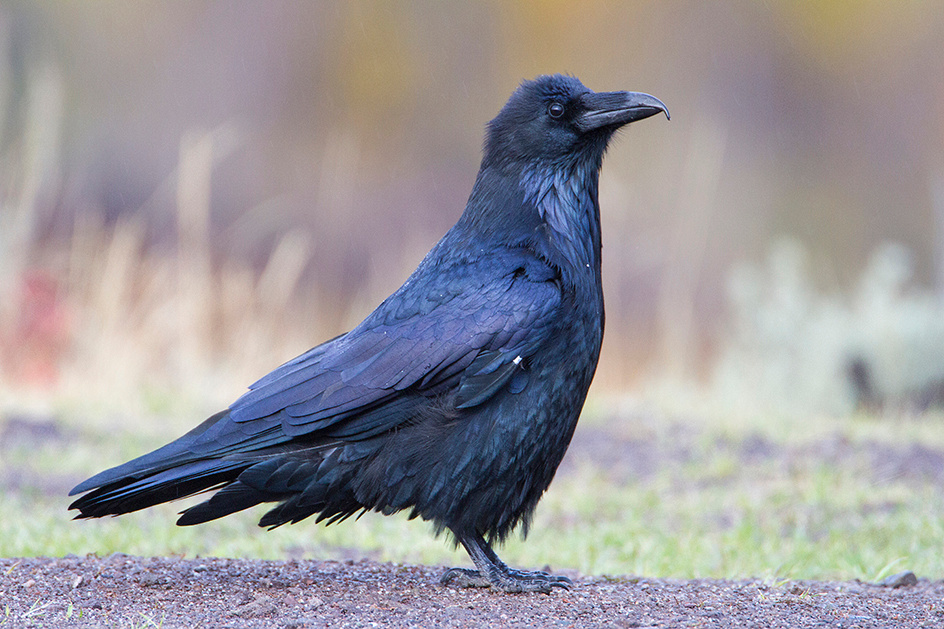
 We saw and photographed very few birds in either park. I had hoped to photograph a great gray owl and a pine grosbeak, but saw neither. I photographed this common raven along the roadside near Petrified Tree.
We saw and photographed very few birds in either park. I had hoped to photograph a great gray owl and a pine grosbeak, but saw neither. I photographed this common raven along the roadside near Petrified Tree.

 We saw several trumpeter swans in Yellowstone and I was able to improve on my May images of this federal endangered species. I captured this image at mid day on the Firehole River.
We saw several trumpeter swans in Yellowstone and I was able to improve on my May images of this federal endangered species. I captured this image at mid day on the Firehole River.

 We saw and photographed big-horned sheep every day including several nice rams. This ram was sunning along the roadside on Sylvan Pass in mid day light. It is my opinion that most park visitors drive way to fast to locate wildlife. This ram was 20 feet off the main road and hundreds of cars drove by without spotting him.
We saw and photographed big-horned sheep every day including several nice rams. This ram was sunning along the roadside on Sylvan Pass in mid day light. It is my opinion that most park visitors drive way to fast to locate wildlife. This ram was 20 feet off the main road and hundreds of cars drove by without spotting him.
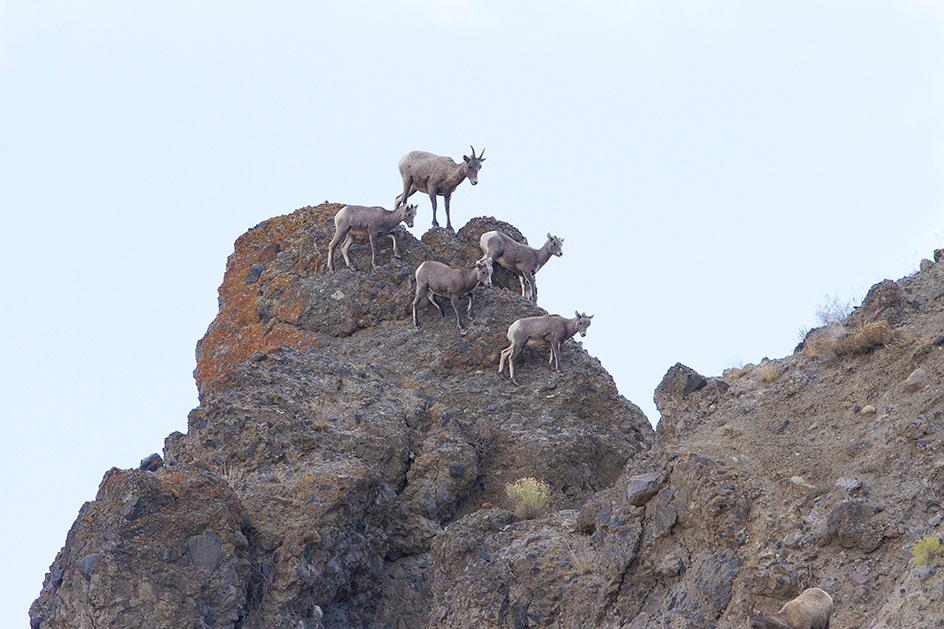
 This nicely posed group of big-horned sheep ewes and lambs were on one of the outcrops along the Gardiner River Gorge near sunset.
This nicely posed group of big-horned sheep ewes and lambs were on one of the outcrops along the Gardiner River Gorge near sunset.


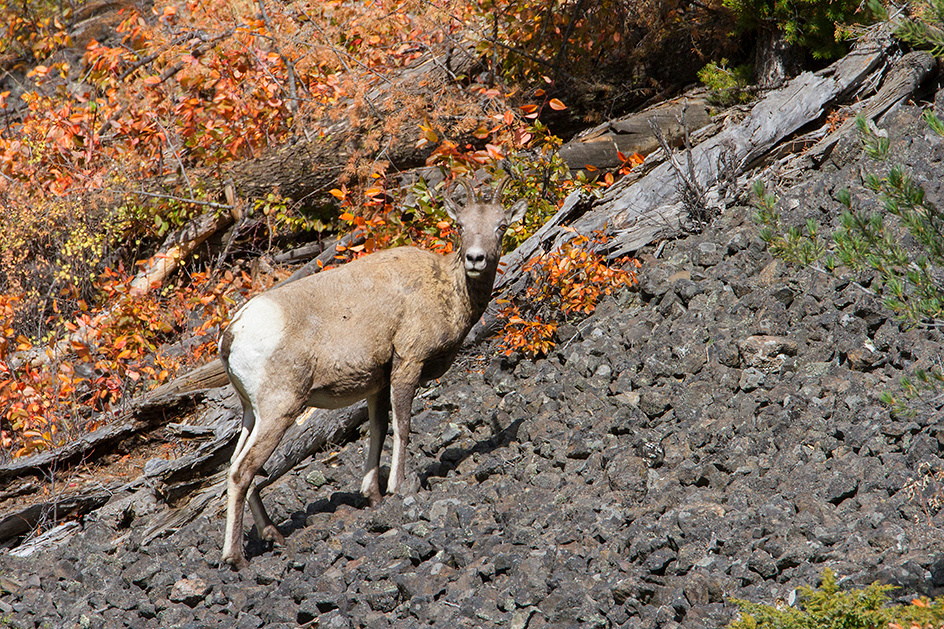
 We found herds of big-horned sheep along the roadside near Tower almost every day. I am constantly amazed at the ignorance of some park visitors related to wildlife identification. I regularly heard both pronghorn and big-horned sheep misidentified as deer.
We found herds of big-horned sheep along the roadside near Tower almost every day. I am constantly amazed at the ignorance of some park visitors related to wildlife identification. I regularly heard both pronghorn and big-horned sheep misidentified as deer.
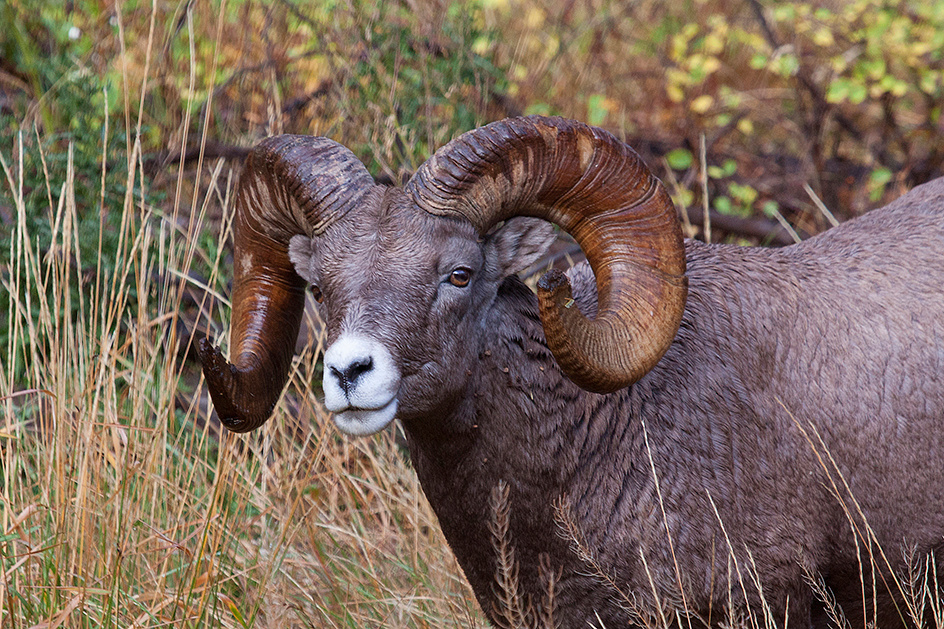
 Two large, mature, big-horned rams were hanging out near Tower every day and were very popular photo subjects.
Two large, mature, big-horned rams were hanging out near Tower every day and were very popular photo subjects.


Bison were common although not as widely distributed as when we visited in May. They were also more photogenic in September than in the spring when they were shedding their winter coats.

 Whenever possible I tried to capture wildlife with a background including some fall color. With bison, I was unsuccessful. In fact I have captured few good bison images in my two most recent trips. They are incredibly common, widespread and tame, but still no images that I feel are better than just average.
Whenever possible I tried to capture wildlife with a background including some fall color. With bison, I was unsuccessful. In fact I have captured few good bison images in my two most recent trips. They are incredibly common, widespread and tame, but still no images that I feel are better than just average.
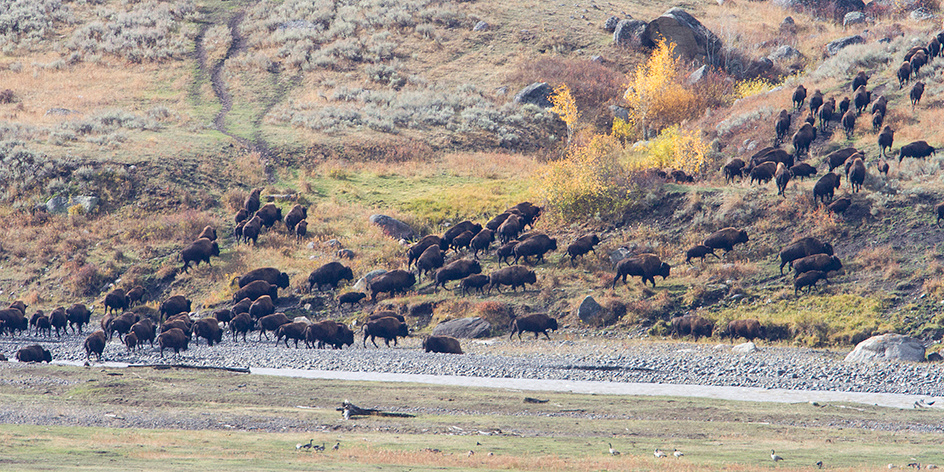
 The above photo was captured in Lamar Valley as a large and distant bison herd crossed the Lamar River. The entire herd ran from the hills north of the valley, across the road, across the valley and across the river for no apparent reason. As they stampeded they picked up more and more bison until several hundred animals crossed the river and milled around the far bank. I was unable to detect any predator or other factor responsible for the mass movement.
The above photo was captured in Lamar Valley as a large and distant bison herd crossed the Lamar River. The entire herd ran from the hills north of the valley, across the road, across the valley and across the river for no apparent reason. As they stampeded they picked up more and more bison until several hundred animals crossed the river and milled around the far bank. I was unable to detect any predator or other factor responsible for the mass movement.

 These were the last of the herd to cross Lamar Valley on the run in their odd rolling gait.
These were the last of the herd to cross Lamar Valley on the run in their odd rolling gait.
We observed a single black bear several times, but never captured any keeper images. No grizzly bears were observed.
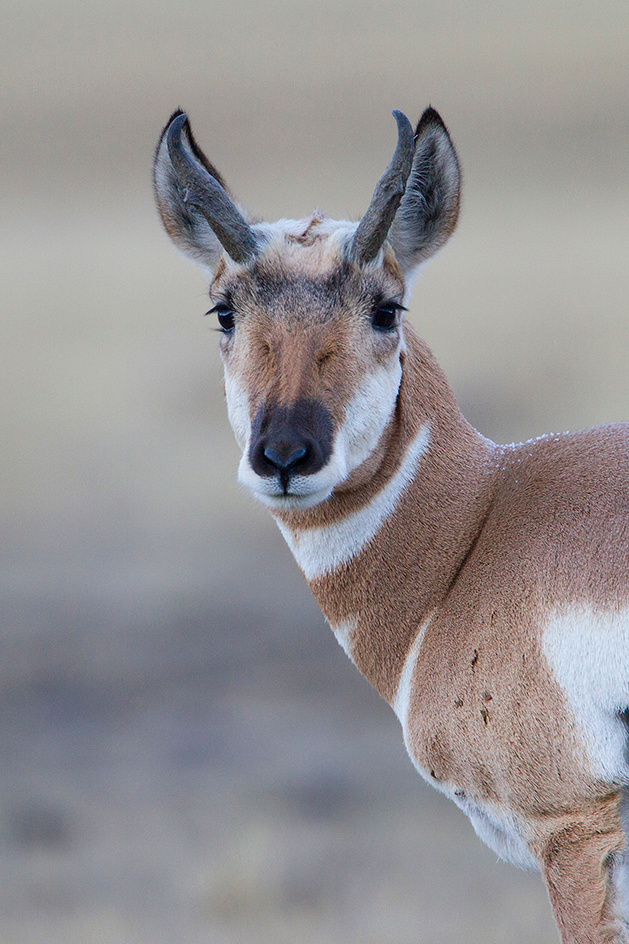

Pronghorn were widespread and definitely in the rut. We were able to watch a lot of pronghorn breeding related behavior including some on the Gardiner High School athletic field.
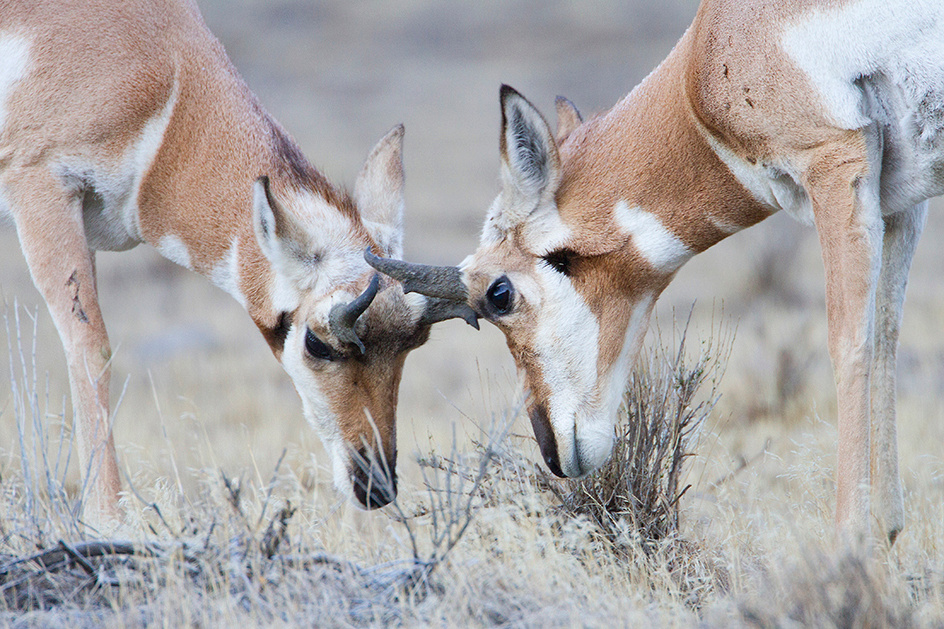
 These young pronghorn bucks were doing some light sparring.
These young pronghorn bucks were doing some light sparring.
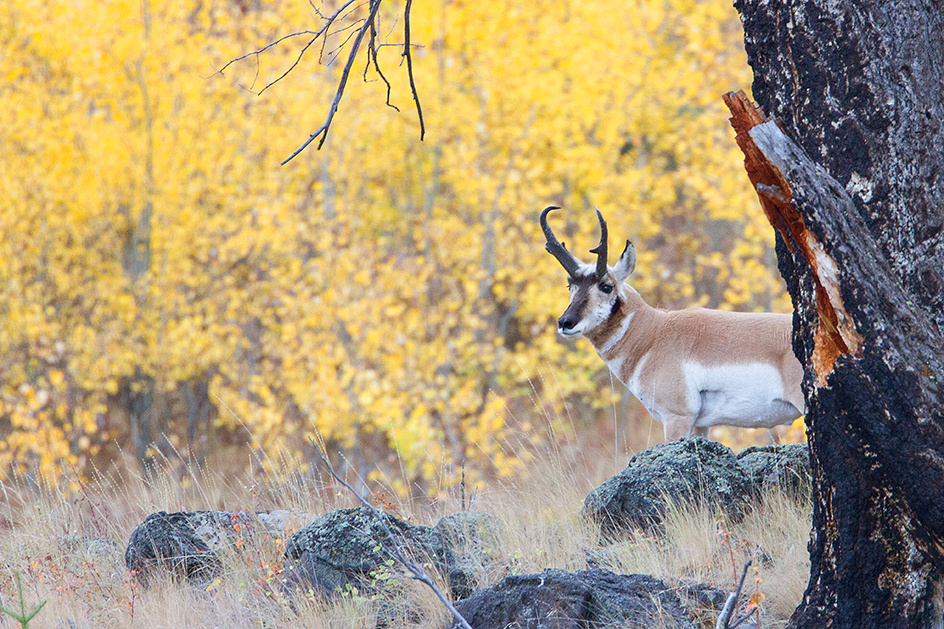


 I was able to capture a few images of pronghorn with some nice fall colors.
I was able to capture a few images of pronghorn with some nice fall colors.
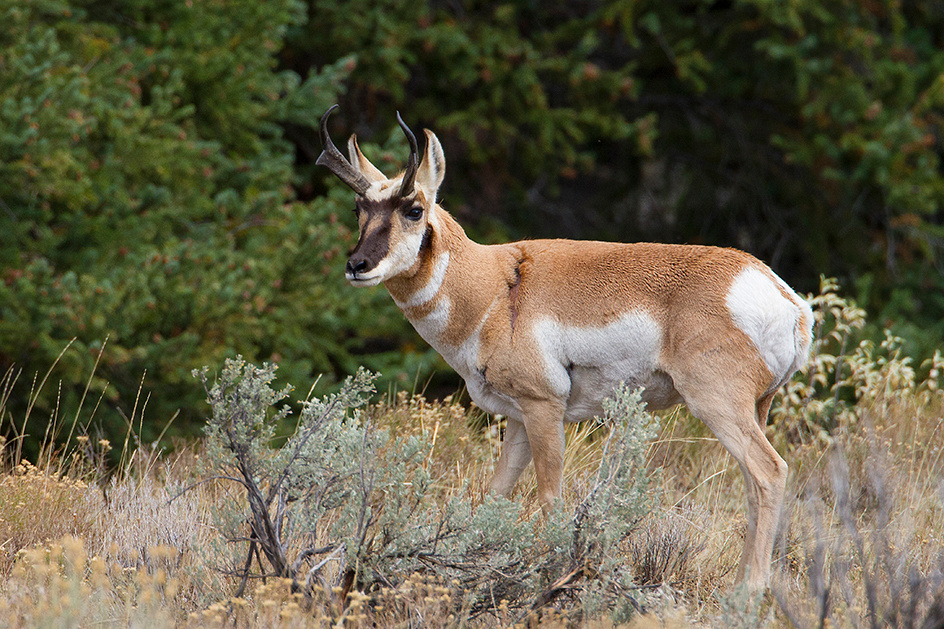

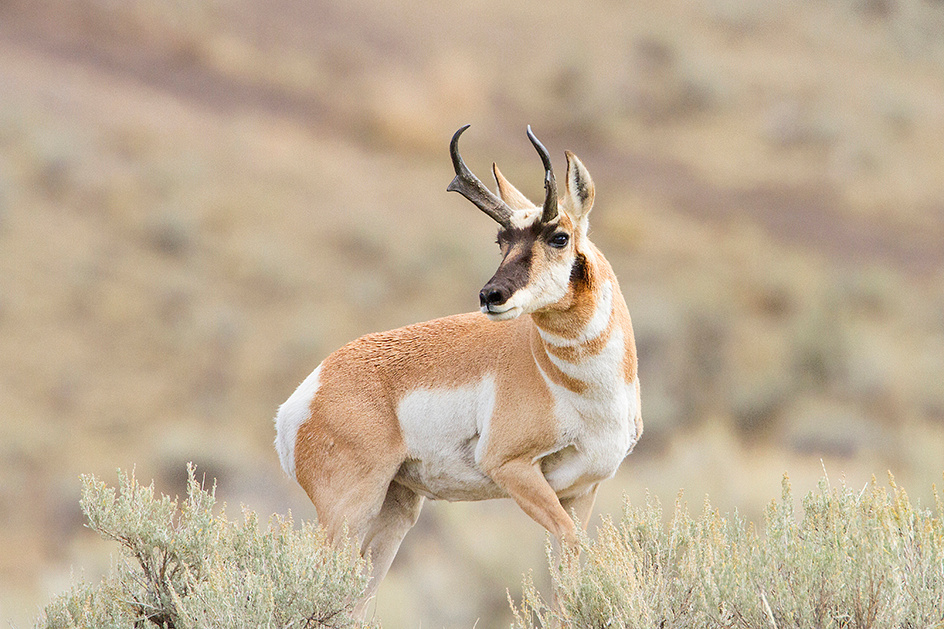
 Mature bucks were constantly on the move herding their harems and chasing off rivals.
Mature bucks were constantly on the move herding their harems and chasing off rivals.

 We were fortunate to capture a few images of pronghorn breeding behavior. It was interesting in that the male approached the female standing erect on his hind legs and walked into her while placing very little of his body weight on her. I thought that it was pretty obvious that we were viewing copulation, but many visitors asked me what they were doing.
We were fortunate to capture a few images of pronghorn breeding behavior. It was interesting in that the male approached the female standing erect on his hind legs and walked into her while placing very little of his body weight on her. I thought that it was pretty obvious that we were viewing copulation, but many visitors asked me what they were doing.
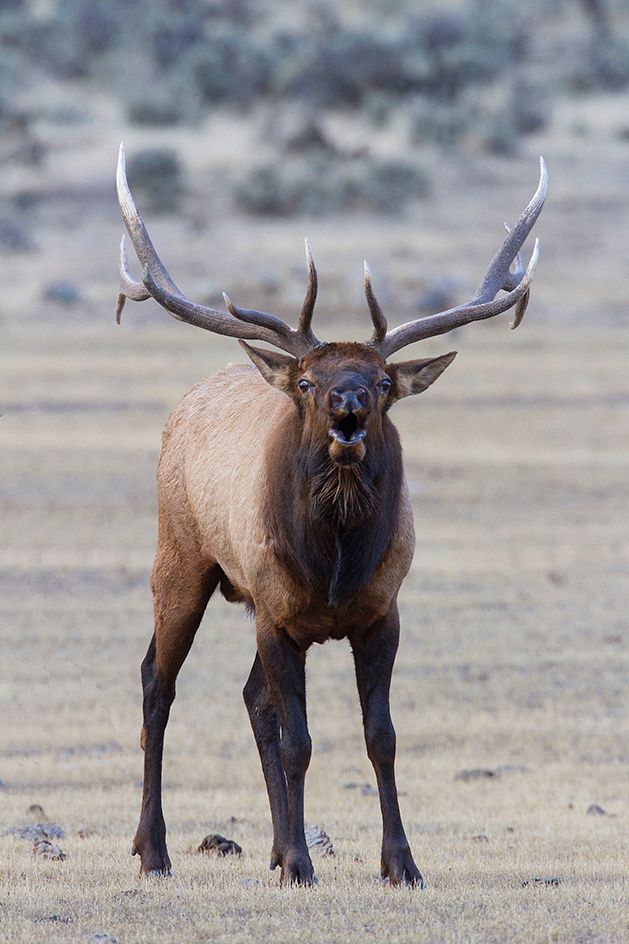

The principal purpose of our trip was to observe and record bull elk breeding activities including bugling, brush beating, wallowing, harem keeping, and fighting, We were successful in that we were able to photograph 4-6 bulls per day frequently involved in these activities. The bull above came out of the foothills on private property north of Gardiner near dusk with at least 80 cows and calves. Lots of bugling activity captured, including this down the pipe image.
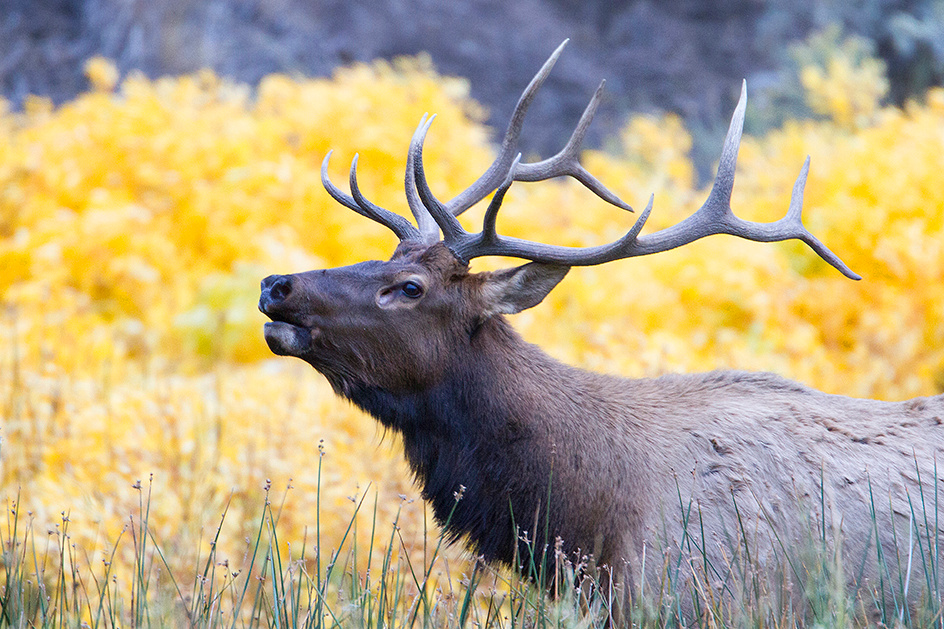
 My camera, a Canon 7D, is less than ideal under low light conditions, I was forced to use ISO 800 to gain enough shutter speed to create sharp images, but at ISO 800, I frequently get very noisy images, especially in the darker areas as shown above.
My camera, a Canon 7D, is less than ideal under low light conditions, I was forced to use ISO 800 to gain enough shutter speed to create sharp images, but at ISO 800, I frequently get very noisy images, especially in the darker areas as shown above.
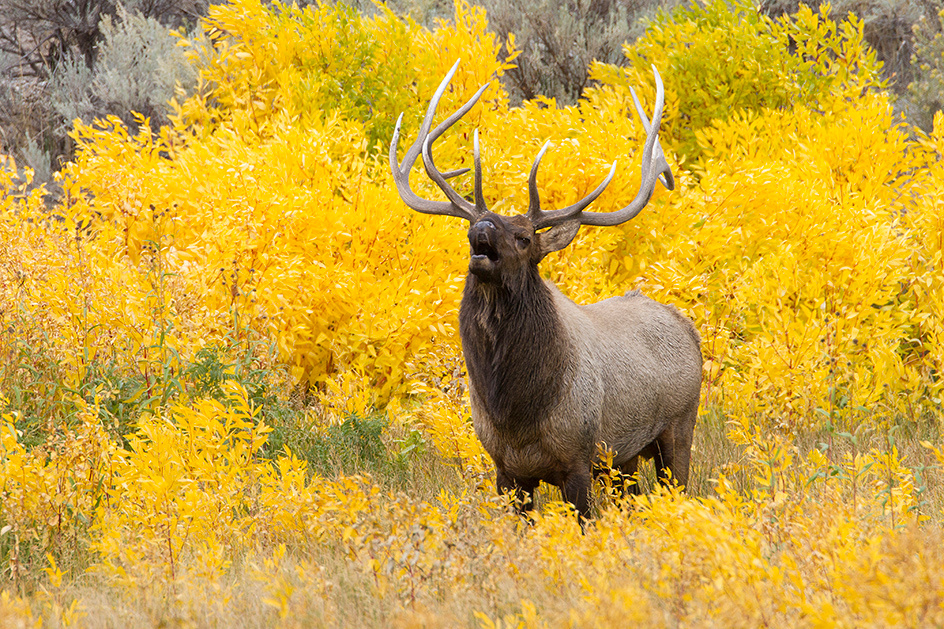
 Elk were not very widespread in the park during our visit. Most of the bulls we saw were within 5-7 miles of Mammoth or Gardiner.
Elk were not very widespread in the park during our visit. Most of the bulls we saw were within 5-7 miles of Mammoth or Gardiner.
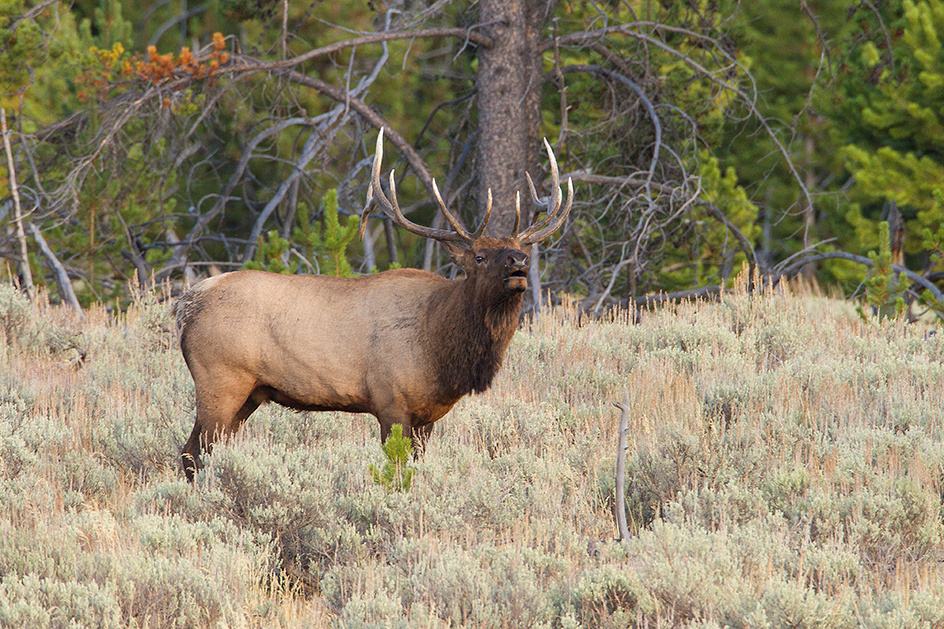
 Herd bull on Swan Lake Flat near dusk
Herd bull on Swan Lake Flat near dusk
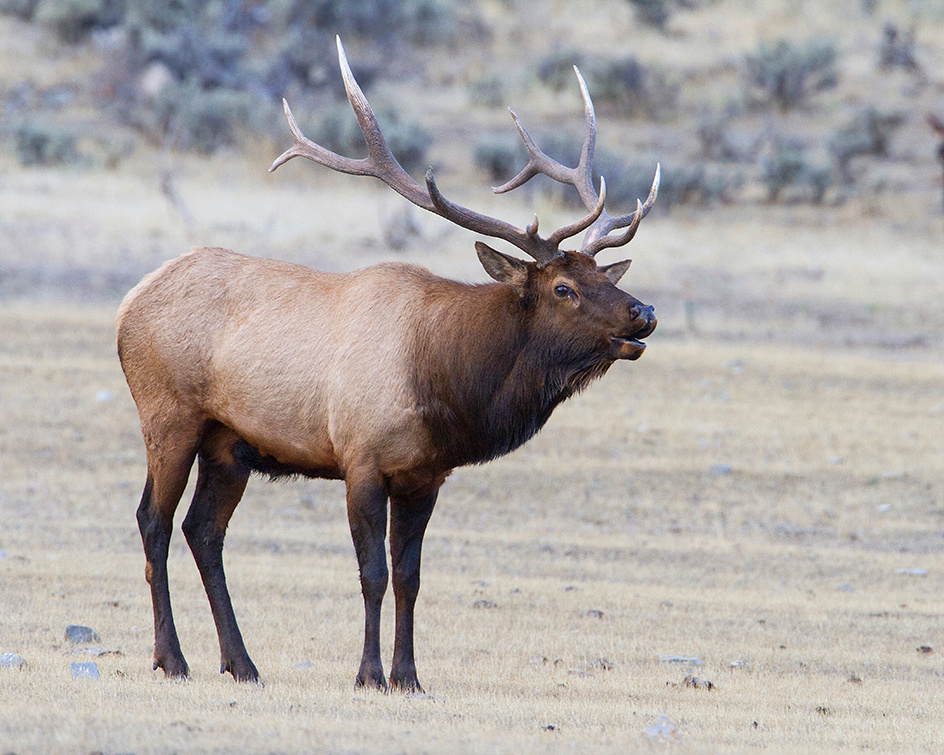


 Lots of bugling was heard, which is not unlike a shrill whistle. An odd vocalization to eminate from so large an animal. Truly a sound of the fall in the Rocky Mountains. One evening were parked near the southern end of Swan Lake Flat and had 3 bulls bugling within 1/2 mile of each other.
Lots of bugling was heard, which is not unlike a shrill whistle. An odd vocalization to eminate from so large an animal. Truly a sound of the fall in the Rocky Mountains. One evening were parked near the southern end of Swan Lake Flat and had 3 bulls bugling within 1/2 mile of each other.
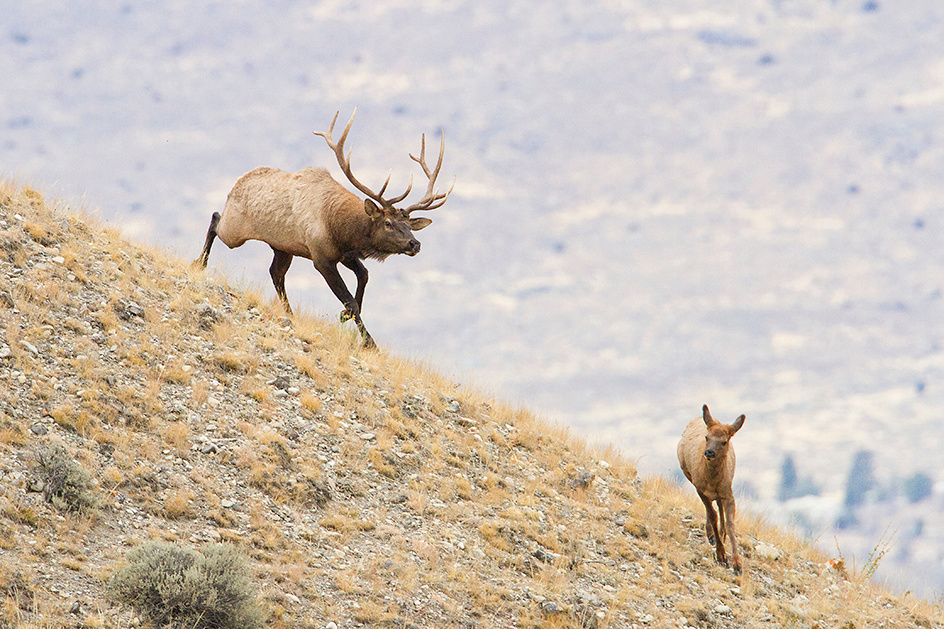
 The bulls spent a great deal of time and energy attempting to keep their harem together. They exhibit great speed and herding skill on steep and unstable terrain.
The bulls spent a great deal of time and energy attempting to keep their harem together. They exhibit great speed and herding skill on steep and unstable terrain.

 This bull above had kept a good sized harem together all day until a much larger rival appeared and the smaller bull relinquished his cows without a fight.
This bull above had kept a good sized harem together all day until a much larger rival appeared and the smaller bull relinquished his cows without a fight.
The bull below was the resident herd bull in downtown Gardiner. Some odd palmation on his short antlers.


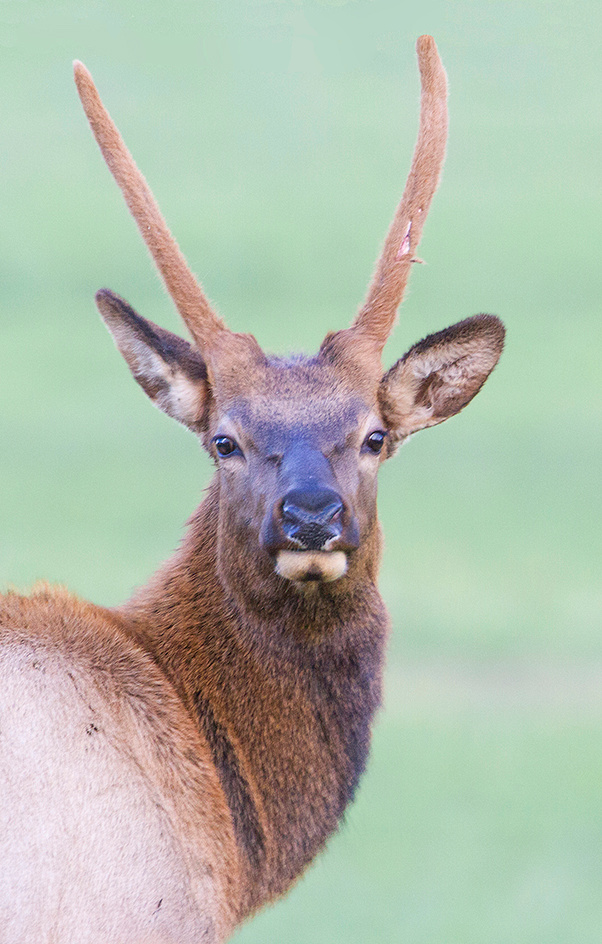

Spike bull head shot captured near Gardiner


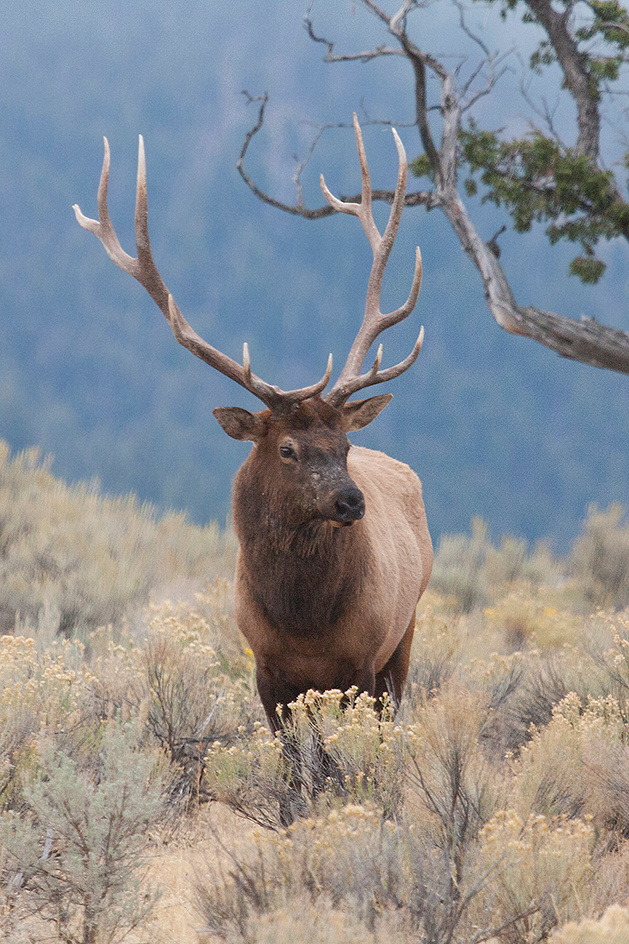

Pictured above is "Touchdown" the resident herd bull in downtown Mammoth. He was easy to find, but difficult to photograph without a car, house, or an I-pad wielding tourist in the background. Easily the most photographed single animal in Yellowstone during our visit. He had two rangers in attendance constantly to keep the selfie crowd at a safe distance.
I had some perfect morning light on the cow elk below along the Moose-Wilson Road in the Grand Teton National Park. One of the few cow elk images I kept from the trip.
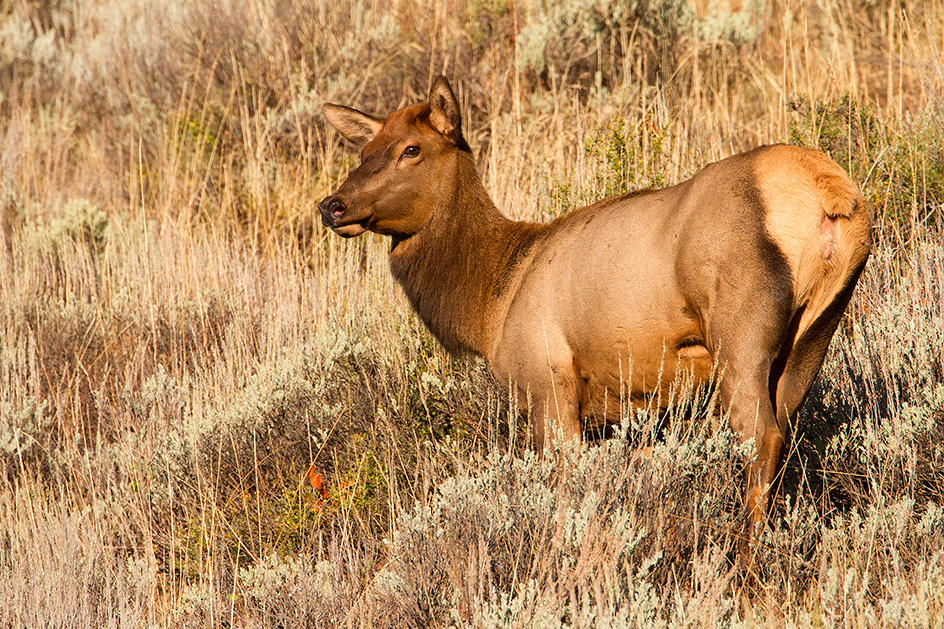



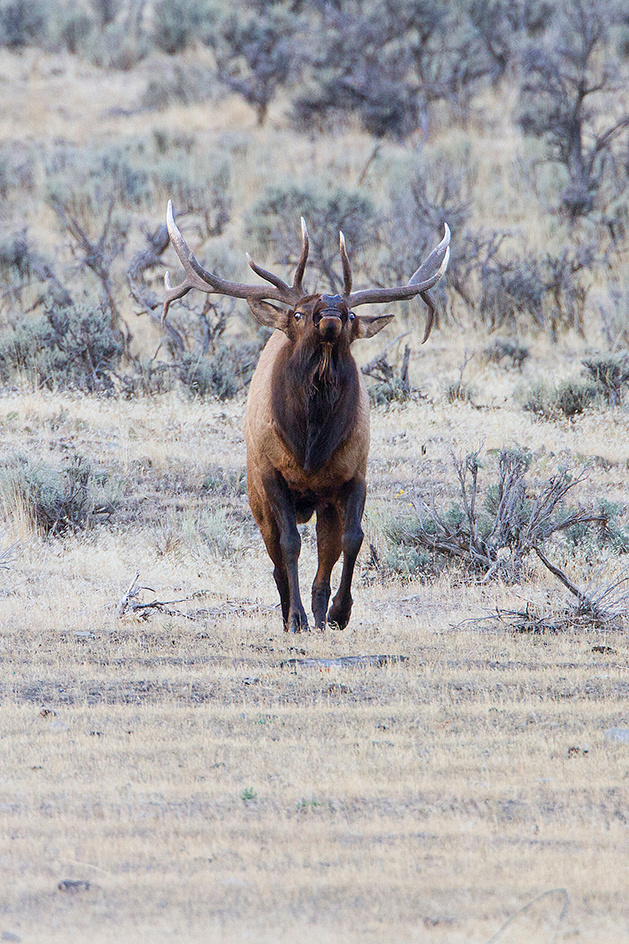

Can you hear me now?
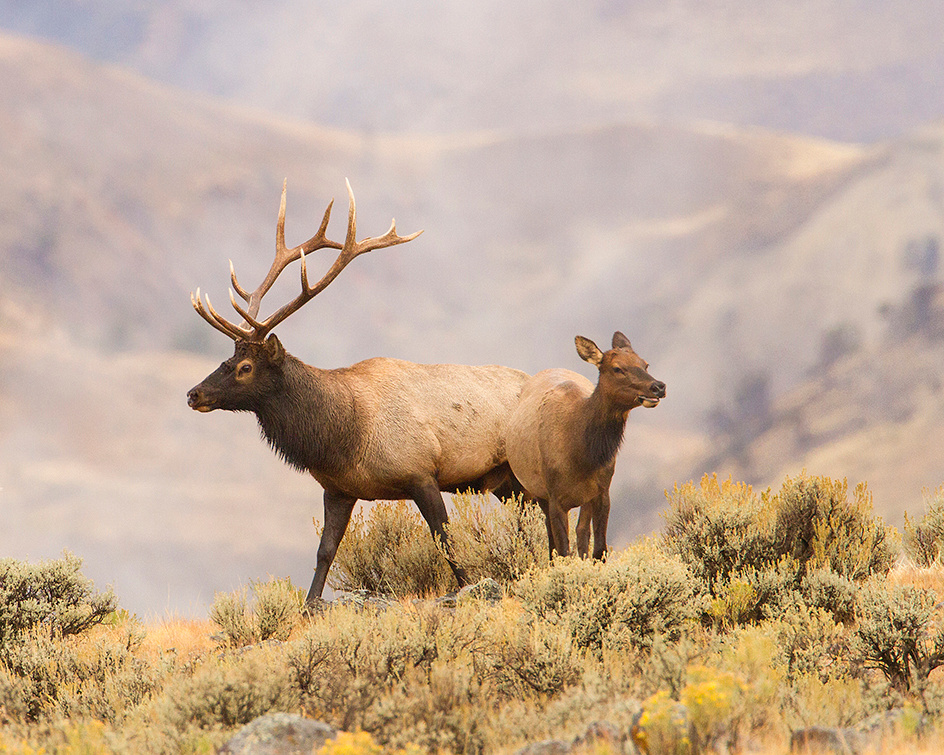



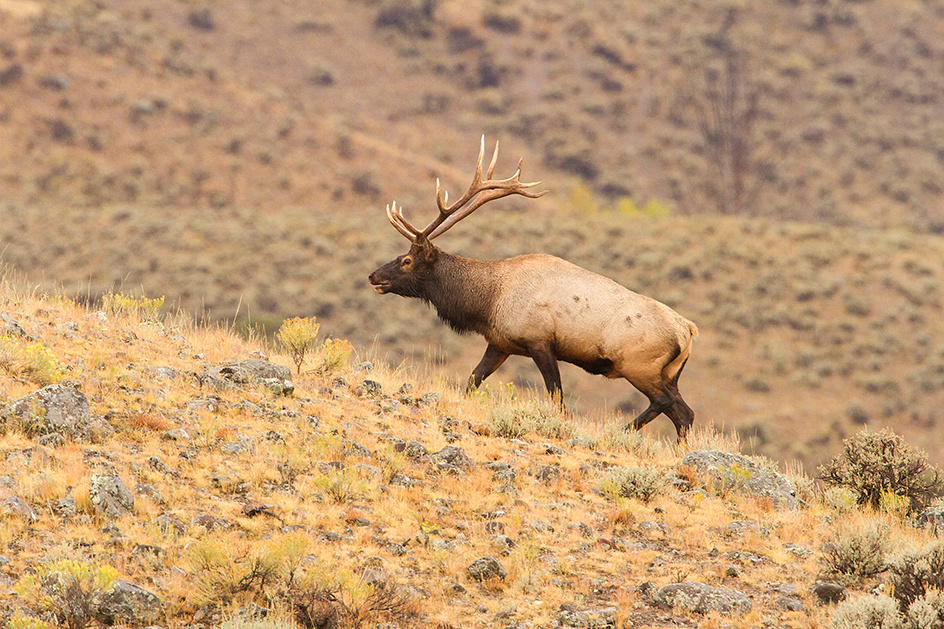

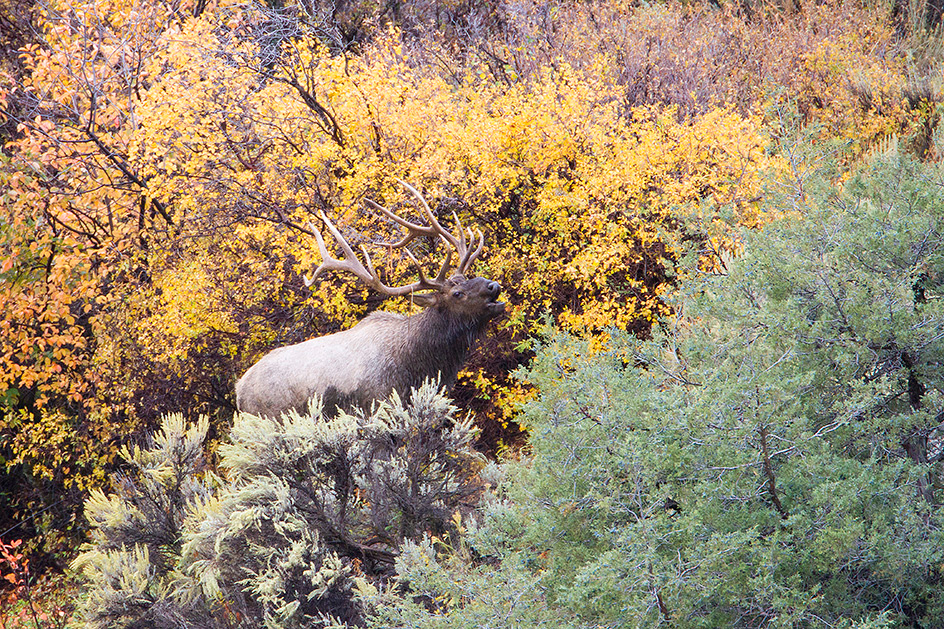
 Nothing like a good roll in the mud before a stroll with the girls.
Nothing like a good roll in the mud before a stroll with the girls.


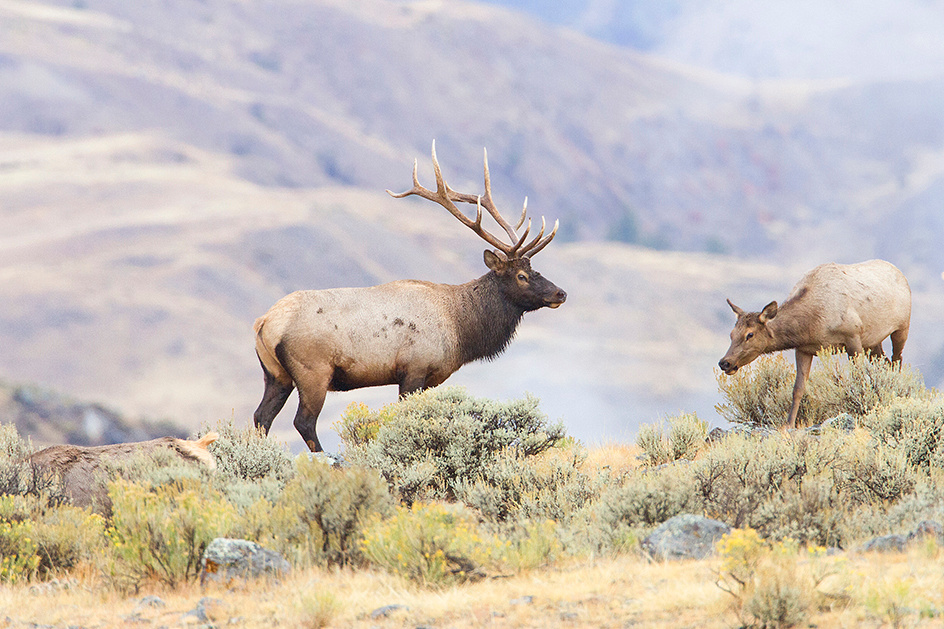
 I had several opportunities to get away from the roads and capture bulls on ridge lines with impressive backdrops.
I had several opportunities to get away from the roads and capture bulls on ridge lines with impressive backdrops.

 I have a tendency to attempt to capture frame filling wildlife images. Lately, I have tried some captures where the subject is relatively small in the frame. The image above turned out better than I had hoped. It was taken under somewhat foggy, low light conditions at a distance. The bull had just herded his cows over the ridge and stopped to listen to a nearby bull bugle.
I have a tendency to attempt to capture frame filling wildlife images. Lately, I have tried some captures where the subject is relatively small in the frame. The image above turned out better than I had hoped. It was taken under somewhat foggy, low light conditions at a distance. The bull had just herded his cows over the ridge and stopped to listen to a nearby bull bugle.
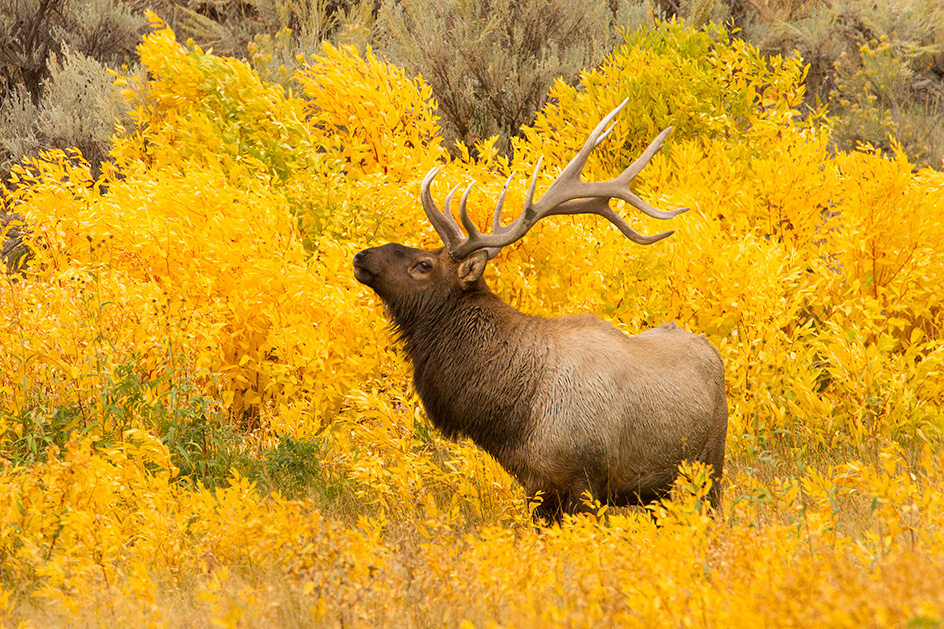
 Probably my favorite elk image of the trip. A mature roman nosed bull showing of his rack to a rival in a patch of wonderful golden color.
Probably my favorite elk image of the trip. A mature roman nosed bull showing of his rack to a rival in a patch of wonderful golden color.
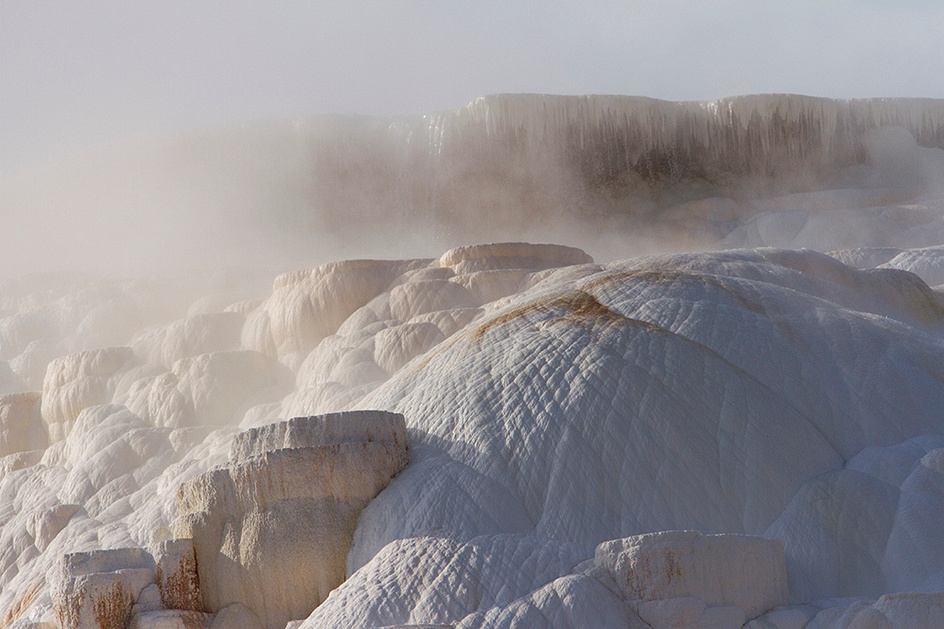
 Mammoth Hot Springs on a 28 degree morning.
Mammoth Hot Springs on a 28 degree morning.
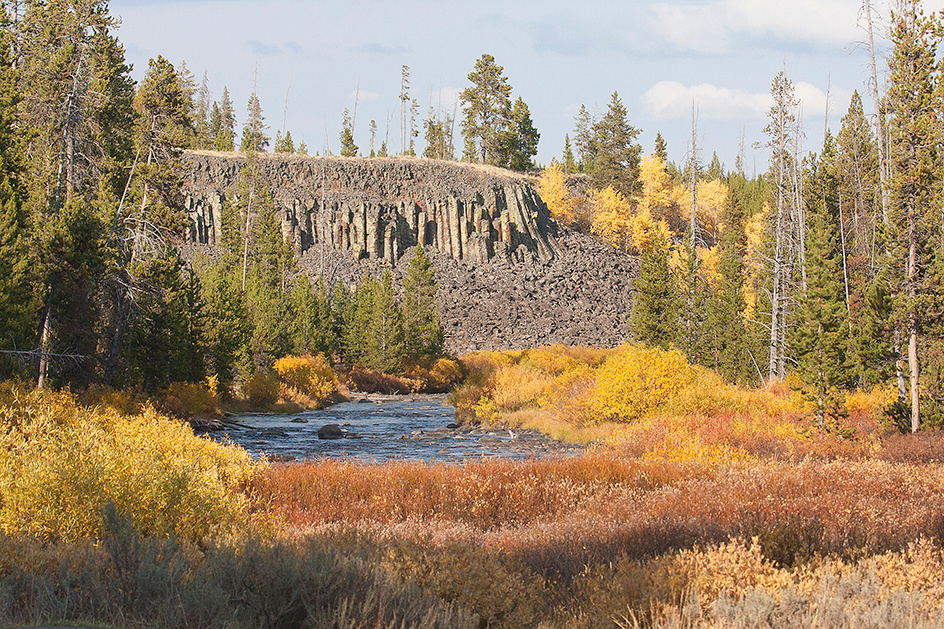

The Tetons certainly had superior fall color photo opportunities, but Yellowstone also offered some stunning landscape photo opportunities including this image from Sheepeater Cliffs.
I would highly recommend a visit to Yellowstone in either mid May or late September. Photo opportunities are quite different during each time period and the crowds are certainly less than during the main visitor season.
I feel that in at least 2016, the very best time to visit Grand Teton National Park is during mid-September. Fall colors are at their peak and early snows provide a dusting on the mountains without adversely affecting travel.
Yellowstone - May 2016 a
We visited Yellowstone in mid-May in attempt to photograph wildlife without the crowds of summer. We were successful on both counts. We spent five full days in the park, covering virtually all of the open roads. Weather was not great for photography. We rarely saw the sun in the mornings or evenings. We had snow, hail, fog, and torrential thunderstorms part of every day. We chose to stay in Gardiner Montana on the banks of the Yellowstone River. We had an amazing view of Electric Peak from our front door.


Three of the five mornings we were treated to elk on our front porch, pruning the landscaping. The image below is of the recently restored Roosevelt Arch with one of the many Gardiner resident elk. The image was captured handheld with a 100mm lens and a shutter speed of 1/30 of a second. I am quite amazed that it turned out as well as it did under those conditions. I cloned out a yield sign mounted on the arch.
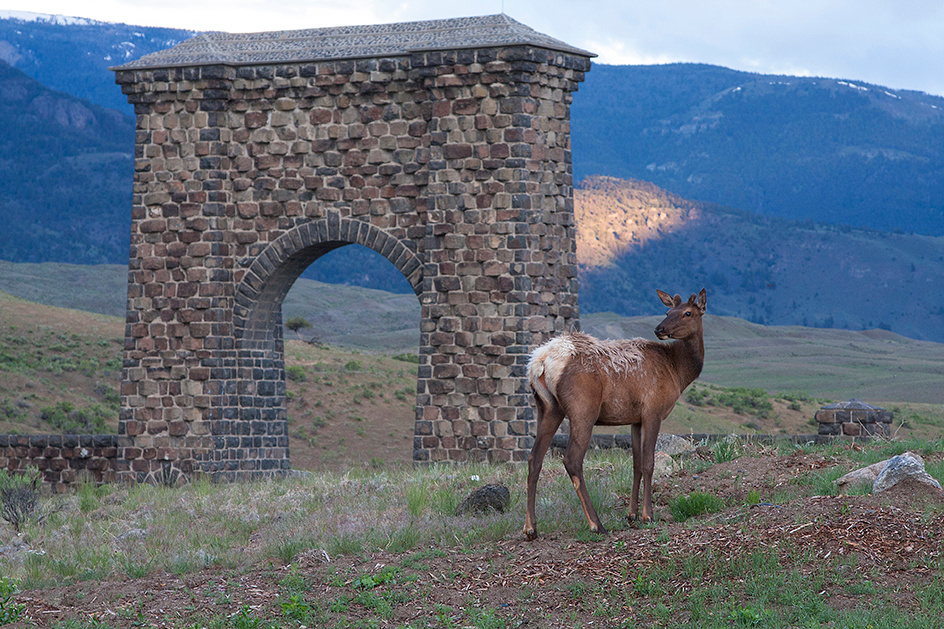

Spring is a time of much activity with bison and elk dropping calves. Bison calves were abundant and we observed thousands of bison with large herds in Lamar Valley.
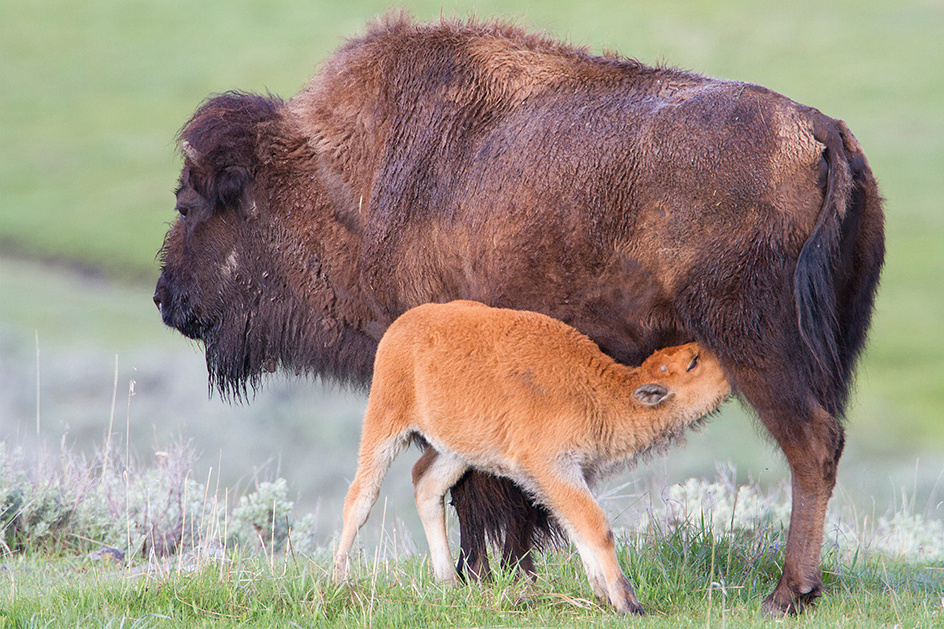



Young bison are quite playful. The calf below is kicking up his heels and preparing to head butt his mom. Note the remains of the umbilical cord.
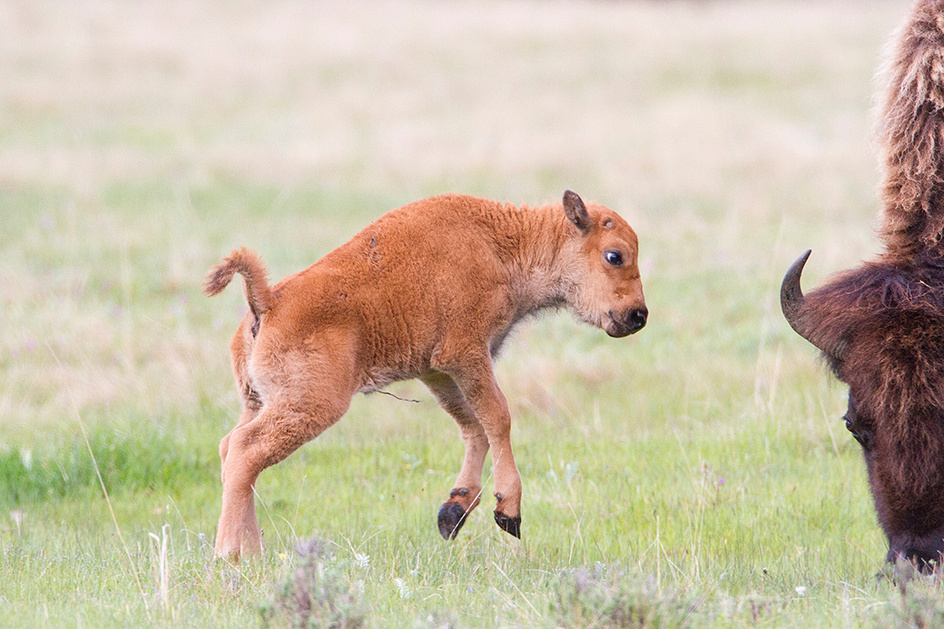

Bison nursing calves were a common sight. The locals call the calves "red dogs".
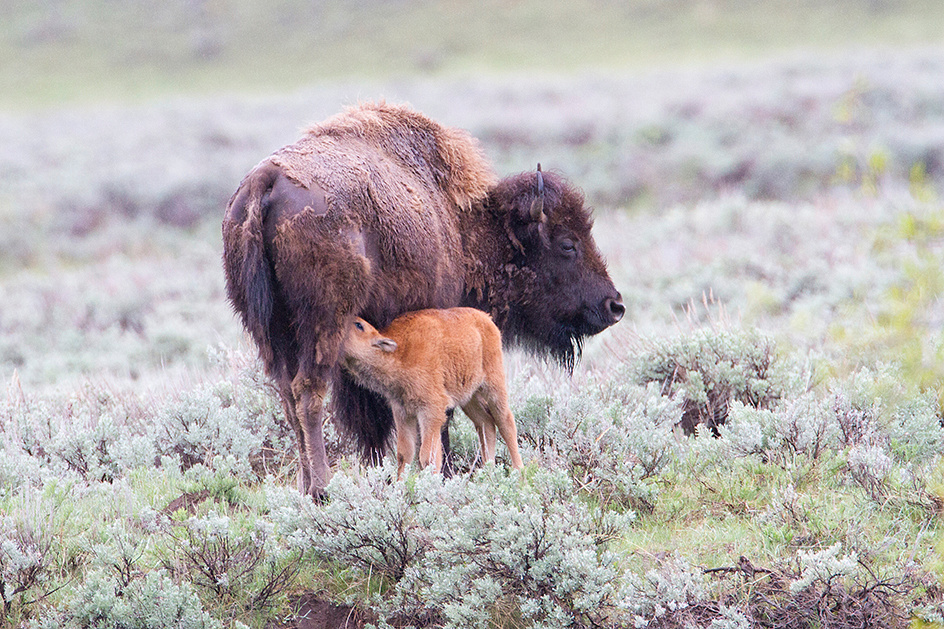
 One of the classic Yellowstone images I had hoped to capture was a bison herd river crossing. I got my chance on the 3rd morning. Unfortunately, they chose to cross on the Lamar River bridge. They even had a crossing guard!
One of the classic Yellowstone images I had hoped to capture was a bison herd river crossing. I got my chance on the 3rd morning. Unfortunately, they chose to cross on the Lamar River bridge. They even had a crossing guard!
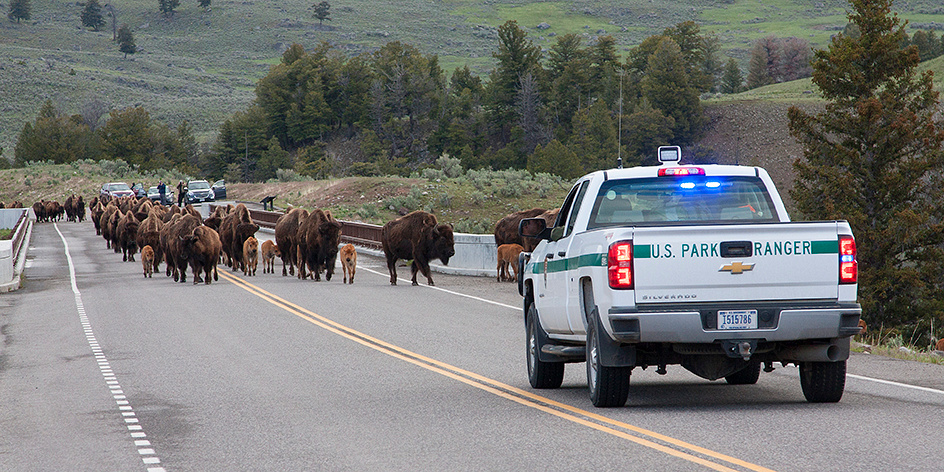

Black bears were also quite common, especially in the area near Tower. We ended up observing and photographing six sows with cubs and a single boar. The boar is pictured below.

 A lot of my black bear photos were captured under low light conditions, so I was forced to use higher ISO speeds than I prefer.
A lot of my black bear photos were captured under low light conditions, so I was forced to use higher ISO speeds than I prefer.
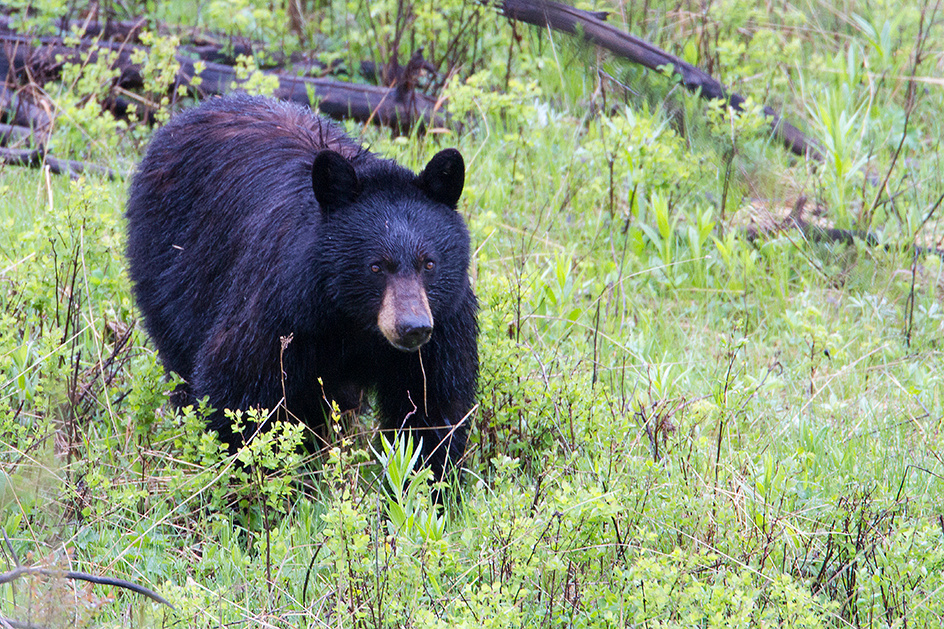

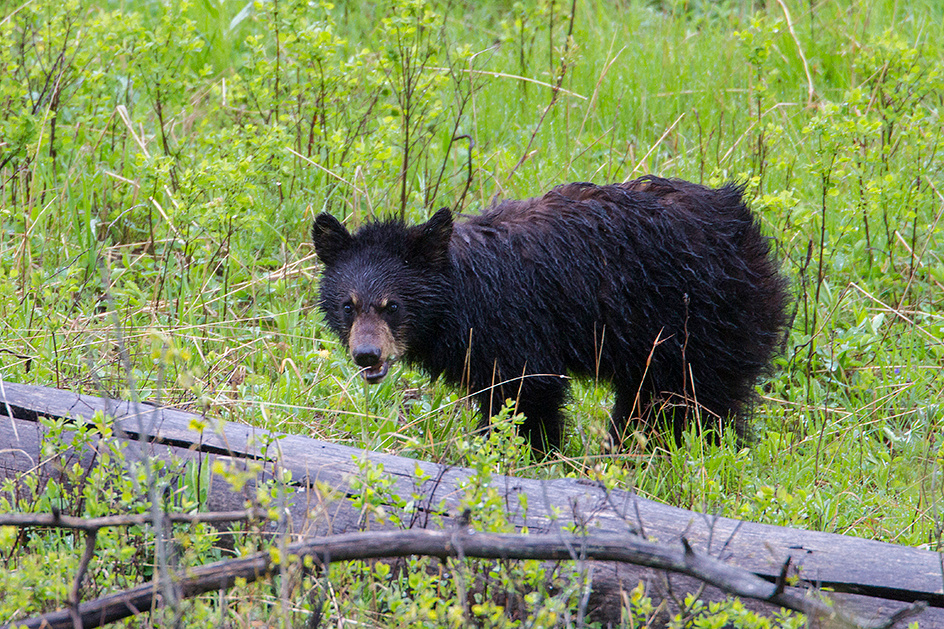
 All the black bears we saw were busy foraging and only rarely gave any direct eye contact. I finally got the cub above to look at me for a frame or two.
All the black bears we saw were busy foraging and only rarely gave any direct eye contact. I finally got the cub above to look at me for a frame or two.
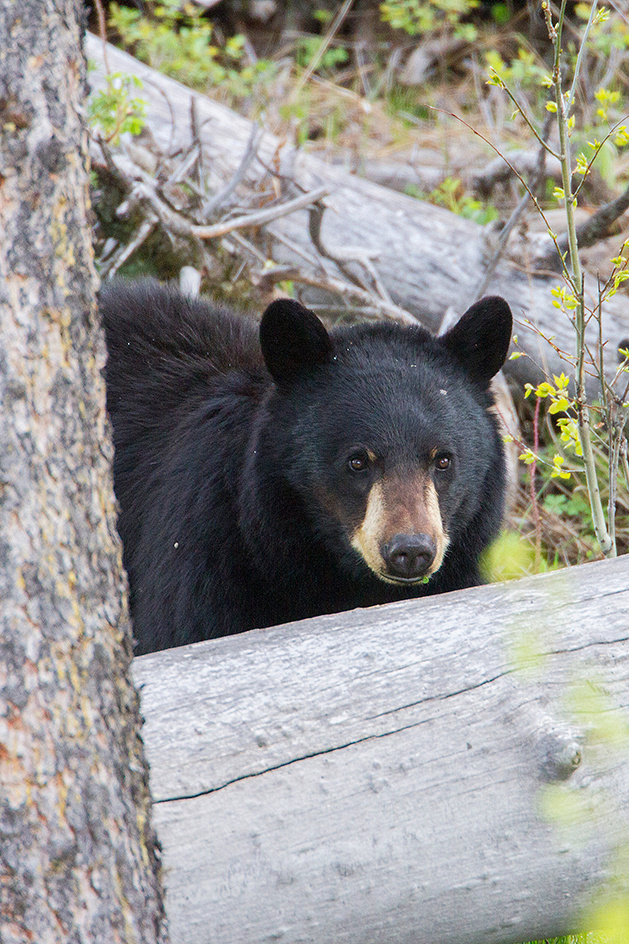

Census data indicate that only about 60 moose reside in Yellowstone, so we were fortunate to find both a young bull and a cow in separate ends of the park. Pictured below is an image of the cow foraging in Willow Park.
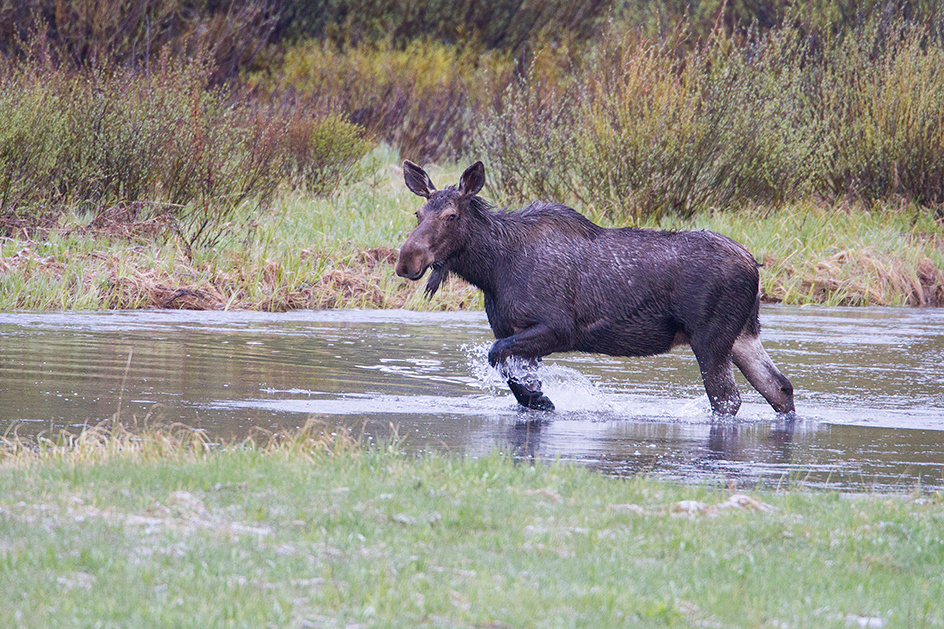
 We saw several coyotes every day. They are incredibly tame in the park and hunted within feet of our vehicle. The coyote below has just captured a vole at minimum focus distance.
We saw several coyotes every day. They are incredibly tame in the park and hunted within feet of our vehicle. The coyote below has just captured a vole at minimum focus distance.
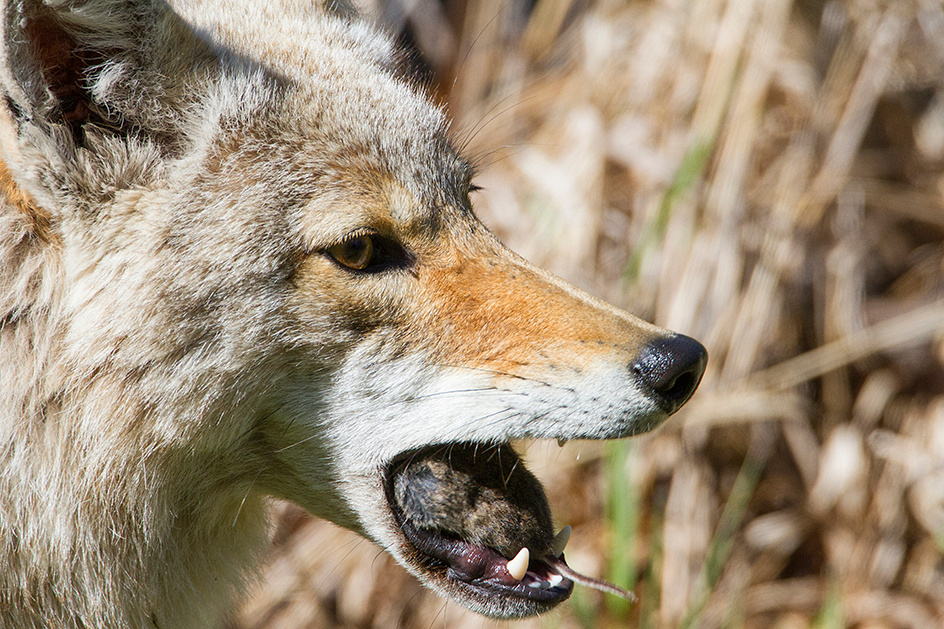
 The coyote below was photographed with another mousing in Lamar Valley in decent morning light.
The coyote below was photographed with another mousing in Lamar Valley in decent morning light.
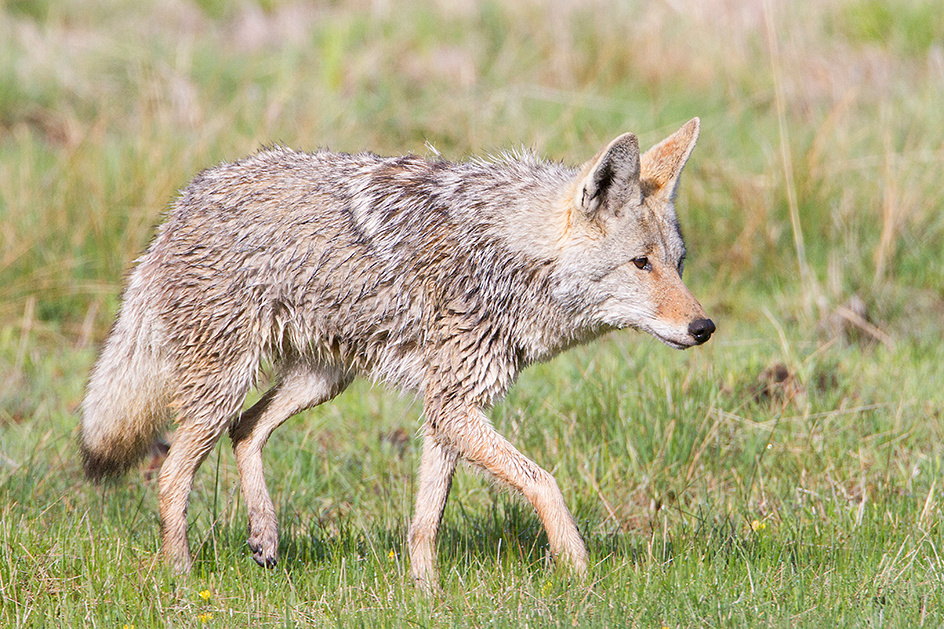
 Elk were extremely common, although we only saw six mature bulls. The bull pictured below posed in the only spot of light on the hillside. Dramatic lighting and a regal pose make this one of my favorite images from the trip.
Elk were extremely common, although we only saw six mature bulls. The bull pictured below posed in the only spot of light on the hillside. Dramatic lighting and a regal pose make this one of my favorite images from the trip.
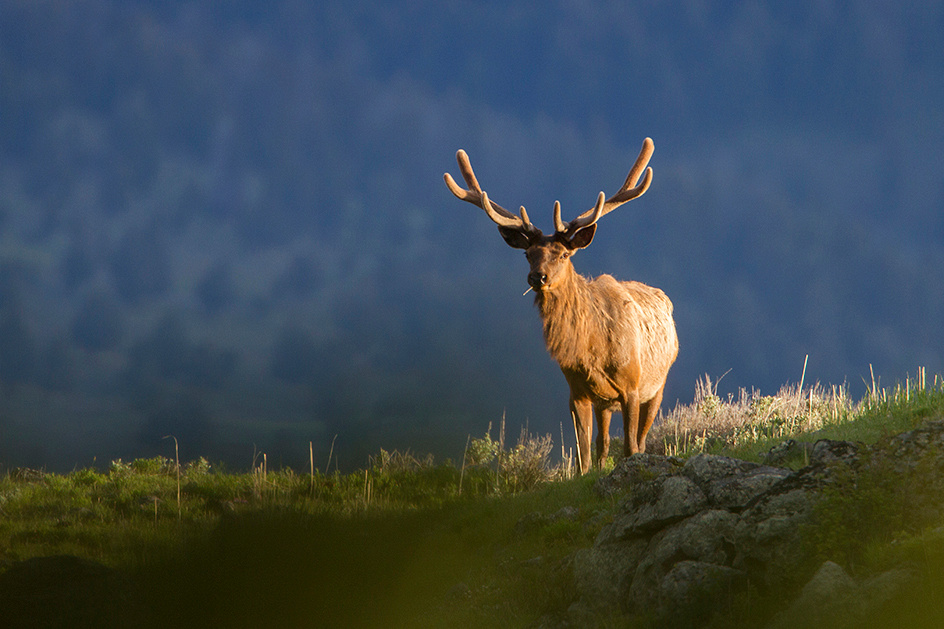

The bull pictured below was in Hayden Valley and seems to have a fairly serious plumbing issue.

 The elk were just beginning to calve. We only saw two calves and both were very wobbly walkers indicating that they had been born only recently. The image below was captured in Gardiner near sunset.
The elk were just beginning to calve. We only saw two calves and both were very wobbly walkers indicating that they had been born only recently. The image below was captured in Gardiner near sunset.

 Another species that I had hoped to photograph was red fox. Becky found this little vixen hanging out at the Petrified Tree trailhead. She posed for several hundred closeups.
Another species that I had hoped to photograph was red fox. Becky found this little vixen hanging out at the Petrified Tree trailhead. She posed for several hundred closeups.
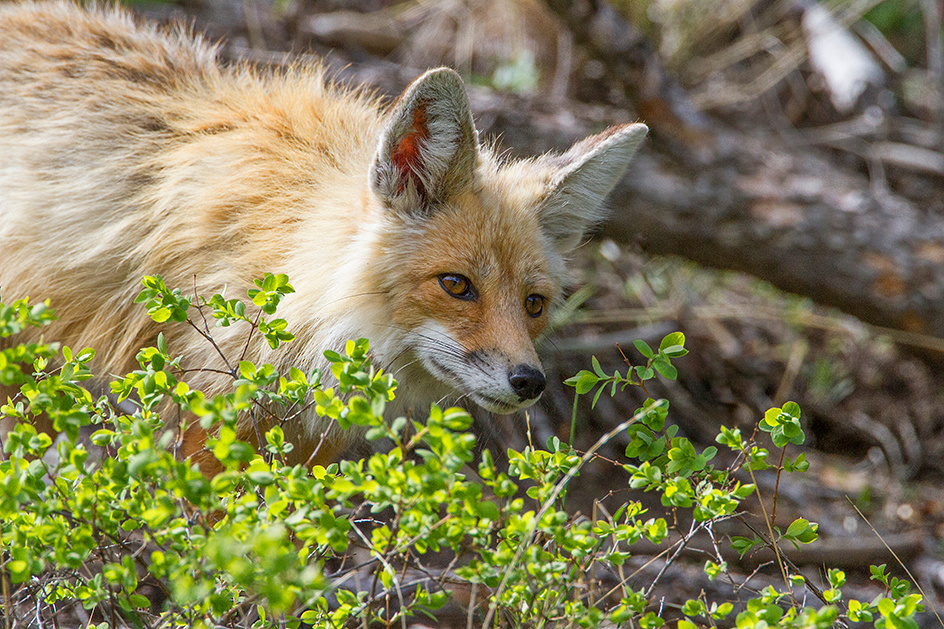

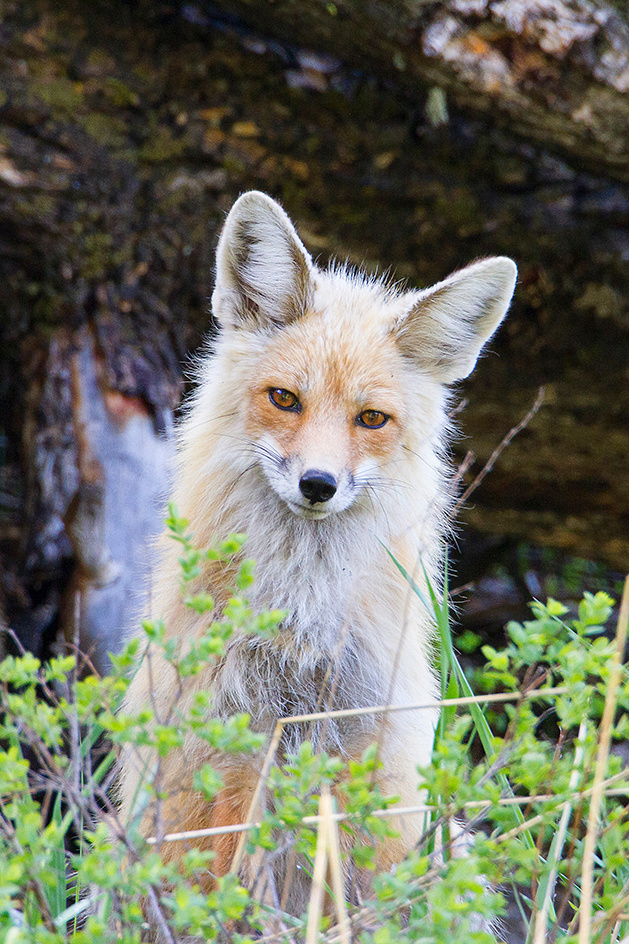

Pronghorn were common near Gardiner and in Lamar Valley. We saw some incredible bucks daily between Tower Junction and Slough Creek.
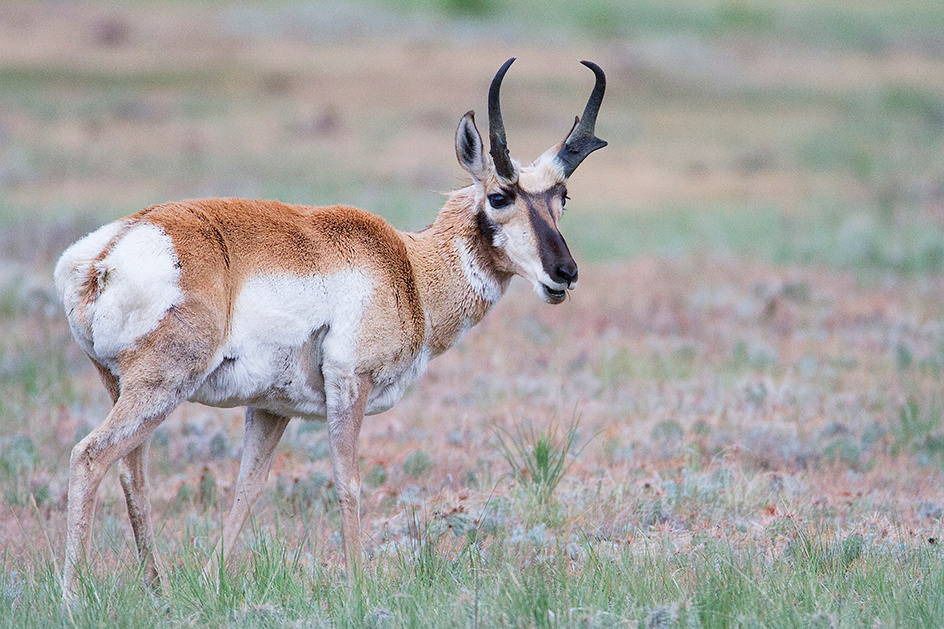



In addition to the many herds of wildlife we also observed large aggregations of human "wolf watchers" at Slough Creek and Lamar Valley. On several days, over 100 watchers with spotting scopes, cameras, or binoculars were present at Slough Creek where a very distant wolf den with pups was visible. An interesting way to spend your day in the park.

 We attempted to locate pika in the park at several locations where we had observed them on our last visit. No luck, but we did see any number of yellow-bellied marmot in those same locations.
We attempted to locate pika in the park at several locations where we had observed them on our last visit. No luck, but we did see any number of yellow-bellied marmot in those same locations.
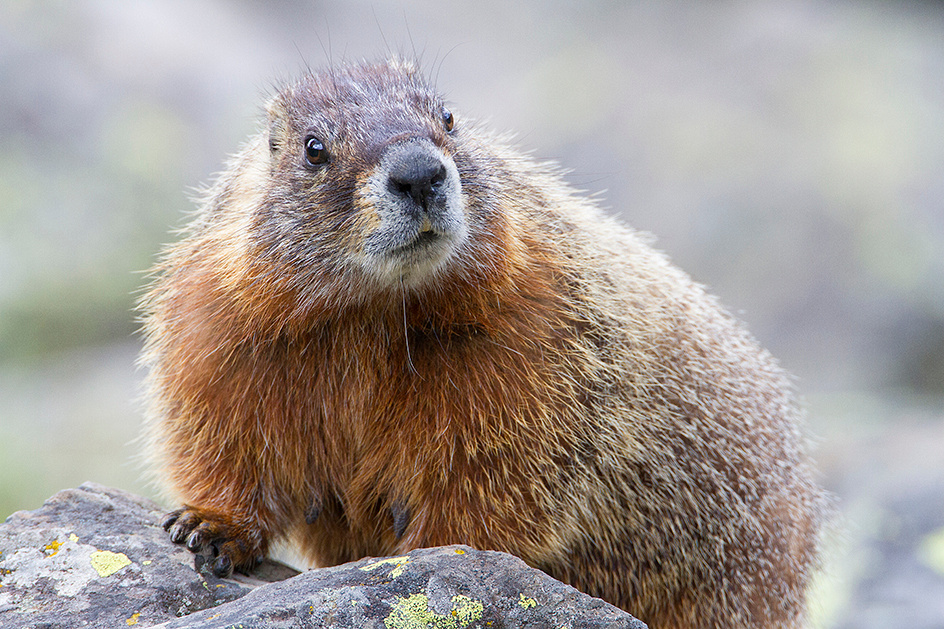
 One afternoon we decided to take a drive out to the southeastern entrance over Sylvan Pass. Near the top of the pass we encountered 6 mature big horned sheep rams. They were on the edge of a cliff along the road and it was only with great difficulty that I could back up far enough to get the majority of a ram's head in the frame while remaining on the top of the cliff ledge. A very lucky find and a challenging photo opp.
One afternoon we decided to take a drive out to the southeastern entrance over Sylvan Pass. Near the top of the pass we encountered 6 mature big horned sheep rams. They were on the edge of a cliff along the road and it was only with great difficulty that I could back up far enough to get the majority of a ram's head in the frame while remaining on the top of the cliff ledge. A very lucky find and a challenging photo opp.
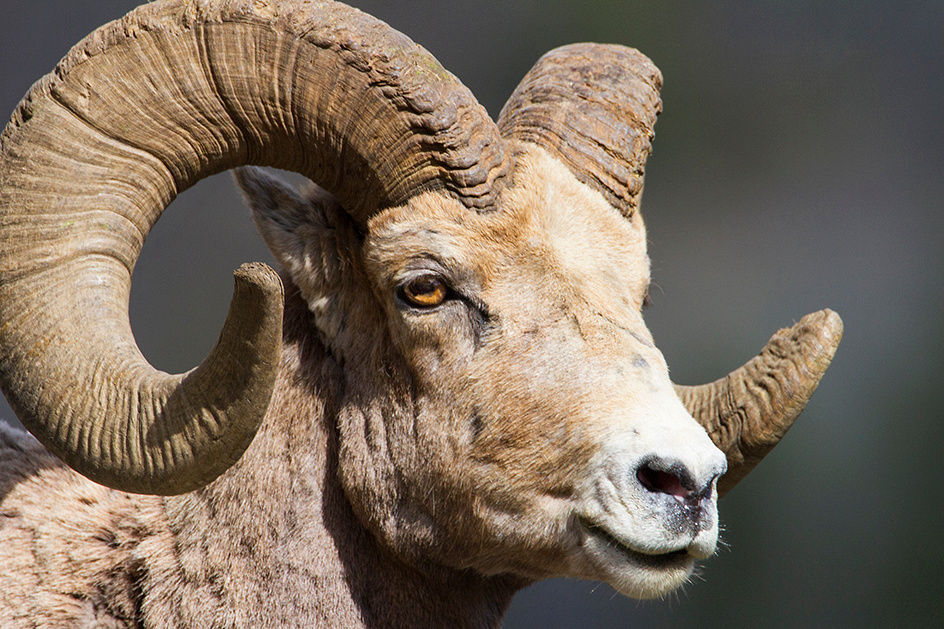


 While we had at least some snow every day we were in the park, relatively little snow was present even at higher elevations, like shown in this image captured at Craig Pass.
While we had at least some snow every day we were in the park, relatively little snow was present even at higher elevations, like shown in this image captured at Craig Pass.

 One of the species that all photographers hope to encounter is grizzly bear. At one location in Lamar Valley we could see (via spotting scope) three separate and very distant grizzly. The image below is a very large crop and the best image of a wild grizzly I was able to obtain on this trip.
One of the species that all photographers hope to encounter is grizzly bear. At one location in Lamar Valley we could see (via spotting scope) three separate and very distant grizzly. The image below is a very large crop and the best image of a wild grizzly I was able to obtain on this trip.

 I did have somewhat better photo opportunities on grizzly bears at the Wolf and Grizzly Bear Discovery Center at West Yellowstone. This non-profit is a small, but very well done museum/zoo dedicated to bear and wolf biology. The facility houses "problem bears" and has several small wolf packs in somewhat natural looking enclosures. It was very overcast on the morning we visited this facility so direction of light was not an issue. This location is probably best as an afternoon venue to obtain the best light.
I did have somewhat better photo opportunities on grizzly bears at the Wolf and Grizzly Bear Discovery Center at West Yellowstone. This non-profit is a small, but very well done museum/zoo dedicated to bear and wolf biology. The facility houses "problem bears" and has several small wolf packs in somewhat natural looking enclosures. It was very overcast on the morning we visited this facility so direction of light was not an issue. This location is probably best as an afternoon venue to obtain the best light.
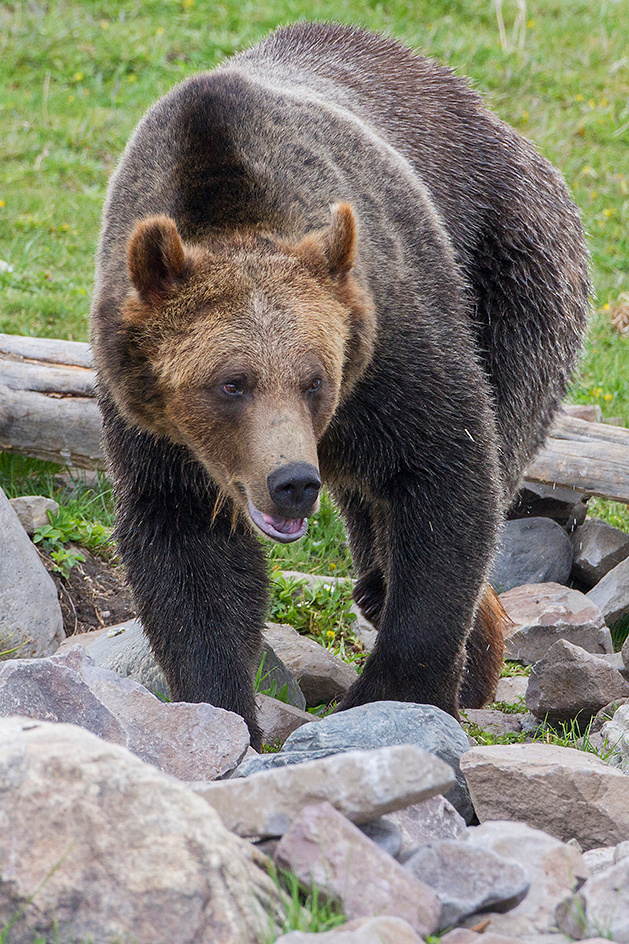

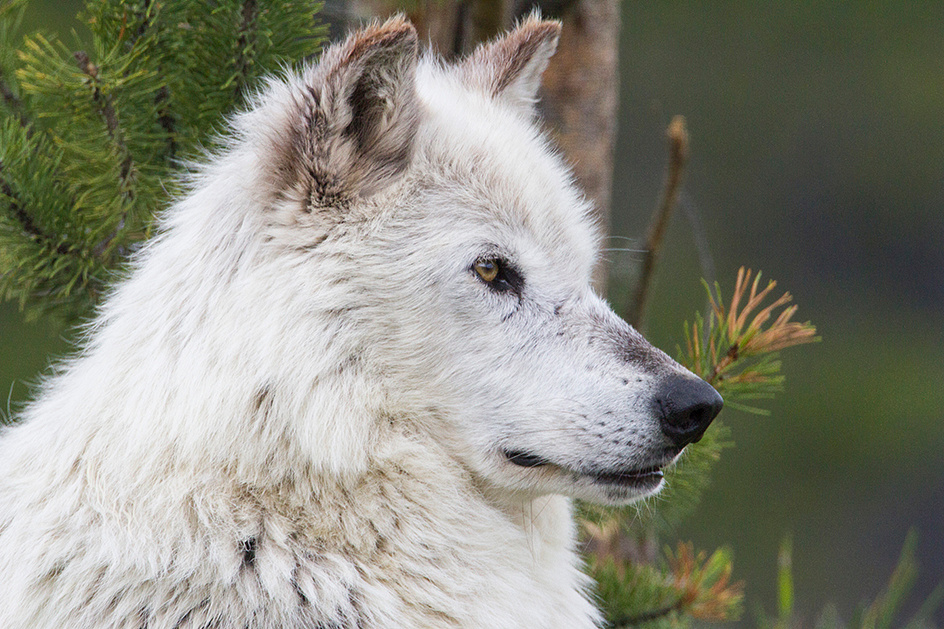
 Yellowstone remains my favorite National Park and one of my favorite photo destinations. May is a great time to visit the park and I highly recommend it. My wife Becky served as my driver and spotter and rarely got to see our Gardiner lodging in the daylight. I ended up taking about 2,600 images over the five days. A fantastic trip.
Yellowstone remains my favorite National Park and one of my favorite photo destinations. May is a great time to visit the park and I highly recommend it. My wife Becky served as my driver and spotter and rarely got to see our Gardiner lodging in the daylight. I ended up taking about 2,600 images over the five days. A fantastic trip.
November Mule Deer
Fall is a great season to visit the high desert of eastern California and Oregon. Juniper and sage habitat can be interesting at any time of the year, but November is my favorite month to visit as it encompasses much of the mule deer rut. Large bucks are much more visible and approachable during the rut and occasionally an exceptional buck can be photographed.


This buck was photographed in the Tulelake NWR, of northern California. He was actively courting a doe was was very reluctant to leave her. I had his attention in this photo, but he rather quickly lost interest in me and returned to his courtship. Rather a busy background in this image.
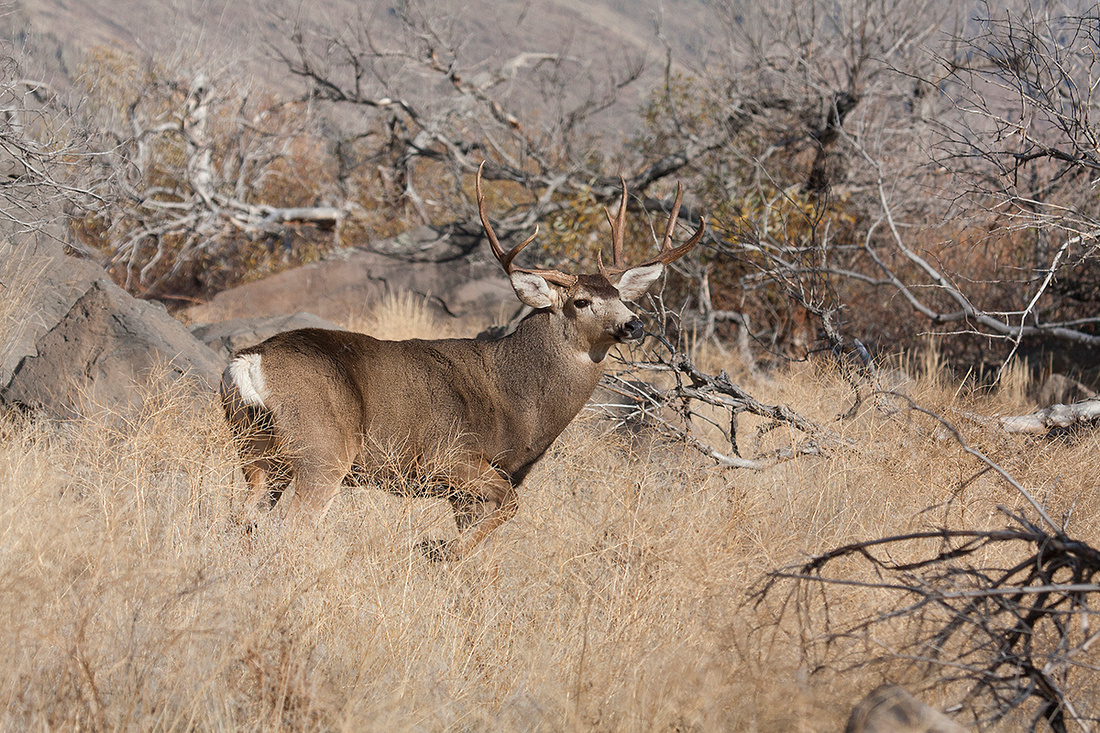
 I normally make a trip each November through selected winter ranges in northern California, including Day Bench, Fall River Valley, Big Valley, Devil's Garden, Timber Mountain, Lava Beds, and Tulelake NWR. This year I extended the trip to include the Hart Mountain Antelope Refuge and Malheur NWR. The Antelope Refuge was disappointing, but bucks were abundant at Malheur. I was fortunate to locate and photograph the buck below in rapidly fading daylight.
I normally make a trip each November through selected winter ranges in northern California, including Day Bench, Fall River Valley, Big Valley, Devil's Garden, Timber Mountain, Lava Beds, and Tulelake NWR. This year I extended the trip to include the Hart Mountain Antelope Refuge and Malheur NWR. The Antelope Refuge was disappointing, but bucks were abundant at Malheur. I was fortunate to locate and photograph the buck below in rapidly fading daylight.


Truly an exceptional animal. Like the previous buck, this one was not about to leave his prospective mate, and allowed me a few images. I had to shoot wide open at relatively slow shutter speeds. He laid down in the teasel and disappeared about the time it was to dark to shoot. His antlers show nicely against the clean complimentary background.
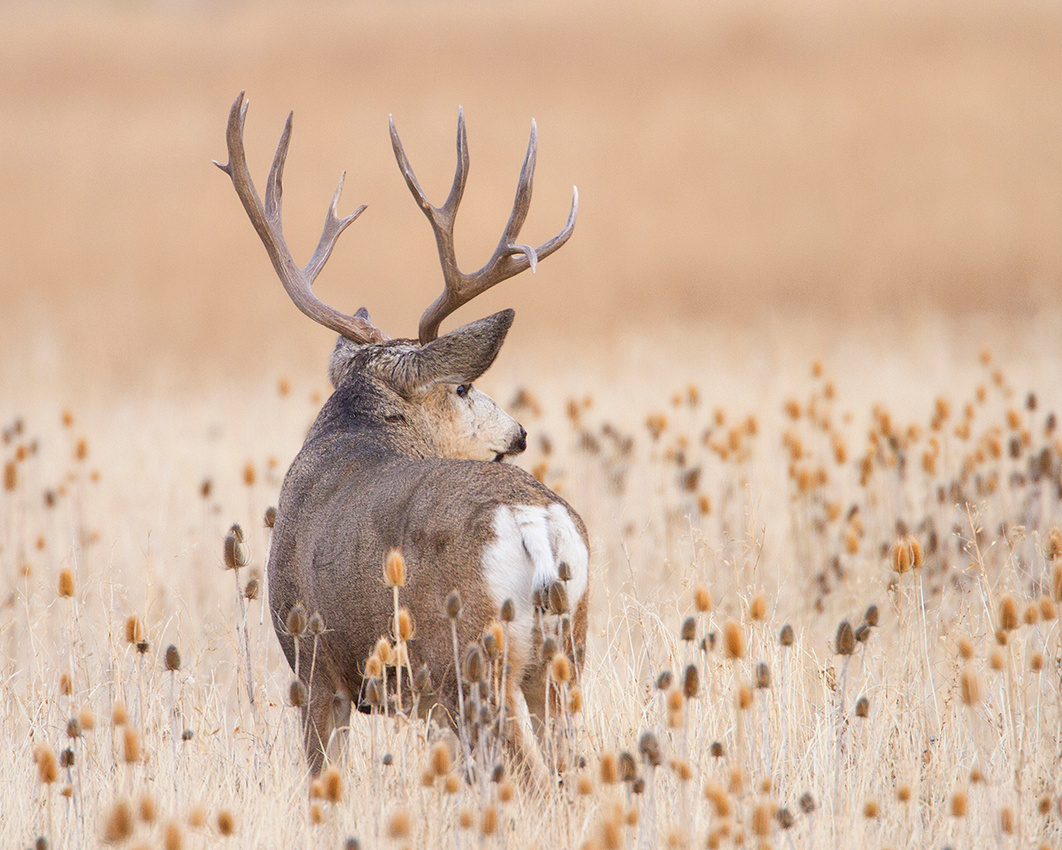





Shortly after losing the light we pulled the truck over and enjoyed a high desert sunset (cranes added in Photoshop). Pretty nice way to spend the day.
